

Charity-Tour von der Nordsee zum Atlantik
3000 Kilometer, 10 Tage, 6 Moped-Begeisterte, 1 guter Zweck: Für die Crew von Nordsee Atlantik geht es im August auf große Tour. Doch wie ist es eigentlich dazu gekommen und wie bereitet das Team sich und seine Mopeds auf die Reise vor? Das hat uns Simmenandi im Vorfeld verraten.
Im Mittelpunkt der Tour steht für alle, etwas mit Freunden zu unternehmen und dabei noch einen guten Zweck zu unterstützen. Der gute Zweck: Das ist das Sammeln von Spenden für das das Kinder- und Jugendhospiz Joshuas Engelreich in Wilhelmshaven.
Kennengelernt haben sich die sechs Moped-Fans vor ungefähr zwei Jahren auf dem sozialen Netzwerk Instagram. „Auf Moped-Treffen in Norddeutschland haben wir uns dann zum ersten Mal gesehen und festgestellt, dass wir gleich ticken“, erklärt Simmenandi. Denn alle verbindet die uneingeschränkte Leidenschaft zu kultigen Zweirädern. Eine kurze Vorstellung:
Jan (21) | Puch
Andreas (34) | Kreidler
Andreas (38) alias Simmenandi | S50 B
Dominik (39) | Schwalbe KR 51/2
Marco (46) | Zündapp Tyo CS 25
Nobby (58) | Hercules Prima 5s
Bilder von den Crew-Mitgliedern gibt es auf ihrer Instagramseite Nordsee Atlantik Tour .
Gefahren werden täglich zwischen 250 und 300 Kilometern. Ausgangspunkt für die Tour ist Papenburg an der Nordsee. Von dort geht es am 13. August über Rotterdam, Dünkirchen, Calais und Le Havre nach Cherbourg-en-Cotentin am Atlantik. „Bei der Planung ist mir sofort der Brösel-Film Werner – Gekotzt wird später! eingefallen“, sagt der 38-Jährige. Sein erklärtes Ziel bei der Ankunft: Erstmal ab in den Atlantik.
Zurück nach Papenburg geht es über Paris, Reims, Maastricht, Essen und Münster.
Die Vorbereitung:
Mehr Alltagsfahrten und längere Strecken auf dem Moped: Zur Vorbereitung haben die Crew-Mitglieder ihre Kilometeranzahl deutlich erhöht. So geht es für Simmenandi täglich 50 Kilometer zur Arbeit. So können Schwachstellen am Moped bereits im Vorfeld entdeckt und behoben werden.
„Die SIMSON wird sowieso laufen. Da mache ich mir mehr sorgen um mein Wohlbefinden auf dem Moped“, hat uns Simmenandi verraten. Während zwei der Crew-Mitglieder bei der Fahrt auf einen Anhänger setzen, reist der Niedersachse mit möglichst wenig Ballast.
Klamotten, Zelt, Schlafsack und MZA-Ersatzteile transportiert er auf dem Gepäckträger sowie in zwei modifizierte Fahrradtaschen rechts und links an der SIMSON. Weiteren Platz bietet eine Tasche beim Sozius sowie eine Fahrradlenkertasche.
Ansonsten sind zur Sicherheit alle Fahrer in der Pannenhilfe und auch darüber hinaus gut vernetzt für spontane Hilferufe.
Was Simmenandi anderen rät, die eine ähnliche Tour unternehmen wollen: „Man muss einfach verrückt sein und das Moped-Fahren durch und durch lieben. Denn so viele Kilometer am Tag zu fahren ist auf jeden Fall eine Herausforderung.“
Wir wünschen der Crew gute Fahrt und sind schon gespannt auf die Eindrücke von der Tour.
Spendenkonto:
mission:lebenshaus gGmbH
Kinderhospiz Joshua
Bank für Sozialwirtschaft
IBAN: DE50 2512 0510 0004 4724 02
BIC: BFSWDE33HAN
Verwendungszweck: Atlantiktour
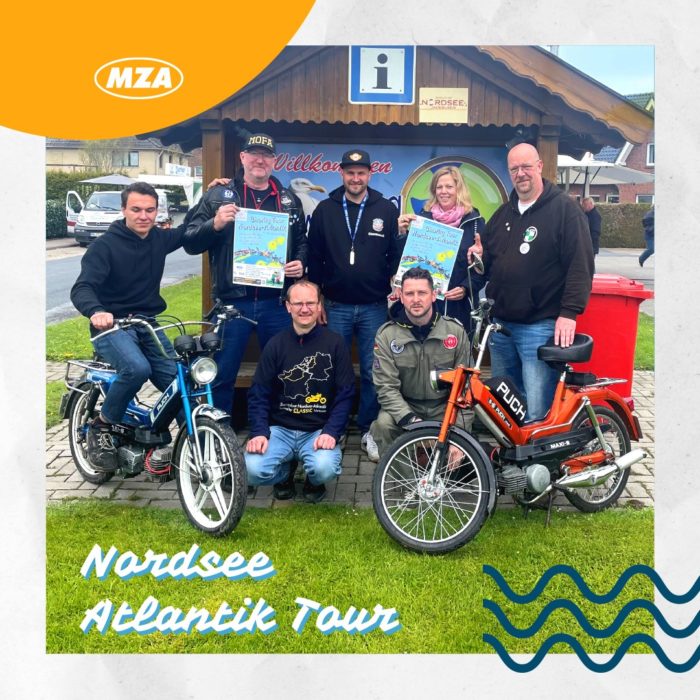
how to write a essay on theme
- PRO Courses Guides New Tech Help Pro Expert Videos About wikiHow Pro Upgrade Sign In
- EDIT Edit this Article
- EXPLORE Tech Help Pro About Us Random Article Quizzes Request a New Article Community Dashboard This Or That Game Popular Categories Arts and Entertainment Artwork Books Movies Computers and Electronics Computers Phone Skills Technology Hacks Health Men's Health Mental Health Women's Health Relationships Dating Love Relationship Issues Hobbies and Crafts Crafts Drawing Games Education & Communication Communication Skills Personal Development Studying Personal Care and Style Fashion Hair Care Personal Hygiene Youth Personal Care School Stuff Dating All Categories Arts and Entertainment Finance and Business Home and Garden Relationship Quizzes Cars & Other Vehicles Food and Entertaining Personal Care and Style Sports and Fitness Computers and Electronics Health Pets and Animals Travel Education & Communication Hobbies and Crafts Philosophy and Religion Work World Family Life Holidays and Traditions Relationships Youth
- Browse Articles
- Learn Something New
- Quizzes Hot
- This Or That Game New
- Train Your Brain
- Explore More
- Support wikiHow
- About wikiHow
- Log in / Sign up
- Education and Communications
- College University and Postgraduate
- Academic Writing
How to Write a Theme Essay
Last Updated: January 4, 2024 Fact Checked
This article was co-authored by Jake Adams . Jake Adams is an academic tutor and the owner of Simplifi EDU, a Santa Monica, California based online tutoring business offering learning resources and online tutors for academic subjects K-College, SAT & ACT prep, and college admissions applications. With over 14 years of professional tutoring experience, Jake is dedicated to providing his clients the very best online tutoring experience and access to a network of excellent undergraduate and graduate-level tutors from top colleges all over the nation. Jake holds a BS in International Business and Marketing from Pepperdine University. There are 9 references cited in this article, which can be found at the bottom of the page. This article has been fact-checked, ensuring the accuracy of any cited facts and confirming the authority of its sources. This article has been viewed 206,050 times.
Starting the Essay

- For example, an essay prompt may ask you to reflect on the theme of good versus evil in John Steinbeck's East of Eden .

- Make a list of everything you know about the topic. This can be information you learned in class, as well as information you found on your own.
- Write down keywords or key scenes in the text that respond to the essay prompt. Think about what words or scenes from the text come to mind when you think of a specific theme.
- For example, when you brainstorm ideas on East of Eden , you may write down any moments in the text that seem to speak to the theme of good and evil.

- Your thesis statement will need to address the theme, your primary example or examples, and the stance you will take on the topic.
- For example, your thesis might be: "In East of Eden , John Steinbeck rejects the Biblical idea of good and evil and instead focuses on the contradictions and complications found in good and evil."

- Introduction: Discuss landscape as metaphor, include thesis statement.
- Body: Describe mountains in opening scene, elaborate on how they symbolize good vs. evil, state how characters live between the mountains, showing how people are caught between good and evil.
- Conclusion: Restate thesis statement, return to landscape as metaphor.
Writing Your Essay

- Questions can make fun hooks for the reader. Ask a rhetorical question that relates to the theme of the essay, such as "How does one decide what is good and what is evil?"
- You can also use a quote from the text as the hook. Find a quote in the text that explores the themes and ideas you'll be discussing in your essay.

- For example, you may introduce the role of nature plays in the text to discuss the theme of good and evil. The first sentence of your body paragraph should discuss the role of nature. This will set up the paragraph and let the reader know what the focus of the paragraph will be.

- For example, you may discuss the use of nature in the text in one paragraph. The body of the paragraph should then use quotes and scenes in the text to support this idea.
- You might write,"The descriptions of the Gabilan Mountains in the text symbolize good and evil. The characters in the story live in the Salinas Valley, trapped in a gray area between these two extremes."

- Ask yourself, "What do I want my readers to have learned through this essay?"
- Remind readers about the essay's theme. Reference some of the arguments you made in the body of your essay, reinforcing how they support your original point.
Revising Your Essay

- Check that there are transitions between paragraphs. Look at the beginning of each paragraph to make sure they all flow well together.

- Print out your paper and proofread it. Oftentimes, errors are easier to catch on paper. If you can't print out your paper, try changing the size or type of the font. Anything that alters how the work looked when you wrote it can help alert you to errors. [13] X Trustworthy Source University of North Carolina Writing Center UNC's on-campus and online instructional service that provides assistance to students, faculty, and others during the writing process Go to source

- Be open to constructive feedback from friends and peers. This will only improve the essay and ensure it is at its best when you turn it in.
Expert Q&A

You Might Also Like

- ↑ Jake Adams. Academic Tutor & Test Prep Specialist. Expert Interview. 20 May 2020.
- ↑ https://penandthepad.com/write-essay-theme-book-2200.html
- ↑ https://wts.indiana.edu/writing-guides/how-to-write-a-thesis-statement.html
- ↑ https://www.grammarly.com/blog/essay-outline/
- ↑ https://www.grammarly.com/blog/how-to-write-a-hook/
- ↑ https://libguides.newcastle.edu.au/how-to-write-an-essay/conclusion
- ↑ https://owl.purdue.edu/owl/general_writing/the_writing_process/proofreading/steps_for_revising.html
- ↑ https://owl.purdue.edu/owl/general_writing/the_writing_process/proofreading/proofreading_suggestions.html
- ↑ https://writingcenter.unc.edu/tips-and-tools/editing-and-proofreading/
About This Article

When writing a theme essay, you’ll need to explore a given theme in the text you’re studying. Before you start your essay, brainstorm some notes about your theme, which you can then build your essay from. For example, if you have the theme of good and evil, think about which characters are mostly good or evil, any good or evil actions they take, description that uses light and darkness, and any religious context. In your intro, state your thesis, which should summarize your essay’s main argument. Then, choose 4 or 5 examples of your theme and write a paragraph exploring each one. Make sure you support your points with quotes from the text. In your conclusion, link your ideas back to your thesis statement. For more tips from our English co-author, including how to revise your essay to polish it up, read on! Did this summary help you? Yes No
- Send fan mail to authors
Reader Success Stories
Mar 13, 2018
Did this article help you?

Jul 29, 2017
Dec 18, 2016
Nov 8, 2016
Ashley Ding
Nov 22, 2016

Featured Articles

Trending Articles

Watch Articles

- Terms of Use
- Privacy Policy
- Do Not Sell or Share My Info
- Not Selling Info
Get all the best how-tos!
Sign up for wikiHow's weekly email newsletter
How to write a theme statement

When you get done with a reading assignment for school, usually an essay, novel, or short story, you'll sometimes be asked to write a theme statement.
The definition of a theme statement can vary, but essentially it's asking you to state what the piece of writing was about — not the plot, but what sort of insight or perspective does it give on life/the world/human nature?
Theme is also sometimes known as the "main idea" of a story.
But how do you find the theme of a story? And how do you write a theme statement?
To write a theme statement, follow these 3 steps:
- Pick the main topic addressed in the story
- Pinpoint the author's view on the topic
- Format that perspective using a theme statement template
Let's dive a little deeper:
Finding the theme of a story using topics
After you're finished reading the book, story, or essay (you did read it, right?!), think back on the main character or characters.
Did they undergo some kind of change throughout the journey? Did their outlook on life evolve in some way?
That's usually a pretty good place to start looking for the theme.
For example, maybe the story deals with the broad topic of "love." Well "love" by itself isn't a theme, but a specific perspective on love could be.
Try this exercise once you've found your topic. Fill in the blank:
"This author believes _____ about (topic)."
In our example about love, maybe the story's about how love conquers all. Or maybe it's about how love is fleeting and fickle.
Your theme at this point might look something like this:
"The author believes that true love doesn't really exist."
(A little dark, but hey, it's just an example!)
Using a theme statement template
Every teacher or instructor is going to have their own way of wanting you to present your theme statement, so be sure to get clarity on that directly from them.
That said, there are some agreed upon "rules" of writing theme statements.
- Don't include specific characters or plot points. This perspective on life should apply to people and situations outside the story.
- Don't be obvious. "War is bad," is not a theme. Dig a little deeper using details from the story. (What specifically is bad about war? How does it negatively impact the characters or the world of the story?)
- Don't make it advicey. "You should always be there for your family," isn't a theme, it's a suggestion. Keep your theme statement objective and based solely on evidence from the story ("The bond between family can overcome any obstacle.")
- Don't use cliches. "Once a cheater, always a cheater," or "Actions speak louder than words," aren't themes. They're just expressions people use all the time and have very little power or real insight.
Here is a general template you can use based on what we learned above:
"The central theme of (piece of writing) is (author's position on topic) ."
Alternatively, you could try: "In (piece of writing), (author) presents the idea that (position on topic)."
You may also be asked to use supporting details from the story to back up your theme statement. In that case, your full theme statement might look something like this:
"The central theme of (piece of writing) is (author's position on topic). When (event from the story) happens, it results in (blank), which demonstrates (some element of the theme)."
You're going to have to tweak and adjust this based on how much detail the assignment calls for and which examples from the text you choose to use, but it should be a good starting point!
Theme statement examples
OK, so what does it look like in action?
Here are some example theme statements from stories you're probably already familiar with (I'm doing these mostly to demonstrate how to use the template. I hope you'll put a lot of thought into your own theme statements and play around with different ideas before committing to one) :
In 'The Dark Knight Rises', Christopher Nolan presents the idea that true heroism requires complete and utter selflessness.
The central theme of 'Finding Nemo' is that fear is sometimes more dangerous than danger itself.
In 'Romeo and Juliet', Shakespeare presents the idea that love is more powerful than hate.
Hope this helps! And good luck!
Questions? Let me know in the comments.
Now Read This: Every method imaginable for finding and fixing your typos
You might also like..., flex your muscles: 7 creative exercises for copywriters & content marketers, member discussion.
How to Write a Clear Theme Statement (with Examples)
Have you been asked to write a theme statement? It might seem easy at first glance, because theme statements are so short — one sentence, or two at most. Coming up with a solid theme statement requires careful analysis, however. Here's how to write a strong theme statement for any work of art.
Theme Statement Basics
A theme is, in works of art, literature, film, and TV, the one overarching idea that defines the work. No matter the plot and the sub-themes explored in the work, the main theme will shine through in everything the work deals with. A theme statement is a short summary of that idea — a single sentence, or sometimes two, that lay the subject out for an audience.
Theme statements are helpful tools when analyzing a work. In the case of novels, movies, and TV shows, they can also be used to draw potential audience members in without spoiling the work — because (and this is important, so listen up!) a theme statement is not a plot summary, and should never mention specific plot points !
A good theme statement describes the essence of a work, but not its details. It describes the whole work, and not only one particular part of it.
Here's one example:
In the Amazing Spider-Man 2, Marc Webb shows that with great power, there must not only come great responsibility, but also great sacrifice.
Theme statements are, however, to an extent open to interpretation. Works of art often have multiple themes, and you can write an accurate theme statement in a few different ways.
Theme Statement Vs. Theme Topic
If you find yourself needing to craft a theme statement, you may struggle with this question. How does a theme statement differ from a theme topic? Understanding the similarities and differences is quite easy, thankfully. Look at it like this:
- A theme topic simply describes the theme of the work — and although there are many, some common examples include "rags to riches", "coming of age", or "true love".
- A theme statement, in contrast, is a complete sentence (or even two), with some additional information and an interpretation about the way in which the work (film, book, painting, poem...) deals with the theme topic.
As an example, "love conquers all" would be a theme topic. "The central theme in Christopher Nolan's Interstellar is that only love can prevail across space and time," would be a theme statement.
How to Write a Theme Statement
Are you still lost? Are you no closer to writing a killer theme statement now than when you started reading? That's where this step-by-step guide comes in. Warning: Penning a high-quality theme statement requires a deceptively large amount of work and creative power.
1. Explore the Work Thoroughly
Theme statements may be written about:
- Short stories
Your first step lies in interacting with the work — and to keep things simple, let's say you're writing a theme statement about a novel. Read the work thoroughly, cover-to-cover, at least once. It helps if you take notes as you read.
2. Make a List of the Theme Topics You Discover
As you read, you will inevitably discover that the book contains multiple sub-themes. Get yourself a nice notebook, or set up a Word document, and write down any theme topic you come across.
Which one bleeds through in the entire work? That will be the main theme. From the main challenge the protagonist faces and the way in which they overcome it, the interactions the characters have, the language used, and the way in which the setting is described, can you guess the author's opinion on this central theme? Now you have a solid base to work with.
Reading the book closely, and asking yourself what message it's sending, is the way to find a theme in a literary piece. That same process works for movies, TV shows, and short stories as well. Finding the theme in a painting or poem can be significantly more challenging, however.
3. Explore the Author’s Thoughts
The work you are interacting with, and are attempting to write a theme statement for, is of course the main place where you will be exploring the author's thoughts on the book's theme topic. It is not, on the other hand, your only possible source of information. Especially if you are writing a theme statement for a more recently-written book, you are highly likely to be able to find:
- Interviews in which the author shares their thoughts on the character's main struggles and the ultimate meaning of the literary work.
- Social media blurbs on the topic.
- Don't discount the synopsis on the back of the cover, either! You'll often find a lot of good info there.
4. Use a Template or Theme Statement Generators
Congratulations! The book you are writing a theme statement for has now become, at the very least, an "acquaintance", and maybe even a "friend". You have immersed yourself in the book's overarching theme, and you have intellectually analyzed the book, at least informally in your own mind.
Still not sure how to write a theme statement? You could look for theme statement templates or theme statement generators on the internet, and find some useful tools. You could also work with the following informal template:
The [film/book/poem/etc] [title], by [author] explores [main theme], showing that [main opinion or message about the theme].
Once you're done filling in the blanks, get to work on rewriting that sentence to make it sound a lot more appealing.
You could start your sentence with:
- [Name of the work] masterfully explores how....
- The main theme of [Title] is that...
- [Name of author's] work [Title] shows that...
Once you have penned a theme statement you wholly agree with, and you feel confident that it reflects the spirit of the work, you will only need to format it and incorporate it, where relevant, into a wider essay you are writing about the work.
Good Examples of Theme Statements
Are you still not certain that you are on the right track with your theme statement? It always helps to see some examples in action.
Theme Statements Exploring Family
The remake of the classic show Lost in Space sheds a new light on an age-old struggle — exploring each member's individuality in relation to the family unit.
E.B. White's Charlotte's Web illustrates that "family" is not necessarily the group one is born into, but a group that chooses to stick by one another unconditionally, no matter what struggles lie ahead.
Theme Statements Dealing with Friendship
Stranger Things is ultimately about the enduring power of friendship — which can, with the right dose of determination, overcome almost anything.
Spider-Man Far from Home deals with some of the hardest aspects of friendship, asking what lengths we are morally obliged to go to to protect those we love.
Theme Statements Discussing Love
Shakespeare explores the unstoppable force of love, regardless of obstacles, in Romeo and Juliet .
Pride and Prejudice leaves no stone unturned as it boldly discusses the ways in which budding love can change us forever.
Theme Statements About Death
They Both Die at the End by Adam Silvera demonstrates the power of mortality itself, for it is the guaranteed ending that makes life worthwhile.
Henry Scott-Holland's poem Death Is Nothing At All explores the transitory nature of life.
Theme Statements that Touch on Fear
In Heart of Darkness , Joseph Conrad shows that fear can be used to control — or to overcome.
Sony's Into the Spider-Verse sheds a unique perspective on the universal emotion of fear, showing that our own insecurities often represent our most significant fetters.
Theme Statements about Identity
Good Will Hunting explores the universal themes of abandonment and identity, asking whether trusting others is possible after a lifetime of isolation and fear.
Frances Hodgson Burnett's Secret Garden is a tale of lost souls who are found, and learn to trust themselves in the process.
The book Record of a Spaceborn Few , by Becky Chambers, shows that even the oldest of traditions must sooner or later bend to the harsh tides of history.
Social Issues
Suzanne Collins' Hunger Games trilogy grapples with the universal human challenge of injustice, showing that hope can be found in the darkest of places.
The Hate U Give , by Angie Thomas, is a coming-of-age story with a twist. When oppression is a daily reality, Thomas shows, love and unity are the only way forward.
5 Important Tips on Writing a Theme Statement
Are you ready to rock your own theme statement now? Yes — very nearly. Before you do go forward with your final version, you'll want to make sure to stick to a few important dos and don'ts.
When you present a theme statement for a book, movie, TV series, or piece of poetry, see to it that your statement is:
- The best theme statements are the result of the hard work you did in interacting with (reading, watching) the work of art you are writing a theme statement for, and getting to know it intimately. Once you are familiar with the work, you can analyze it and present an authentic opinion on its main theme. Note that others may disagree with you. That is OK, as long as you sincerely believe that your position is correct and can defend it.
- Your opinions in writing your theme statement should flow directly from the literary or cinematic work you are analyzing; don't bring your own baggage into the theme statement if the work does not explicitly tackle it.
As you pen your theme statement, make sure that you don't:
- Offer specifics. This is both so that you can see the "trees for the forest", so to speak, and identify the theme rather than the plot points, and so that you do not spoil the work for people who have not yet read it or seen it.
- Deal in cliches. It's easy. You'll even spot a few in the previous section. If your theme statement is important to you, however, try to toss your preconceived ideas aside and analyze the work's important subject matter in a novel way.
- Don't generalize in your theme statement. Love doesn't "always triumph", for instance.
As long as you keep these points in mind, and you have done the work you need to in analyzing your book, movie, or other piece of art, you will end up with a theme statement you can be proud of.
How to start a theme statement?
You can start a theme statement simply by discussing what work of art you are talking about — "in [this work] authored by [this person]...", or "[Author's] classic book, [title], shows that...". Your readers want to know what you are talking about, after all. Take it from there.
How to write a theme statement essay?
After opening your essay with the theme statement, as you view it after careful analysis, you can discuss the main theme and related sub-themes explored within the work you are analyzing in detail. You may compare the work to other works that deal with similar themes, perhaps in entirely different settings, as well.
How to write a theme in a sentence?
If you follow the format of "who wrote this work", "what's the main underlying topic?", and "why is that important?", you will be able to summarize the theme of a literary or cinematic work in a single sentence. Remember that theme statements may have two sentences, though.
How to write a theme paragraph?
If you were asked to write an entire paragraph, simply explore the work's theme topic in more depth. You should still avoid any specifics, including plot points or character analyses.
Can you find a theme through titles?
Titles can sometimes offer important clues about a work's theme. This is not always the case, however. Some works of art have deceptively unrelated titles.
Related posts:
- How to Write an Effective Claim (with Examples)
- Where Art Thou? - Meaning, Origin and Usage
- I Digress - Meaning, Origin and Usage
- Wuv - Meaning, Origin and Usage
- Bone of Contention - Meaning, Usage and Origin
- Blue Heart Emoji - Meaning, Origin and Usage
Leave a Reply Cancel reply
Your email address will not be published. Required fields are marked *
- Essay Guides
- Other Essays
- Speech Topics
- Basics of Essay Writing
- Essay Topics
- Main Academic Essays
- Research Paper Topics
- Basics of Research Paper Writing
- Miscellaneous
- Chicago/ Turabian
- Data & Statistics
- Methodology
- Admission Writing Tips
- Admission Advice
- Other Guides
- Student Life
- Studying Tips
- Understanding Plagiarism
- Academic Writing Tips
- Basics of Dissertation & Thesis Writing
- Research Paper Guides
- Formatting Guides
- Basics of Research Process
- Admission Guides
- Dissertation & Thesis Guides

Table of contents
Use our free Readability checker
A thematic essay is a type of writing assignment that focuses on a specific theme or topic. It requires you to identify a central theme, discuss it in detail, and make connections between various facts. Your main goal is to demonstrate understanding and interpretation of the given subject matter. This type of essay is commonly used in literature classes or history exams.
If you’ve got an assignment to write a theme essay, you might wonder where you should even start from. No worries, we’ve got you covered here! The first thing you must know about this specific type of paper is that it aims to analyze a certain well-known theme and make an interesting statement about it. Here, you must explain meaning and relevance or complexity of your topic. You should summarize details that support your conclusion. In this article, we will conduct a detailed review of theme essay concept. We will also provide you a step by step guide on how to write a proper one. Let's dive right into it!
Thematic Essay Definition
Let’s start with defining what is a thematic essay and its purpose. In this type, one should select a thesis and form unique statement related to its aspects. You should write about it, explaining or elaborating to your audience the following:
- How is your statement related to your topic?
- Which important or interesting aspects does it highlight?
- What approaches and literary devices are you using for analysis ? How do you explain your general theme? This can be comparison, metaphor, personification etc.
When composing such an essay, you must formulate and defend your statement. Here, you will demonstrate abilities of analysis and literary devices usage. At least several paragraphs would be needed to display such skills properly.
Thematic Essay Outline: What's Inside
The best way to begin is creating a theme essay outline for your topic. An outline should contain all key parts, concepts and ideas of your paper. You should put it in a sketchy but logical manner. This way you'll quickly prepare a shortened version of your assignment. It will also help you in reviewing it. Adding missing points and correcting significant mistakes would be easier at this early stage. Outline should include all main essay parts:
Introduction
- Thesis statement
- Body section
- Conclusion.
Keeping it brief, you should not provide complete sentences to describe your statements, ideas and arguments. A few words would suffice for each important point. Purpose is to make it readable for yourself! You should review it quickly and spot any inconsistencies.
How to Write a Thematic Essay Step-By-Step
Now it is time to focus on how to write a theme analysis essay – the complete text from scratch. Is your goal to impress readers and achieve a good grade? Then it is important that you create a proper essay structure template and don't lose any of your key questions! Stay methodical and keep it logical! Make sure your audience is engaged and don’t disappoint them in the end. Below we’ll provide a general idea for each step of this process.
Step 1. Define the Topic for Your Thematic Essay
When it comes to choosing among thematic essay topics, it is important that you pick an interesting and maybe even a controversial one. At the same time, make sure you can actually provide some meaningful input about it. Your assignment should impress readers with detailed analysis and its author’s writing skills. That's why your chosen topic must provide enough material for that. There is a diverse choice of topics. Choose the one you are really interested in whether it is Bullying essay or Happiness essay . If you need some ideas for great essay topics, feel free to check out our other articles.
Step 2. Create a Thematic Essay Outline
We've already covered the main points of theme essay outline concept. When writing it, include all the main parts of your future work. Keep it as short as possible, one paragraph per each key point will be enough. It isn’t even necessary to describe everything with complete sentences! A few words would suffice. Once done, review it first and make necessary corrections. It is advised to review an outline several times. That's how any noticeable gaps or mistakes would be spotted early.
Step 3. Start a Thematic Essay with a Hook
A good thematic essay introduction ought to captivate readers right from the start. That’s why it is always advised to add some ‘hook’ into it. You can begin with an unexpected statement, use wordplay or a plot twist. Then you can explain this in the main body part. This way your audience would be interested to hear those explanations. As a result, your paper will have better chances of success. Apart from that, introduction should contain the main statement and some information about its content.
Step 4. Write Body Paragraphs for Your Theme Essay
Goal of thematic essay body is to answer all the questions stated in an introduction. You must elaborate the meaning of each key idea. Finally, display your usage of literary devices, as we’ve specified earlier. Common practice is to use at least one paragraph per a literary device disclosure. Besides, the main body is the right place to use all relevant sources that can support your analysis or provide you with helpful analogies. Keep the main body logical, so that every paragraph is somehow connected to the previous and the next ones.
Step 5. Create a Thematic Essay Conclusion
A strong thematic essay conclusion should highlight all important points from tyourhe essay while avoiding adding new facts or evidence. Just restate your thesis, answer all questions and summarize your arguments. It might be also useful to leave some final note for readers with some deeper analysis of your topic. You can also highlight the need for further exploration of the chosen theme and thus to prepare readers for your future works on this topic.
Step 6. Proofread Your Thematic Analysis Essay
After completing theme essay, it is highly recommended to review it thoroughly, even several times if possible. The goal is to find mistakes and to spot logical gaps or missing details. Even best essays typically have inconsistencies left at the early stage. Taking a fresh look at your text often reveals some issues. If possible, ask your friends or colleagues to review your text. They might notice something you could not.
How to Format a Thematic Essay
When it comes to thematic essay format, you need to find out what are the requirements in your assignment or which format is common in the institution you will be presenting your essay for. In case no special requirements were made for you, just choose one of the most popular formats for scholarly papers:
- APA paper format : typically used in natural sciences, education and psychology fields
- MLA: typically used for works in humanities
- Chicago: typically used in business, history, and fine arts fields.
Thematic Essay Example
Let’s illustrate the explanations above with a few theme essay examples. We’ll provide some real ones here so that your every question would be answered. Hopefully you’ll find some inspiration in these examples for your own winning paper! The examples can be found below. Please scroll down to find them.
Thematic Essay: Final Thoughts
In this article we have explored the theme essay concept in detail. Its central purpose and main definition were examined and a step by step guide for writing a strong one was suggested. We’ve also provided a few working examples for your convenience. Hopefully, all this information will be useful for your scholarly endeavors!
Feel free to check out our paper writing services ! We’ve got a team of skilled writers with expertise in different literary areas, ready to help you. They deliver high quality content, always on time.

Daniel Howard is an Essay Writing guru. He helps students create essays that will strike a chord with the readers.
You may also like

Frequently Asked Questions About Theme Essay
1. what is the thematic statement.
A thematic statement typically takes the place of a thesis in a thematic essay. It consists of 1-2 complete sentences that express a theme which you have chosen for your work. This statement must convey the main message and also show what analysis will be done. It should be brief however as most of the details are to be provided in the main body.
2. What is the goal of thematic essay?
The thematic essay goal is to express an idea or some insights about the surrounding world and to change readers' minds about certain issues. As an author, you are expected to illustrate the team, provide all necessary explanations and conduct an analysis if needed. Besides, you typically should demonstrate familiarity with some literary interpretations and methods which are used to examine your theme.
3. How long should a theme essay be?
The minimum length of a theme essay is five paragraphs. One is for introduction, one for conclusion and remaining three for the main body. Of course, it can be more than that, depending on the depth of the theme that was chosen. The main rule is to keep your essay logical and concise, avoiding adding too many details. Otherwise your audience might get tired and the effect produced by your writing would be damaged.
4. What is a thematic essay history?
Thematic essay (history class) should be written to analyze some historical facts or significance of specific literary pieces. A typical case is examining different aspects of a controversial leader from the past or a political event that has produced a number of various important consequences. Or you might argue about a specific role of a certain book during a certain period or its influence on different nations or cultural groups.
How to Write a Thematic Essay

Every piece of writing ever written has its agenda. Whether it’s to teach a lesson or show the impact of a particular emotion or action, a central theme can be developed. The goal for us as readers is to uncover what the author was trying to tell us between the lines in their literature. When we do finally discover it, we’ve accomplished the first step of thematic essay writing! Let’s see below how to write a thematic essay with our papers writing service .
What Is a Thematic Essay?
Let’s look at the thematic essay definition; a thematic essay is a piece of writing in which an author develops the central theme in some literature using literary devices like foreshadowing, imagery, personification, etc.
A professional essay writer will uncover the primary subject, elaborate upon the literary devices employed, and express the overall significance of the theme. The primary challenge comes from the fact that although there are various subjects, finding the most meaningful and impactful one can be challenging.
Naturally, each person has their own varied interpretation, making it hard to agree on a central theme wholesomely. In short, a well written thematic essay comes from a healthy central idea that is conclusively proven via literary devices and logical arguments.
If you're thinking " i need help with my homework " - contact us!
How to Pick a Thematic Topic?
A crucial aspect of writing a good thematic essay is choosing a theme. Follow the hints listed below to help you create a thematic topic:

Brainstorm from your own experiences. Recall what you were talking about in class, with your mates or parents. Do some of these conversations remind you of some book, novel or another piece of literature?
Write down every idea that comes to mind. Sometimes, your most absurd ideas are the best way to go.
List your favourite literature pieces. Which literature piece was the most touching for you? Try to analyze its subject and problems the author built upon within the story; it might help you come up with your own ideas.
Look at the details of other literature pieces: You might find some interesting details within other literature that can help you come up with your theme.
Still have no idea what to write about? No worries, we have your back.
Thematic Essay Topics
- What is George Orwell’s deliberation in portraying a “Perfect Utopia” in his book 1984?
- What main idea is George Orwell painting about Communism in the book Animal Farm?
- What is Harper Lee saying about innocence in her novel To Kill A Mockingbird?
- What is John Steinbeck saying about loneliness and isolation in Of Mice and Men?
- What is F. Scott Fitzgerald saying about the American Dream in The Great Gatsby?
Still Not in the Mood to Write Your thematic essay?
Send us your write my essays request.
How to Find and Explore the Central Theme
As stated before, uncovering the main subject and central theme respectively is the first significant step in a thematic paper. However, with so many things going on within the literature, it may be difficult to interpret the central theme accurately. To make sure you choose it correctly, follow these steps:
1. Summarize the literature: What main idea is the author trying to purvey? Usually, there will be many hints along the way, so choosing the right direction may not be so challenging.
2. Pick the most prevalent subject: One thing to note is the significant difference between a subject and a theme. A subject is the general topic of conversation—whether it be love, bravery, deception, etc. A theme is a specific point the author is making about said subject. So, find the talking point that is most commonly being brought up. This will be the focal point of the essay.
3. Read between the lines: After finding the most suitable subject, decipher what main point the author is trying to make. This will become clearer as you get deeper into the literature since clues and examples will appear frequently. After fully deciphering the central theme, there is one more significant step.
4. Overall significance: What is the overall significance that comes from the author’s point? What can be taken from this and applied to our personal lives? In other words, what is the lesson from all of this? What have we learned?
Feeling difficult to write thematic essay? Leave us a notice and our persuasive essay writer we'll help.
Thematic Essay Outline
The thematic essay has several key components. First of all, it should be five paragraphs or more, depending on the depth of the theme. Next, it should have a concrete thesis statement, which, in other words, is the thematic statement that comes from the main subject. The introduction presents the reader with the subject and the thesis statement. The body paragraphs each discuss one literary element or more to defend the validity of your thesis, all the while providing many supporting details from the text itself. Lastly, the thematic essay conclusion summarizes the main points presented and finishes off with a statement of significance.
Follow the link to learn more about HOW TO CREATE A WINNING OUTLINE
The thematic essay introduction presents the main subject of discussion in a captivating way. The first sentence of the intro should be a hook statement that makes some intriguing claim about the subject of discussion. If done correctly, this will grab your reader's attention. Afterwards, provide any necessary background information from the literature that will help the audience understand your claims later on. Lastly, put together a well thought out thesis statement that reflects the central theme of the novel.
The body paragraphs follow a thematic essay format. Since each body paragraph’s purpose should be to present a literary device as evidence, the topic sentence should introduce the claim and gateway into the evidence. Every topic sentence must mention a literary device and its relationship to the literature.
Afterwards, to validate your claim, use examples from the book that strengthen the reasoning of your statement. These can be actions from the plot or quotations that are parallel with the central theme. It’s imperative to explain how the action/quote links back to your thesis statement, as it shows that you can support your logic.
Remember: each claim must use a literary device. It can not just be a random moment or inference. Thematic essays are all about proving thesis statements through the use of critical literary devices.
The thematic essay conclusion has three main objectives to complete before wrapping up the entire paper. It should not present any new information or facts, but should summarize the information already given. First of all, restate your thesis statement in a new way. Then, summarize the central claims you made within the body of your paper and their influence on the thesis statement. To finish off the entire work, present an overall concluding statement with a global analysis of the subject. Leave your reader with another hook, making him/her interested in digging deeper into the topic.
Try also read an article on poetry analysis essay , it could be useful and can give you new insights.
The best way to familiarise yourself with this type of writing is to learn from an example.
Even though the ancient Greek cities of Athens and Sparta were geographically close to each other, they had very distinct cultures, lifestyles, values, and political systems that defined them. The following paper compares and contrasts the cultural impacts of the two cities by examining some of the duties and responsibilities of the citizenry as well as the different values that were deemed important. The paper further evaluates the impact of accomplishments that would have been left by both city-states on the history of western civilization.
Wrap Things Up
Before submitting your thematic essay, make sure to check a couple of things to correct any possible errors.

- Double-check and confirm that the central theme you have decided is the one that the author likely meant to focus on. Unless you can provide a secondary issue and present it strongly enough as a primary, validate the primary subject.
- Go through and proofread your entire paper. Nothing makes reading more irritating than grammatical mistakes, clean that stuff up as much as possible.
- Get a second pair of eyes to read through your paper. It’s best to ask a classmate for help, as they most likely have or had a similar assignment. Another great way to polish things up is to ask one of our writers to give you some helpful advice.
We also recommend reading about Jem Finch character traits , our readers find it very interesting.
Having a Trouble with Your Thematic Essay?
Having a hard time thinking up a proper topic to write about? Or, do you have one but are having a hard time deciphering the theme? Let our custom essay writing service do all the work for you. Check out our price calculator to estimate the cost of your assignment.
Related Articles
.webp)
Writing Theme: The Simple Way to Weave a Thematic Message into Your Story
by J. D. Edwin | 0 comments
Does the concept of “theme” confuse you? Do you have trouble writing a strong theme, or weaving a theme into your story? How do you write a theme in literature?

If theme confuses you, you’re not alone. Lots of writers struggle to identify a theme in their book—and many don't even know what thematic message the are communicating through their story until a second or later draft.
The good news is, there are writing tips you can use when weaving a thematic message (or two) into your story. I'd like to share three simple ways to do this.
Why Writing Theme Was Difficult for Me (And How I Overcame This)
I remember the days back in high school English class when I dreaded writing essays on the common themes of books and stories.
There was one particular book that always lingers on my mind, Cold Mountain. I did not understand this book in the least, and when asked about theme, I picked a random sentence that sounded nice and called it a thematic statement. It wasn't one. It was about rocks—not the human condition.
As I grew and developed my skills as a writer, the concept of inserting a theme into a story eluded me.
A theme, after all, is an important story element when writing a novel .
It’s often abstract and vague, and yet it’s supposed to fit every part of your story and tie it all together.
How can you fit this big, confounding idea into your story and keep it consistent throughout, especially when writing a book?
Believe it or not, there is a way!
It wasn’t until the last few years that I finally began to understand how exactly a theme should fit into a story, and that—as it turns out—writing theme isn’t that complicated at all.
When Writing Theme, First Ask Yourself: “What is a Theme?”
A central theme is the main idea or underlying meaning that an author explores in a novel. There can be multiple themes in a story, but each of them says something big about the story's lesson, and what readers can take away from the book.
Does this seem confusing, or ambiguous? Let’s make it simpler:
A theme is an idea that recurs in a story.
That makes a little more sense. But let’s break it down even further.
A theme is a message you keep reminding your reader because it's what the story is really about.
That means a theme is a message that says, “Hey, by the way, just so you remember, this is what I’m trying to tell you. I want you to read this story and remember this .”
You sprinkle this message throughout your story like seasoning on a dish, through description, through dialogue, and through choices made by your characters.
But when writing theme, how do you choose your story's theme(s)? And even after you choose them, how do you weave them into your story's scenes ?
How to Choose Your Story's Theme
Your theme doesn’t have to be complicated. It can be one sentence, a simple phrase, or just one word. In fact, the simpler and more straightforward the theme, the better.
Think of your theme as the one idea you want your readers to keep in the back of their minds during and after reading the story.
For an example, let’s pretend we are going to write a story about an old woman recounting the long life she’s lived.
The theme we want to convey is “passage of time.”
But what does this mean? What will this say about your character experiencing your story, and how can you make this clear to the reader without being overly obvious? What will my story say about the passage of time?
Weaving Theme in Your Story
When writing theme, and then weaving it into your story, begin by identifying words relevant to your theme.
In the example we’ve selected, many words tie to the concept of time, such as:
- Clocks/watches
- Ahead/behind
- Birth/death
Once you identify these words, weave them into your story. This is something that may feel difficult when you first draft your story, but can be done fairly easily in future drafts or during editing.
Let’s take a look at how we can weave this theme of passing time into our story. Imagine this scene:
Doris sat on the creaky bench at the bus stop. The shops down by Main Street had changed from what she remembered. Old McLaren’s barbershop had become a trendy boutique, and the high school where her children attended had been knocked down and rebuilt twice since they graduated. A bike lane had been added to accommodate the increase in cyclers. Biking seemed to have made a comeback. The city bus pulled up with a groan. The tired-looking driver popped the door and gestured to her. “Come on now, I got a schedule to keep.” Doris rose, wincing at her aching bones, and dragged herself onto the bus, where she chose a seat near the back window and watched the city she no longer recognized scroll by outside.
This passage conveys what the story wants to say about time, but something feels weak about it.
It’s loose, like a series of thoughts and descriptions that has a central idea but not quite. To change that, let’s review our theme-relevant words above and take another crack at it.
Here we go:
The ancient bench creaked under Doris as she put her weight on it. It needed a coat of paint badly, but the fast-paced city couldn’t be bothered to pause and refurbish every run-down bus stop. It certainly had time though, Doris thought, to take down and replace all her old haunts. Old McLaren’s barbershop had become a trendy boutique last fall, and the high school where her children attended had been knocked down and rebuilt twice since they graduated at the turn of the century. A bike lane had been added to accommodate the increase in cyclers. Biking was big in the ‘80s, and now the hipsters have brought it back. The city bus pulled up with an exhausted groan. Compared to the bus stop, the old machine looked even worse for wear. The driver with deep lines over his brows popped the door and gestured to her. “Tick-tock, lady. Got a schedule to keep.” Doris rose, wincing at her aching bones. Perhaps she ought to lose weight, she thought to herself, but it was more a flight of fancy than anything – the days when she could still hit the treadmill in between busy work days and long nights partying were far behind her. She dragged herself onto the bus, started to sit in the first available seat, then changed her mind and moved to a quieter spot near the back window, where she settled down heavily and watched the city she no longer recognized scroll by outside.
Does this passage feel more interesting? More emotive? Paints a clearer picture?
The reason is because the theme of time comes through, not only for Doris, but in the poorly maintained bus stop (ancient; contrast against the fast-paced city), the passing of seasons and time (fall, turn of the century), and word choices (tick-tock).
The bus is an old machine, the driver has lines over his brows, the old trend of biking comes full circle, and Doris is no longer the young buck she once was.
Then, instead of sitting in the most convenient seat, she chooses one in the back, a quiet spot that contrasts against her former busy, noisy life of working, gym, and parties.
Every part of this passage now emphasizes time, using words that call to mind clocks, seasons, fast and slow, old and young. Not only does it bring forth the theme and message more strongly, it also makes the story more vivid, tight, and emotional.
Writing theme—specifically the passage of time—in this example takes on new meaning because the context of the story's character, perspective, setting, and conflict all points back to the character's relationship with time itself.
The theme becomes more purposeful because the theme, the passage of time, has a purpose in how the character experiences her surroundings.
Writing With a Theme Makes a Difference
Fitting a theme to your story doesn’t have to be complicated.
By breaking it down to relevant words wrapped around a central idea, you can sprinkle it all throughout your book and reiterate your message to your readers in a subtle, consistent manner.
Writing with a theme can seem daunting, because it feels like everything you write has to fit this one central idea. But the truth is, deciding on a theme can actually help making the writing process easier.
There are a million ways to describe a particular tree your character encounters on their walk. Is it tall? Beautiful? Ugly? Majestic? Inconvenient? Knobbly? But with a theme in mind, you can quickly narrow down the appropriate words to use.
A theme of time, as mentioned above, might lead you to describe the tree as “ancient”, or “a young sapling,” or “bent like grandmother's back.” A different theme, such as young love, might lead you to describe it as “a meeting place of lovers,” or “swaying gently like a lady's hips.”
Instead of being a burden or extra consideration, a theme can work with you and serve as your guide.
And remember, you shouldn't overthink (or overdo) a theme. Plenty of writers don't even know their story's theme until after they've written their first draft.
Still, you need a theme to make a story resonate with your reader after they finish your book. And using the simple tip for writing theme (and weaving it into your scenes) discussed in this post will strengthen your revisions—and the messages making your story memorable and meaningful.
Have you come across themes in your past readings that really resonated with you? Share in the comments below.
First, pick a theme and list out five to ten words relevant to it. Really think about what it would take to integrate these words into a story. Take five minutes to choose your theme and list your words.
Now, take ten minutes to write a blurb that communicates the theme above using the words you listed to inject your message into the story.
When you're done, share your theme and your blurb in the Pro Practice Workshop here . And be sure to support your fellow writers by commenting on what they share, too!
J. D. Edwin
J. D. Edwin is a daydreamer and writer of fiction both long and short, usually in soft sci-fi or urban fantasy. Sign up for her newsletter for free articles on the writer life and updates on her novel, find her on Facebook and Twitter ( @JDEdwinAuthor ), or read one of her many short stories on Short Fiction Break literary magazine .
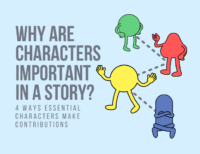
Submit a Comment Cancel reply
Submit Comment
Join over 450,000 readers who are saying YES to practice. You’ll also get a free copy of our eBook 14 Prompts :
Popular Resources
Book Writing Tips & Guides Creativity & Inspiration Tips Writing Prompts Grammar & Vocab Resources Best Book Writing Software ProWritingAid Review Writing Teacher Resources Publisher Rocket Review Scrivener Review Gifts for Writers
Books By Our Writers

You've got it! Just us where to send your guide.
Enter your email to get our free 10-step guide to becoming a writer.
You've got it! Just us where to send your book.
Enter your first name and email to get our free book, 14 Prompts.
Want to Get Published?
Enter your email to get our free interactive checklist to writing and publishing a book.

How to write a top-grade Thematic Essay

When assigned to write a thematic essay, you ought to understand what it is, how to approach it, and how to put every aspect of it on paper finally. You will most likely be assigned to write a thematic essay in high school, college, and university. Instead of getting confused, as most students do, you can use this quick guide and learn how to write a thematic essay quickly and seamlessly.
Remember, a thematic essay entails developing the central theme in literature, using specific literary devices. This guide will teach you the steps to take, identify a central theme, and some helpful tips when writing thematic essays. You will also have some topic suggestions and advice.
Without wasting time, let us delve deeper into it.
What is a thematic essay?
A thematic essay is a category of essay that involves the creation of a major literature theme using literary devices such as imagery, personification, and metaphor, among others. The writer expresses the importance of the themes in the essay .
However, the common challenge in a thematic essay is that every writer interprets the main theme from their perspective. Therefore, an ideal thematic essay should consist of logical arguments that are justified through literary devices.
The fundamental role of a thematic essay is to unwarp the major subject discussed. As a student, you are required to use facts, evidence, and examples obtained from a secondary and primary source.
You should connect the various facts to the main subject of your essay to demonstrate logical arguments in your essay.
How to write a good thematic essay in simple steps
One major challenge for students writing a thematic essay is that they have to identify a central theme. Apart from that, your thematic essay should also have logical arguments backed by evidence, examples, and illustrations that are based on literary devices.
Step 1: Read the essay prompt
The essay prompt provides information about the issue or the topic to be discussed in the essay.
Reading the prompt is significant in inspiring your response in essay form, which is critical in your reasoning and analytical skills.
Moreover, reading essay prompts is important in informing the writer about what is expected in the thematic essay.
Step 2: Choose the text you are going to use
It is important to gather the sources you will use in your essay writing before embarking on writing.
The texts include literature abstracts, discussions, or other texts that support your theme. Therefore, it is vital to gather the texts properly.
You should ensure that your chosen text contains facts or examples supporting your essay theme.
Step 3: Take notes as you read
As an essay student, taking notes will influence your attention to decide the key literary devices to apply in your essay.
Choosing relevant sources that entail comprehensive literary devices that support your theme is vital as you make notes.
Step 4: Determining the central theme
Determining the central theme is one of the vital steps of thematic essay writing. The central theme is the basic component of your essay. It defines the essence and scope of the essay . It also defines your angle of analysis .
Therefore, it is significant to determine the central theme of your essay. We will provide hints later in this article on identifying central themes. It is vital to have the hints at your fingertips as a student.
Step 5: Craft your essay thesis
After determining your main theme, it is vital to develop your essay thesis. Your essay thesis is fundamental in summarizing the points that will be discussed in your entire thematic essay.
This thesis will be posted at the end of the introduction paragraph; your essay thesis should clearly define the central idea to be discussed in your essay.
Consequently, every component of your essay can relate to your essay thesis. The following tips can help you to craft your essay thesis:
- Construct a question. To craft your essay thesis, you can begin by considering the questions provided. However, if not provided, you can develop your individual question. What can you decide or like to explore on the topic?
- Write your first answer. After researching, you can construct a temporary answer to your question. This is a simple task because it controls the writing and researching process.
- Construct your answer. After writing your answers, you need to consider that you will use your answer to co-compel your readers of your essay. Reading extensively concerning the topic will give your more details about your answer and assist you in developing further.
Step 6: Write body paragraphs
Writing the body paragraphs follows the introduction in thematic essay format. The body paragraph should convey the purpose of the essay and utilize literary devices that are used as evidence; each literary paragraph should consist of literary devices.
The topic sentences are introduced to provide a gateway and claim of the evidence. Each topic sentence is linked to a literary device and its connection with the literature.
After writing your topic sentence, you are required to justify your claims. You can use secondary sources to strengthen your point of reasoning through facts, figures, and examples. You can use questions or plots related to your essay's main theme.
It is crucial to prove how the quotes or plots link to the thesis statement of your essay. It is also important to note that every claim should apply the literary device. Thematic essays rely on applying literary devices to improve the thesis statement.
Step 7: Write a captivating introduction
The introduction summarizes your approach and understanding of the answer to your essay question. It is critical in revealing what you intend to discuss in your essay and how you evaluate the theme.
To write a captivating introduction in your thematic essay, your initial stamen in the introduction paragraph should hook the reader through an intriguing claim concerning the topic.
This will attract the reader's attention and provide required background information that assists your audience to comprehend the essay claims later. Moreover, writing a captivating introduction is vital in conveying a well-framed thesis statement that reveals the novel central theme.
Step 8: Write a powerful conclusion
The conclusion marks the end of the thematic essay. When you write your conclusion, you should ensure it completes the essay before wrapping up the whole paper. It should include new information not discussed in the essay's body.
To write an effective conclusion as a student, you need to start by reinstating the thesis statement differently from how you stated in your introduction. Then, summarize your logical arguments on the central theme in the body paragraph.
To end your essay. Provide a final concluding statement that analyzes the topic. You should ensure that you leave your audience with a hook making them interested in exploring the topic.
Step 9: Format, edit, revise, and proofread the essay
After writing your thematic essay to a conclusion, it is vital to check the format of your essay and adjust any necessary items as required by your professor's instructions before submission.
You should confirm and double-check your central themes to match your essay requirements. Finally, peruse through your entire essay and edit any mistakes should note that grammatical mistakes will irritate your readers.
Therefore, it is critical to clean up all mistakes to make the essay attractive to the reader. Revise the paper to ensure that the essay is well-edited and efficient.
Proofread your essay to remove any possible mistakes. Proofreading can also assist you in changing the sentence structure to help polish your essay further. Moreover, it can help in eliminating mistakes from the paper.
Generally, as an essay student, you should ensure that your essay is in the correct format, well-edited, revised, proofread, and free from grammatical mistakes before submission.
How do you pick an excellent thematic topic?
Selecting an excellent thematic topic is one of the crucial aspects of thematic essay writing. The following guidelines help pick an excellent thematic topic:
- Brainstorm. Remember anything you discussed with your parents, friends, or teachers. Do the conversations link to some novel, book, or literature writing?
- Write the ideas that you can recall . Usually, the ideas that come first in your mind are the best ones to build on.
- List the best literature . Ask yourself about the most touching piece of writing to you. Then, evaluate the subject and the author's challenges in the literature developed in the story. This can help you to develop your ideas.
- Select a convincing theme . You should understand your expected audience and provide strong ideas to engage them as ordinary readers. Considering things that can engage your audience can assist you in coming up with a central theme in your essay writing.
- Refer to other pieces of literature. Using your professors' materials can assist you in coming up with the main theme of your essay. In addition, reading the material provided or suggested by your professor can give hints of an appropriate theme that you can discuss in your thematic essay.
- Get the Perspective. Sometimes to come up with the major theme, you will be required to consider the advantages and disadvantages of issues ad consider one perspective that can lead to a major theme to use in your essay.
- Consider social issues. A thematic essay is often linked to social problems that affect human life. Therefore, to develop a compelling theme as an essay writer, you need to analyze the social issues and select one that is appropriate to develop the main theme in your essay.
Related: How to make a good essay outline
How to identify the central theme in a text
As discussed before. Unwrapping the major subject and the main point are the fundamental steps in writing a thematic essay. However, sometimes it is cumbersome to interpret the central theme effectively due to numerous aspects that run within the literature Coming up with a central theme is one of the significant approaches in thematic essay writing. The steps provided below can assist you in coming up with an appropriate theme.
- Condense the literature: consider the major idea that the author is conveying. There are many hints about the literature summary. As a writer, you should choose the hints that are effective and less challenging
- Pick a common subject: As an essay writer, it is vital to identify the difference between subjects. A subject is regarded as a general topic; it can be deception, love, or bravery. However, there is a specific point that is derived from the subject. Therefore, identify a common talking point and make it the focal theme of your essay.
- Read the central point: interpret the major idea that the author was delivering upon getting the subject. You will become more apparent as you explore the frequent examples and clues in the literature.
- Overall significance : you should consider the importance of the author�s point. Identify what can be retrieved and applied in personal lives. Generally, this will drive you to ask the lesson that can be derived from the literature.
Comprehensive Outline for a Thematic Analysis Essay
As an essay writer, your main objective is to be creative when writing your essay to include all crucial details. Consequently, beginning your essay with the outline is vital for thematic essay writing.
Your outline should note that all things contained in the draft do not necessarily form your final piece of writing. Nevertheless, an outline is significant in guiding you throughout your work.
As a writer, you should make sure that you check the flow of your essay. You can achieve this by checking how you use transitions.
In many instances, students tend to treat every paragraph as a mini-essay without linking one paragraph to the other. This aspect leads to an essay that is incohesive and is not flowing.
Also, students should refrain from emotional expression and wordiness to prevent irritation of the reader. When drafting your essay, you should ensure that you are neutral in the sense that you should refrain from being informal or formal. It would assist you to sound sincere and respectful.
A thematic essay outline is meant to guide the writer without mistakes throughout the writing process. Additionally, an outline is crucial in preventing the writer from getting stuck during the writing process. In most cases, the outline of a thematic essay follows a 5-paragraph structure that consists of an introduction, 3-body paragraphs, and a conclusion. Some students think that writing an outline is a waste of time. However, this is not the case; an outline is the basic component of your essay paper.
Possessing a detailed essay outline allows you to create a fantastic thematic piece of writing that is logical, flowing, and coherent.
Overall, a good outline consists of an introduction, body paragraphs, and conclusion. However, the number of your body paragraphs can vary depending on the depth of the theme of your essay.
You should begin your essay with an introduction. You should make an impressive introduction that attracts the attention of your reader. The introduction section consists of background information and the vital points discussed in the essay.
You should be strategic when developing this section. Utilizing practical tools such as humor or posting a connective question is critical. In your introduction, deploying exciting and surprising facts encourages the readers to explore your work.
However, you should not make this paragraph lengthy. Instead, it should be brief and contain the central idea concerning the essay. The last sentence in your introduction should comprise the thesis statement.
As discussed earlier, the thesis statement provides information about what is discussed in the body of the essay. Therefore, make sure your thesis statement is clear and provides a logical argument about the topic of the essay.
Body Paragraphs
Body paragraphs are the essay's main body that comprises of detailed discussion of the central theme. This is where you will be providing analysis, supporting justifications, and developing arguments.
It is critical to avoid giving baseless statements in this section because this part demands well-constructed logical arguments supported with evidence, facts, and examples that increase the quality of your essay.
As an essay writer, you should ensure that all your main points are discussed in the body of your essay . Each point should be discussed in each paragraph. The point is stated in the form of the topic statement and supported with the literary device.
Also, you can use subheadings in your thematic essay to avoid clustering of your content. All the paragraphs in your essay should be of equal length.
This is important in producing a quality essay. You can get numerous thematic essays on websites. You can read the samples to guide you in writing an excellent thematic essay.
The conclusion is, marks the end of the essay. A reasonable conclusion should be precise, practical, and logical.
Generally, the conclusion should resonate with the information in the thesis statement . To write a reasonable conclusion, begin by rephrasing the thesis statement.
Rewrite the thesis statement in your own words while keeping the meaning of the idea. After that, summarize the main points discussed in the body paragraphs of your thematic essay. Ensure all the points are summarized.
Finally, provide an overall statement that can hook the reader and attract the reader's interest to explore the topic further.
Essential tips when writing a thematic essay
- Read relevant literature that includes book chapters and other relevant sources that support your theme. Then, read the essay question carefully and brainstorm the best approach to writing your thematic essay.
- Developed a detailed outline that will guide you in writing the paper
- Ensure you master the requirements of the essay and academic rules that govern essay writing. Ensure you adhere to the required format and refrain from plagiarism by paraphrasing important p points from secondary sources.
- Your introduction should be brief and to the point, and you should not forget to include a logical thesis statement
- It is necessary to develop one straightforward central question in every paragraph
- You should present your paragraphs in a logical format. Ensure the paragraphs are linked with one other to ascertain the flow of the essay.
- Use compelling examples and claims that support the points in each paragraph. The claims and examples should be verifiable and well elaborated to bring the logical arguments in the essay.
- You should reference your source properly. Poor citations and references may result in plagiarism. Therefore, ensure you include a well-structured intext citation and reference list in your essay.
- Ensure all your description is followed by extensive analysis as a way of justifying your claims in the essay. Any description that lacks analysis should not be included.
- Make sure that your conclusion is relevant and concise.
- Make sure that all the materials are referenced, and a bibliography or reference list indicating all the used sources is provided
- Ensure you submit your essay at the required time.
Mistakes to avoid when writing a thematic essay
- Avoid using the complex word;
- Avoid using text that is not significant to your essay;
- Do not exaggerate your essay;
- Avoid long sentences;
- Avoid submitting your essay without proper citing;
- Do not submit the paper unreviewed;
- Make sure the paper contains stronger arguments;
- Refrain from submitting your work without running it through a plagiarism checker and Grammarly software
- Avoid using the wrong essay format;
- Avoid using too many questions from secondary sources.
Thematic essay topic ideas
Numerous thematic essay topics can be utilized to produce impressive work. Most of the common thematic topics are related to historical events. As an essay writer, you should consider an exciting topic to write about. Getting an interesting topic is fundamental in deriving ideas and writing quality work based on your knowledge. The following are some of the topics that are related to distinct subjects.
Global regents
- The transformed meaning of philosophy
- Can a person manage unconscious thinking?
- The responsibilities of Men and Women in the modern society
- Human rights in the contemporary world.
- The role of social media in the modern old
- The significance of the political system in the contemporary society
- The role of globalization in the contemporary world.
- The role of religion in society
Belief systems
- Should the death penalty be allowed?
- Should people be allowed to carry handguns?
- Are video games effective in mental health mitigation?
- Women should take care of children and not engage in any form of work.
- The childhood period is the most significant part of human life.
Literary thematic essay topics
- Explain the themes explained in the book �The Great Gatsby."
- Explain the major theme highlighted by Bernard Shaw in the novel �Arms and the man."
- What is the central theme in the poem �The Road not taken" by Robert Frost?
- Happer Lee discusses "innocence" in his novel To Kill a Mockingbird. What does he try to elaborate on?
- The civil war era.
- The slavery issue in America
- US-Russia relations
- The Cold War Period
- Industrial revolution in the USA
- International organizations
Read our article on the list of social issues and see if you can consider some controversial and current social issues for your topic ideation.
Final Remarks!
As you wind up your thematic essay, ensure that everything is okay. Remove any spelling, stylistic, typographic, and grammatical errors.
Also, confirm is your central theme comes out clearly in the paper. You can hire an expert proofreader to help you spot and correct mistakes.
Thus far, we are sure you have the correct information that has set you up to write a great thematic essay by yourself. You can use this guide to research, plan, and write a quality paper.
Alternatively, you can hire an essay writer to write your thematic essay from Gradecrest. Our model essays are plagiarism-free, 100% unique, and top-quality.
You can also check sample essays online to get further inspiration. We believe that you will write an excellent paper from now on.

Gradecrest is a professional writing service that provides original model papers. We offer personalized services along with research materials for assistance purposes only. All the materials from our website should be used with proper references. See our Terms of Use Page for proper details.

The Tech Edvocate
- Advertisement
- Home Page Five (No Sidebar)
- Home Page Four
- Home Page Three
- Home Page Two
- Icons [No Sidebar]
- Left Sidbear Page
- Lynch Educational Consulting
- My Speaking Page
- Newsletter Sign Up Confirmation
- Newsletter Unsubscription
- Page Example
- Protected Content
- Request a Product Review
- Shortcodes Examples
- Terms and Conditions
- The Edvocate
- The Tech Edvocate Product Guide
- Write For Us
- Dr. Lynch’s Personal Website
- The Edvocate Podcast
- Assistive Technology
- Child Development Tech
- Early Childhood & K-12 EdTech
- EdTech Futures
- EdTech News
- EdTech Policy & Reform
- EdTech Startups & Businesses
- Higher Education EdTech
- Online Learning & eLearning
- Parent & Family Tech
- Personalized Learning
- Product Reviews
- Tech Edvocate Awards
- School Ratings
3 Ways to Play Oojami Ring Toss
How to wrap a rug for shipping, how to deal with annoying colleagues, how to trade pokémon with john gba lite, how to improvise: 15 steps, simple ways to unlock a dewalt miter saw: 7 steps, how to spot the north star: 9 steps, how to change your name in oklahoma, how to write creepypasta: 7 steps, 3 ways to log out of netflix on xbox, how to write a theme essay: 11 steps.
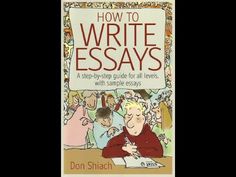
A theme essay gives you the opportunity to explore a specific topic or theme in-depth, showcasing your analytical and critical thinking skills. The purpose of this type of essay is to allow the reader to better understand the chosen topic and convey your perspective on it. Whether you’re assigned a theme essay for a class or you’d like to explore one on your own, these 11 steps will guide you through the process of writing an effective theme essay.
1.Choose a theme : Pick a subject matter that you’re interested in and have knowledge about. It should be broad enough for you to create a detailed analysis but specific enough to be manageable.
2.Read and research: Study the relevant literature, articles, and other material related to your chosen theme. Make notes, highlight important information, and jot down your ideas as you read.
3.Develop a thesis statement: The thesis statement is a concise sentence that sums up the main point of your essay. Ensure that it clearly and accurately reflects your point of view on the chosen theme.
4.Create an outline: Organize your thoughts by developing an outline for your essay. Include an introduction, body paragraphs (where each paragraph discusses one main point), and a conclusion.
5.Write the introduction: Begin with an attention-grabbing hook, such as a quote or intriguing statement that relates to the theme. Introduce your thesis statement, providing context for why it’s essential to discuss this theme.
6.Develop body paragraphs : Each body paragraph should focus on one main point related to your thesis statement. Begin with a topic sentence that highlights the paragraph’s central idea, followed by evidence and examples supporting that point.
7.Analyze evidence and examples: For each piece of evidence or example provided in your body paragraphs, discuss its significance and how it supports your main point.
8.Provide counterarguments: Acknowledge opposing views and provide counterarguments to show that you’ve considered various perspectives on the theme.
9.Write the conclusion: Summarize the main points of your essay and restate the thesis in a new way. The conclusion should leave the reader with a lasting impression of your analysis and thoughts on the theme.
10.Edit and revise : Read through your essay several times, checking for grammar, spelling, punctuation, and logical flow. Ensure that your writing is clear and that each paragraph flows smoothly into the next.
11.Seek feedback: Share your essay with others (teachers, classmates, or friends) to receive constructive feedback. Use their comments to make any necessary revisions and ultimately strengthen your theme essay.
By following these 11 steps, you’ll be well on your way to crafting a thoughtful and well-structured theme essay that captures the essence of your chosen topic and effectively conveys your perspective to readers.
6 Ways to Say “I Don’t Speak ...
3 ways to get around while your ....
Matthew Lynch
Related articles more from author.

3 Ways to Make a Yo-Yo

6 Ways to Do Simple and Cute Hairstyles

3 Ways to Get Along with Others Well

3 Ways to Make Lipstick Matte

12 Ways to Cure a Fever at Home

4 Ways to Change Your Name in South Carolina

- Customer Reviews
- Extended Essays
- IB Internal Assessment
- Theory of Knowledge
- Literature Review
- Dissertations
- Essay Writing
- Research Writing
- Assignment Help
- Capstone Projects
- College Application
- Online Class
How to Write a Thematic Essay: The Complete Guide
by Antony W
September 12, 2022

In this guide, you'll learn exactly how to write a thematic essay step-by-step.
Thematic essays, or theme essays, require you to really examine a literary object such as a book, journal, paper, or other art form and pick out the main ideas (themes).
You will then explain how these themes are brought on and what literary devices are used to do that.
Key Takeaways
To write an outstanding theme essay, you should:
- Select a literary work to base your thematic analysis on.
- Choose a primary theme.
- Identify supporting evidence and literary devices used.
- Plan and outline the essay.
- Write the first draft.
- Edit and proofread your work for submission.
What is a Thematic Essay?

A thematic essay is a one in which you identify the main idea (theme) expressed in a chosen literary object and explore how the writer of that literature chooses to address that theme through various literary devices.
The devices can be metaphors, hyperbole, imagery, allegory, and many others.
Writing a thematic analysis essay is a great way to learn how to pick out themes in the literature you read as well as how to improve your writing skills.
A thematic essay will be at least five paragraphs long , but usually longer depending on the complexity of the work being reviewed.
You can write a thematic essay based on a book, a speech, a magazine article, a video, audio, or any other art form.
Choosing a Theme for a Thematic Essay
Choosing the main idea or theme of such a work is not a straightforward process.
It is highly subjective, and what you consider the main theme in a book may not be somebody else’s.
You have to make sure that what you pick as your main theme is fully supported throughout the book and makes significant appearances in most chapters, if not all of them.
How to Write a Thematic Essay Step by Step
Writing a thematic essay is easy. You just have to:
1. Choose a Literary Object
If your instructor does not provide the topic, think back to a book or article that made a strong impression to you, or think about your favorite pieces of literature.
Another option is to brainstorm. Brainstorming hardly fails, especially if you incorporate the help of your friends and even your instructor.
Collect different ideas and be sure to write each of them down, no matter how unlikely they sound. From there, eliminate most of these the following criteria:
- The topic should be interesting and captivating. Avoid those that are too common and overly used in academia unless you can provide a fresh twist or insight.
- The topic needs to have one or more important themes running through.
- It should be a literary work that is relatively well known and in the public domain.
- Some of the shorter works are best because they guarantee your essay won’t be too long.
This process will likely leave you with one or two possible topics, but make sure to confirm with your instructor that what you choose to focus on is acceptable.
2. Find a Relevant Theme
A theme is a significant idea that recurs throughout the literary work you have chosen. You can think of it as the main message the author is trying to pass across.
There are major and minor themes differentiated by how much attention the author gives to each.
For the best outcome, your theme should be one of the major themes addressed throughout the work.
There are a few things you can do to figure out what major themes are present:
- As you read the work, note and write down what tone, setting, language styles, and characterization the writer is using.
- What is the plot of the book and what does it lead to? Think about what you would tell somebody else about the book.
- Identify who the protagonist (main character) is and what they represent. Do they change at all in the book?
For example, in Harper Lee’s To Kill a Mockingbird, Atticus Finch does not change and represents morality, love, fairness, and good reason to the end.
- Put yourself in the author’s shoes and observe from their point of view. What message do you think they want to pass on as the most important?
3. Pick Material for the Essay
Read through the book again with the main theme in mind.
See how the author plays with it, what literary devices are used to highlight their thematic approach, and write down all these for reference.
What you are doing at this stage is a literary analysis.
The tools in the author’s hands include character development, mood, setting, irony, allegory, simile, alliteration, symbolism, metaphor, among many others.
Think about how effective these tools are in shining the light upon the main theme. It helps to read between the lines as well because sometimes the most important thing is what the author leaves unsaid.
4. Planning: Thematic Essay Outline
A thematic essay is very simple and straightforward. Like most essays, it will have an introduction, body, and conclusion.
Each of these parts should be considered carefully in the planning stage and map out which ideas will go where.
The introduction serves to catch the reader’s interest, set the background, and mention what exactly you intend to discuss in the essay.
The first one or two sentences should be a hook, that is, a statement that will be intriguing enough to make the reader want to keep reading. It can be a clever observation, a surprising statement, or even a relevant question.
Second, provide a very brief background on which to build your essay.
However, you will be assuming that the reader has already read the literary work that is the subject of the essay. So you don’t have to give too much detail.
In winding up the introductory, write your thesis statement . This is a one-sentence statement that tells the reader what your essay is about.
However, don’t say it like this: “My thesis statement is ... “ Instead, let the introduction flow and link smoothly up to this point.
Body paragraphs
You will have three or more body paragraphs detailing your arguments about the main theme. In a thematic essay, each of the body paragraphs will be focusing on one literary device and how it is useful in presenting the theme message.
As with most essays, body paragraphs will follow the TEEL format.
- Topic Sentence : The introductory sentence introduces the idea that the paragraph is about. Think of it as a mini-thesis statement. The rest of the paragraph will be explaining and supporting this one statement.
- Explanation: Explain your topic idea clearly.
- Evidence : Give compelling evidence for your claims. It can be a quote, a direct observation, similar use of the same method elsewhere in the book, a citation from an authoritative work, etc.
- Link : Show how the idea you just described links with the rest of the essay and thesis statement. Again, you won’t say, “this idea relates to my thesis statement because …” Instead, let the whole paragraph flow smoothly and seamlessly.
The number of body paragraphs will depend on how much evidence you have collected. However, make sure to keep within the reasonable word count parameters as given by your instructor.
Recap the main arguments in your body and restate your thesis statement.
The purpose of the conclusion is to give your “take-home” argument, what you feel the reader should retain from the whole work.
Customize your theme essay outline accordingly; don’t make it as generic as this example here.
Fill it with details like what ideas you will include in your first paragraph, what your thesis statement will be, and what your introduction hook is. With this thematic essay format, you are now ready to do the write-up.
5. Write the Essay
With a good outline, writing a thematic essay becomes a piece of cake. You will simply be fleshing out the template.
6. Proofreading and Revision
Make sure to read through your essay at least twice.
Note how well your ideas flow, how the arguments and evidence presented link back to the thesis statement, and of course, clear any grammatical errors.
Thematic Essay Writing Help
If you don’t have the time to read your subject thoroughly and analytically, you can hire Help for Assessment’s essay writing service . We have a suitable writer that can help you get the assignment completed on time.
Frequently Asked Questions
1. how do you start a theme essay.
The introduction of your theme essay should be an intriguing hook about the subject you wish to discuss.
Ensure the hook is concise and strong enough to grab your reader’s attention.
2. What are the Elements of a Thematic Essay?
The elements of a thematic essay are the introduction, body paragraphs, and the conclusion.
Ensure the introduction includes a thesis statement. The body paragraphs should support the thesis using relevant examples, evidence, and arguments.
Lastly, the conclusion should be logical enough to tie everything together at the end.
3. What is the Main Point of a Thematic Essay?
The main point of a thematic essay is to identify themes from a source, present a theme statement, and address a specific issue within the requirement of the assignment.
About the author
Antony W is a professional writer and coach at Help for Assessment. He spends countless hours every day researching and writing great content filled with expert advice on how to write engaging essays, research papers, and assignments.

Theme Definition
What is theme? Here’s a quick and simple definition:
A theme is a universal idea, lesson, or message explored throughout a work of literature. One key characteristic of literary themes is their universality, which is to say that themes are ideas that not only apply to the specific characters and events of a book or play, but also express broader truths about human experience that readers can apply to their own lives. For instance, John Steinbeck's The Grapes of Wrath (about a family of tenant farmers who are displaced from their land in Oklahoma) is a book whose themes might be said to include the inhumanity of capitalism, as well as the vitality and necessity of family and friendship.
Some additional key details about theme:
- All works of literature have themes. The same work can have multiple themes, and many different works explore the same or similar themes.
- Themes are sometimes divided into thematic concepts and thematic statements . A work's thematic concept is the broader topic it touches upon (love, forgiveness, pain, etc.) while its thematic statement is what the work says about that topic. For example, the thematic concept of a romance novel might be love, and, depending on what happens in the story, its thematic statement might be that "Love is blind," or that "You can't buy love . "
- Themes are almost never stated explicitly. Oftentimes you can identify a work's themes by looking for a repeating symbol , motif , or phrase that appears again and again throughout a story, since it often signals a recurring concept or idea.
Theme Pronunciation
Here's how to pronounce theme: theem
Identifying Themes
Every work of literature—whether it's an essay, a novel, a poem, or something else—has at least one theme. Therefore, when analyzing a given work, it's always possible to discuss what the work is "about" on two separate levels: the more concrete level of the plot (i.e., what literally happens in the work), as well as the more abstract level of the theme (i.e., the concepts that the work deals with). Understanding the themes of a work is vital to understanding the work's significance—which is why, for example, every LitCharts Literature Guide uses a specific set of themes to help analyze the text.
Although some writers set out to explore certain themes in their work before they've even begun writing, many writers begin to write without a preconceived idea of the themes they want to explore—they simply allow the themes to emerge naturally through the writing process. But even when writers do set out to investigate a particular theme, they usually don't identify that theme explicitly in the work itself. Instead, each reader must come to their own conclusions about what themes are at play in a given work, and each reader will likely come away with a unique thematic interpretation or understanding of the work.
Symbol, Motif, and Leitwortstil
Writers often use three literary devices in particular—known as symbol , motif , and leitwortstil —to emphasize or hint at a work's underlying themes. Spotting these elements at work in a text can help you know where to look for its main themes.
- Near the beginning of Romeo and Juliet , Benvolio promises to make Romeo feel better about Rosaline's rejection of him by introducing him to more beautiful women, saying "Compare [Rosaline's] face with some that I shall show….and I will make thee think thy swan a crow." Here, the swan is a symbol for how Rosaline appears to the adoring Romeo, while the crow is a symbol for how she will soon appear to him, after he has seen other, more beautiful women.
- Symbols might occur once or twice in a book or play to represent an emotion, and in that case aren't necessarily related to a theme. However, if you start to see clusters of similar symbols appearing in a story, this may mean that the symbols are part of an overarching motif, in which case they very likely are related to a theme.
- For example, Shakespeare uses the motif of "dark vs. light" in Romeo and Juliet to emphasize one of the play's main themes: the contradictory nature of love. To develop this theme, Shakespeare describes the experience of love by pairing contradictory, opposite symbols next to each other throughout the play: not only crows and swans, but also night and day, moon and sun. These paired symbols all fall into the overall pattern of "dark vs. light," and that overall pattern is called a motif.
- A famous example is Kurt Vonnegut's repetition of the phrase "So it goes" throughout his novel Slaughterhouse Five , a novel which centers around the events of World War II. Vonnegut's narrator repeats the phrase each time he recounts a tragic story from the war, an effective demonstration of how the horrors of war have become normalized for the narrator. The constant repetition of the phrase emphasizes the novel's primary themes: the death and destruction of war, and the futility of trying to prevent or escape such destruction, and both of those things coupled with the author's skepticism that any of the destruction is necessary and that war-time tragedies "can't be helped."
Symbol, motif and leitwortstil are simply techniques that authors use to emphasize themes, and should not be confused with the actual thematic content at which they hint. That said, spotting these tools and patterns can give you valuable clues as to what might be the underlying themes of a work.
Thematic Concepts vs. Thematic Statements
A work's thematic concept is the broader topic it touches upon—for instance:
- Forgiveness
while its thematic statement is the particular argument the writer makes about that topic through his or her work, such as:
- Human judgement is imperfect.
- Love cannot be bought.
- Getting revenge on someone else will not fix your problems.
- Learning to forgive is part of becoming an adult.
Should You Use Thematic Concepts or Thematic Statements?
Some people argue that when describing a theme in a work that simply writing a thematic concept is insufficient, and that instead the theme must be described in a full sentence as a thematic statement. Other people argue that a thematic statement, being a single sentence, usually creates an artificially simplistic description of a theme in a work and is therefore can actually be more misleading than helpful. There isn't really a right answer in this debate.
In our LitCharts literature study guides , we usually identify themes in headings as thematic concepts, and then explain the theme more fully in a few paragraphs. We find thematic statements limiting in fully exploring or explaining a the theme, and so we don't use them. Please note that this doesn't mean we only rely on thematic concepts—we spend paragraphs explaining a theme after we first identify a thematic concept. If you are asked to describe a theme in a text, you probably should usually try to at least develop a thematic statement about the text if you're not given the time or space to describe it more fully. For example, a statement that a book is about "the senselessness of violence" is a lot stronger and more compelling than just saying that the book is about "violence."

Identifying Thematic Statements
One way to try to to identify or describe the thematic statement within a particular work is to think through the following aspects of the text:
- Plot: What are the main plot elements in the work, including the arc of the story, setting, and characters. What are the most important moments in the story? How does it end? How is the central conflict resolved?
- Protagonist: Who is the main character, and what happens to him or her? How does he or she develop as a person over the course of the story?
- Prominent symbols and motifs: Are there any motifs or symbols that are featured prominently in the work—for example, in the title, or recurring at important moments in the story—that might mirror some of the main themes?
After you've thought through these different parts of the text, consider what their answers might tell you about the thematic statement the text might be trying to make about any given thematic concept. The checklist above shouldn't be thought of as a precise formula for theme-finding, but rather as a set of guidelines, which will help you ask the right questions and arrive at an interesting thematic interpretation.
Theme Examples
The following examples not only illustrate how themes develop over the course of a work of literature, but they also demonstrate how paying careful attention to detail as you read will enable you to come to more compelling conclusions about those themes.
Themes in F. Scott Fitzgerald's The Great Gatsby
Fitzgerald explores many themes in The Great Gatsby , among them the corruption of the American Dream .
- The story's narrator is Minnesota-born Nick Caraway, a New York bonds salesman. Nick befriends Jay Gatsby, the protagonist, who is a wealthy man who throws extravagant parties at his mansion.
- The central conflict of the novel is Gatsby's pursuit of Daisy, whom he met and fell in love with as a young man, but parted from during World War I.
- He makes a fortune illegally by bootlegging alcohol, to become the sort of wealthy man he believes Daisy is attracted to, then buys a house near her home, where she lives with her husband.
- While he does manage to re-enter Daisy's life, she ultimately abandons him and he dies as a result of her reckless, selfish behavior.
- Gatsby's house is on the water, and he stares longingly across the water at a green light that hangs at the edge of a dock at Daisy's house which sits across a the bay. The symbol of the light appears multiple times in the novel—during the early stages of Gatsby's longing for Daisy, during his pursuit of her, and after he dies without winning her love. It symbolizes both his longing for daisy and the distance between them (the distance of space and time) that he believes (incorrectly) that he can bridge.
- In addition to the green light, the color green appears regularly in the novel. This motif of green broadens and shapes the symbolism of the green light and also influences the novel's themes. While green always remains associated with Gatsby's yearning for Daisy and the past, and also his ambitious striving to regain Daisy, it also through the motif of repeated green becomes associated with money, hypocrisy, and destruction. Gatsby's yearning for Daisy, which is idealistic in some ways, also becomes clearly corrupt in others, which more generally impacts what the novel is saying about dreams more generally and the American Dream in particular.
Gatsby pursues the American Dream, driven by the idea that hard work can lead anyone from poverty to wealth, and he does so for a single reason: he's in love with Daisy. However, he pursues the dream dishonestly, making a fortune by illegal means, and ultimately fails to achieve his goal of winning Daisy's heart. Furthermore, when he actually gets close to winning Daisy's heart, she brings about his downfall. Through the story of Gatsby and Daisy, Fitzgerald expresses the point of view that the American Dream carries at its core an inherent corruption. You can read more about the theme of The American Dream in The Great Gatsby here .
Themes in Chinua Achebe's Things Fall Apart
In Things Fall Apart , Chinua Achebe explores the theme of the dangers of rigidly following tradition .
- Okonkwo is obsessed with embodying the masculine ideals of traditional Igbo warrior culture.
- Okonkwo's dedication to his clan's traditions is so extreme that it even alienates members of his own family, one of whom joins the Christians.
- The central conflict: Okonkwo's community adapts to colonization in order to survive, becoming less warlike and allowing the minor injustices that the colonists inflict upon them to go unchallenged. Okonkwo, however, refuses to adapt.
- At the end of the novel, Okonkwo impulsively kills a Christian out of anger. Recognizing that his community does not support his crime, Okonkwo kills himself in despair.
- Clanswomen who give birth to twins abandon the babies in the forest to die, according to traditional beliefs that twins are evil.
- Okonkwo kills his beloved adopted son, a prisoner of war, according to the clan's traditions.
- Okonkwo sacrifices a goat in repentence, after severely beating his wife during the clan's holy week.
Through the tragic story of Okonkwo, Achebe is clearly dealing with the theme of tradition, but a close examination of the text reveals that he's also making a clear thematic statement that following traditions too rigidly leads people to the greatest sacrifice of all: that of personal agency . You can read more about this theme in Things Fall Apart here .
Themes in Robert Frost's The Road Not Taken
Poem's have themes just as plot-driven narratives do. One theme that Robert Frost explores in this famous poem, The Road Not Taken , is the illusory nature of free will .
- The poem's speaker stands at a fork in the road, in a "yellow wood."
- He (or she) looks down one path as far as possible, then takes the other, which seems less worn.
- The speaker then admits that the paths are about equally worn—there's really no way to tell the difference—and that a layer of leaves covers both of the paths, indicating that neither has been traveled recently.
- After taking the second path, the speaker finds comfort in the idea of taking the first path sometime in the future, but acknowledges that he or she is unlikely to ever return to that particular fork in the woods.
- The speaker imagines how, "with a sigh" she will tell someone in the future, "I took the road less travelled—and that has made all the difference."
- By wryly predicting his or her own need to romanticize, and retroactively justify, the chosen path, the speaker injects the poem with an unmistakeable hint of irony .
- The speaker's journey is a symbol for life, and the two paths symbolize different life paths, with the road "less-travelled" representing the path of an individualist or lone-wolf. The fork where the two roads diverge represents an important life choice. The road "not taken" represents the life path that the speaker would have pursued had he or she had made different choices.
Frost's speaker has reached a fork in the road, which—according to the symbolic language of the poem—means that he or she must make an important life decision. However, the speaker doesn't really know anything about the choice at hand: the paths appear to be the same from the speaker's vantage point, and there's no way he or she can know where the path will lead in the long term. By showing that the only truly informed choice the speaker makes is how he or she explains their decision after they have already made it , Frost suggests that although we pretend to make our own choices, our lives are actually governed by chance.
What's the Function of Theme in Literature?
Themes are a huge part of what readers ultimately take away from a work of literature when they're done reading it. They're the universal lessons and ideas that we draw from our experiences of works of art: in other words, they're part of the whole reason anyone would want to pick up a book in the first place!
It would be difficult to write any sort of narrative that did not include any kind of theme. The narrative itself would have to be almost completely incoherent in order to seem theme-less, and even then readers would discern a theme about incoherence and meaninglessness. So themes are in that sense an intrinsic part of nearly all writing. At the same time, the themes that a writer is interested in exploring will significantly impact nearly all aspects of how a writer chooses to write a text. Some writers might know the themes they want to explore from the beginning of their writing process, and proceed from there. Others might have only a glimmer of an idea, or have new ideas as they write, and so the themes they address might shift and change as they write. In either case, though, the writer's ideas about his or her themes will influence how they write.
One additional key detail about themes and how they work is that the process of identifying and interpreting them is often very personal and subjective. The subjective experience that readers bring to interpreting a work's themes is part of what makes literature so powerful: reading a book isn't simply a one-directional experience, in which the writer imparts their thoughts on life to the reader, already distilled into clear thematic statements. Rather, the process of reading and interpreting a work to discover its themes is an exchange in which readers parse the text to tease out the themes they find most relevant to their personal experience and interests.
Other Helpful Theme Resources
- The Wikipedia Page on Theme: An in-depth explanation of theme that also breaks down the difference between thematic concepts and thematic statements.
- The Dictionary Definition of Theme: A basic definition and etymology of the term.
- In this instructional video , a teacher explains her process for helping students identify themes.
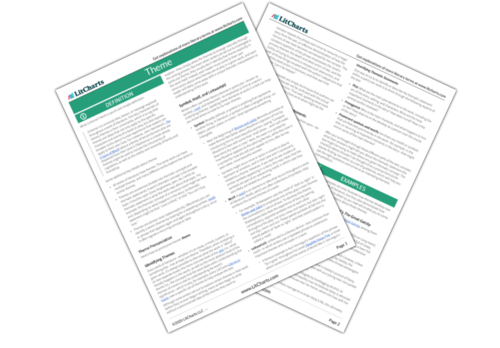
- PDFs for all 136 Lit Terms we cover
- Downloads of 1900 LitCharts Lit Guides
- Teacher Editions for every Lit Guide
- Explanations and citation info for 39,983 quotes across 1900 books
- Downloadable (PDF) line-by-line translations of every Shakespeare play
- Colloquialism
- Anthropomorphism
- Protagonist
- Formal Verse
- Rhyme Scheme
- Rhetorical Question
- Slant Rhyme
- Personification
- Figure of Speech
- Foreshadowing
- Climax (Plot)
- Parallelism
- Round Character

How to Write a Thematic Essay (Thematic Essay Examples Included)
Apr 8, 2024 | 0 comments

Apr 8, 2024 | Blog | 0 comments
Writing an essay can be a challenging task, especially when it comes to tackling a thematic essay. A thematic essay requires students to analyze a specific theme or concept and draw connections between various literary works, historical events, or scientific phenomena. By exploring the underlying messages and ideas presented in the chosen theme, students can develop a deeper understanding of the subject matter and present a cohesive argument in their essay. This article will discuss how to write a thematic analysis essay, providing helpful tips and tricks to guide you through the process. We will also include examples of thematic essays to demonstrate how to structure and convey your ideas effectively in a thematic essay. So whether you’re a seasoned essay writer looking to enhance your skills or a student facing their first thematic essay assignment, this guide will equip you with the knowledge and tools needed to write a compelling and insightful thematic essay.
Thematic Essay Definition?
A thematic essay is a specific type of essay that focuses on exploring and analyzing a central theme within a piece of literature, a historical event, or any other subject matter. The primary goal of a thematic essay is to delve into the theme’s significance and how it relates to the overall meaning or message of the work or event being examined.
Unlike a summary essay that recounts the main events or plot points, a thematic essay requires the writer to go beyond the surface level and uncover the deeper, underlying ideas central to the work. This type of essay challenges the writer to critically analyze the explored theme’s literary devices, historical context, or broader implications.
The Purpose of a Thematic Essay
The primary purpose of a thematic essay is to demonstrate the writer’s ability to critically analyze a central theme and explore its deeper significance within a larger work or context. By focusing on a specific theme, the writer can delve into the nuances and complexities of the subject matter, showcasing their analytical skills and depth of understanding.
Additionally, writing a thematic essay can help students develop critical thinking and communication skills, as they must carefully select evidence, construct logical arguments, and **convey their ideas clearly and compellingly. This type of essay is often assigned in academic settings, as it prepares students for the rigors of higher-level analysis and scholarly discourse.
Environmental Studies Assignment Help
Looking for expert guidance? Click here to explore our Environmental Studies Assignment Help and ace your assignments with ease!
How to Write a Thematic Essay: Step-By-Step
Crafting a compelling thematic essay requires a systematic approach. In the sections below, we’ll detail each process step – from choosing a thought-provoking theme to polishing your final draft. Get ready to dive deep, analyze critically, and produce a compelling thematic essay.
Step 1: How to choose a thematic essay topic
Selecting the right thematic essay topic is crucial to the success of your piece. When choosing a topic, look for themes that are rich in complexity and offer ample room for analysis and interpretation. Consider subjects that pique your interest and allow you to delve into the deeper meanings and significance behind the central idea.
Some key factors to consider when choosing a thematic essay topic include the depth of the theme, the available evidence or research material, and the potential for original insights or new interpretations. Avoid too broad or narrow topics, as this can make it difficult to **develop a focused and coherent essay.
Expand your writing toolkit and discover effective techniques for brainstorming college essay topics in just 15 minutes by checking out our insightful article.
Sample Topics for Thematic Essays
There are countless possibilities when it comes to thematic essay topics. Some popular examples include:
- The theme of power in George Orwell’s “Animal Farm”
- The significance of the theme of isolation in Emily Brontë’s “Wuthering Heights.”
- The role of gender and identity in Shakespeare’s “Hamlet”
- The theme of revenge and its consequences in Ódýn’s “Njál’s Saga”
- The exploration of the theme of morality in Dostoevsky’s “Crime and Punishment.”
Explore our comprehensive guide on Coming Up With Essay Topic Ideas for valuable insights and inspiration in crafting your next thematic essay.
Step 2: Thematic Essay Outline
I. Introduction A. Hook: Unexpected statement or intriguing question to grab the reader’s attention B. Background information on the theme and the work/event being analyzed C. Thesis statement: Clear and concise argument about the significance of the theme
II. Theme Exploration A. Body Paragraph 1 1. Topic sentence introducing the first main point about the theme 2. Evidence from the work/event to support the main point 3. Analysis of the evidence and how it relates to the thesis statement B. Body Paragraph 2 1. Topic sentence introducing the second main point about the theme 2. Evidence from the work/event to support the main point 3. Analysis of the evidence and how it relates to the thesis statement C. Body Paragraph 3 1. Topic sentence introducing the third main point about the theme 2. Evidence from the work/event to support the main point 3. Analysis of the evidence and how it relates to the thesis statement
III. Conclusion A. Restatement of the thesis statement B. Summary of the main points discussed in the essay C. Reflection on the overall significance of the theme and its broader implications
Step 3: Research and Analysis
A. Conducting Thorough Research on the Chosen Theme
The foundation of a strong thematic essay lies in the research you conduct on the chosen theme. This involves gathering information from various credible sources, such as academic journals, literary critiques, historical documents, and primary sources. By immersing yourself in the relevant literature and data, you can develop a deep understanding of the theme and its broader context.
B. Taking Notes and Organizing Information
As you conduct your research, taking detailed notes and organizing the information to support your analysis is crucial. This may involve creating an outline, categorizing your findings by key themes or concepts, or using a note-taking system that helps you make connections between different sources. Effective note-taking and organization will ensure you have a solid foundation to build your thematic essay.
C. Analyzing the Key Ideas and Concepts within the Theme
Once you’ve gathered your research, it’s time to analyze the key ideas and concepts that underpin the theme. This may involve examining the literary devices used by the author, exploring the historical context of the work or event, or considering the broader societal implications of the theme. You can develop a nuanced and compelling argument in your thematic essay by critically analyzing the elements contributing to the theme’s significance.
Critical Thinking Writing Service
Unlock your potential with our Critical Thinking Writing Service - the ultimate solution for crafting compelling arguments and outsmarting the competition!
Step 4: How to Find and Explore the Central Theme
When writing a theme essay, the key is to effectively identify, explore, and analyze the central theme of a work or event. Here’s a step-by-step guide on how to do so:
A. Identifying the Main Subject or Idea- The first step in writing a theme essay is to identify the main subject or idea that permeates the work or event you’re examining. This may involve closely reading the text , reviewing historical accounts, or critically analyzing the key elements of the work or event. Look for recurring motifs, dominant ideas, or overarching concepts that seem to drive the narrative or progression of the subject matter.
B. Recognizing Patterns, Symbolism, and Literary Devices-
As you examine the main subject or idea, pay close attention to the literary devices, symbols, and patterns that the author or historical figures may have used to convey the central theme. These elements can provide valuable insights into the theme’s deeper meanings and significance.
C. Analyzing the Relationship Between the Theme and the Broader Context –
Once you’ve identified the central theme and recognized the various literary or historical devices used to explore it, consider how the theme relates to the broader context of the work or event. This may involve examining the historical setting, cultural influences, or societal norms that shaped the development and portrayal of the theme.
D. Considering the Implications and Significance of the Theme
Finally, I will delve into the implications and significance of the central theme. Analyze how the theme relates to universal human experiences, moral and ethical dilemmas, or societal and cultural issues. Consider how the theme challenges or reinforces prevailing beliefs, values, or perspectives.
Step 5: Creating a Thesis Statement
Developing the Thematic Statement
At the heart of any thematic essay is a strong thesis statement . This statement should set the tone for your entire essay, clearly outlining your central argument or interpretation of the theme. Your thematic statement should be concise yet specific, capturing the essence of your theme and the significance you plan to explore.
When crafting your thematic statement, consider the following:
- What is the main argument you want to make about the theme?
- How does the theme relate to the broader context or message of the work or event?
- What specific insight or interpretation do you want to offer the reader?
By addressing these questions, you can develop a thematic statement as the foundation for your analysis essay.
Ensuring a Clear and Concise Thesis
Your thesis statement should be clear and concise, leaving no ambiguity about the central focus of your thematic essay. Avoid vague or overly broad statements, and instead, craft a thesis that directly addresses the theme and its significance.
Using the Thesis to Guide the Essay
Once you’ve crafted your thematic statement, it should serve as the guiding principle for the rest of your essay. Each body paragraph should focus on a specific point or aspect of the theme, with topic sentences that introduce the main idea and evidence that supports your thesis.
In the thematic essay conclusion, you’ll restate your thesis statement and summarize the main points you’ve made throughout the essay. This concluding section should reflect on the theme’s overall significance and broader implications.
Tips for Writing a Perfect Thematic Essay Thesis
Here are some additional tips to help you write a quality thesis statement for your thematic essay:
- Start with the essay prompt : Ensure your thesis addresses the question or theme you’ve been asked to explore.
- Be specific : Avoid vague or overly broad statements; instead, focus on a particular aspect of the theme.
- Use clear language : Craft a thesis statement that is easy to understand and leaves no room for ambiguity.
- Connect to the broader context : Demonstrate how the theme relates to the larger work, event, or societal context.
- Revise and refine : Don’t be afraid to revisit and refine your thesis as you write it.
Step 6: How to Write an Essay about Theme Analysis?
The thematic essay introduction.
The introductory paragraph of your thematic essay is crucial in setting the tone and capturing the reader’s attention. Begin with a hook statement – an unexpected or intriguing question that piques the reader’s interest. Then, provide the necessary background information about the particular theme and the work or event you’re examining.
Finally, present your thesis statement – the central argument guiding the essay. Your thesis statement should set the stage for the rest of your thematic paper, clearly outlining your interpretation of the theme and the significance you plan to explore.
The Thematic Essay Body Paragraphs
The main body of your thematic essay should consist of three to five paragraphs; each focused on a specific point or aspect of the theme. Use topic sentences to introduce the main idea of each paragraph, and then support those ideas with relevant examples and evidence from your research.
As you review the essay, analyze the evidence and explain how it relates to your thesis statement. This in-depth analysis is crucial in demonstrating your critical thinking skills and providing a compelling argument about the significance of the theme.
The Thematic Essay Conclusion
In the concluding paragraph of your thematic essay, restate your thesis statement and summarize the main points you’ve made throughout the essay. Offer a concluding statement reflecting the theme’s significance and broader implications or applications.
Remember, the key to a successful thematic essay is to go beyond mere Summary and delve into the deeper meanings and significance of the theme you’ve explored. Following a clear and structured approach can create a thematic essay that flows logically, presents a strong argument, and showcases your analytical abilities.
“Discover the secrets to crafting a captivating essay conclusion paragraph by exploring our comprehensive article on effective conclusion writing techniques.”
Tips for Writing a Thematic Essay
Here are some additional tips to help you write a thematic essay:
- Understand the prompt : Ensure you understand the question or theme you’re being asked to explore.
- Create a detailed outline : Develop a comprehensive outline to organize your thoughts and guide the structure of your essay.
- Use specific examples : Incorporate specific examples from the work or event you’re analyzing to support your arguments.
- Analyze, don’t summarize : Focus on analyzing the theme, exploring its significance, and connecting it to the broader context.
- Revise and edit : Carefully review your essay for clarity, coherence, and organization, and seek feedback from peers or instructors.
Step 7: Editing and Revising
Reviewing the Essay for Clarity, Coherence, and Organization
Once you’ve completed the first draft of your thematic essay, it’s time to review it for clarity, coherence, and organization. This involves reading through the essay with a critical eye , ensuring that your ideas flow logically from one paragraph to the next and that your overall argument is clear and well-supported.
Pay close attention to your essay’s structure, ensuring that your introduction, body paragraphs, and conclusion all work together to present a cohesive and compelling theme analysis. Evaluate whether your thesis statement effectively guides the rest of the essay and if your topic sentences and supporting evidence properly align with your central argument.
Checking for Grammar and Spelling Errors
In addition to reviewing the content and structure of your essay, it’s crucial to proofread it for grammar or spelling errors. These small mistakes can detract from the overall quality of your writing and undermine the credibility of your analysis.
Take the time to carefully read through your essay, checking for typos, incorrect word usage, and grammatical issues. You may also want to utilize online grammar-checking tools or enlist the help of a peer or instructor to identify any areas that need further editing.
Seeking Feedback from Peers or Instructors
Finally, consider seeking feedback from peers or instructors who can provide an outside perspective on your thematic essay. Their input can be invaluable in identifying any areas that need further development, clarification, or refinement.
Share your essay with trusted individuals, and ask them to provide constructive criticism on the strength of your argument, the clarity of your writing, and the overall effectiveness of your analysis. Incorporate their suggestions into your final revisions, and use this feedback to improve the quality of your thematic essay.
Essay Editing Services | Proofreading Service
Unlock the full potential of your writing with our Essay Editing Services | Proofreading Service – your key to polished, professional essays that stand out
Thematic Analysis of Power Dynamics in George Orwell’s “Animal Farm”
Example Thematic Essay: A Thematic Analysis of Resilience in Khaled Hosseini’s “The Kite Runner”
Thematic Essay Sample on Resilience in Maya Angelou’s I Know Why the Caged Bird Sings
Thematic Essay Introduction Example
Takeaway on how to write a good thematic essay.
In the end, we have extensively discussed how to write thematic essay. Thematic essay writing requires a deep dive into the central theme of a work or event, leveraging research, critical analysis, and a well-structured approach. You can develop a strong thesis statement that guides the entire essay by identifying the main subject, recognizing the key literary devices or historical elements that shape the theme, and exploring its broader significance. In thematic essay format, the introduction should hook the reader, provide necessary background information, and present your central argument, while the body paragraphs delve into specific points supported by evidence and analysis. Finally, the conclusion reinforces your thesis, summarizes the main ideas, and reflects on the overall importance of the theme. With practice, dedication, and a commitment to the writing process, you can master the art of the thematic essay and produce a polished, insightful piece that showcases your critical thinking skills. So, explore your chosen theme, and let your analysis shine.
Get Help With Your Thematic Essay Paper
Essay Freelance Writers is the best in the industry for providing help with thematic essay papers. Our team of experienced writers can assist you in crafting a well-written and thoroughly researched essay that effectively addresses your chosen theme. Whether you need help brainstorming ideas, outlining your paper, or polishing your final draft, our experts are here to support you every step. Please place your order today by clicking the ORDER NOW button above to get our expert writing help and take the stress out of writing your thematic essay.
Thematic Essay FAQs
What is a thematic essay structure.
A thematic essay structure typically includes an introduction, body paragraphs, and a conclusion. The introduction introduces the main theme and provides a thesis statement. The body paragraphs elaborate on the theme using examples and analysis, with each body paragraph focusing on a different aspect of the theme. Finally, the conclusion restates the thesis statement and summarizes the key points discussed in the essay.
How do you start a thematic analysis essay?
Select a theme or topic to explore to start a thematic analysis essay. Then, develop a thesis statement that presents your essay’s main theme or argument. Use examples and evidence to support your analysis throughout the essay, and ensure that your essay flows logically from start to finish.
What is an example of a theme in an essay?
An example of a theme in an essay could be love, where the author explores different aspects of love, such as romantic love, familial love, or spiritual love. The main theme of love can be analyzed through the essay’s characters’ interactions, dialogue, and relationships.
How do you start an essay theme?
To start an essay theme, begin with a strong opening sentence that introduces your essay’s main theme or topic. Use the first sentence to grab the reader’s attention and set the tone for the rest of the essay. Ensure your essay is based on a clear thesis statement reflecting the main theme you want to explore.

With a passion for helping students navigate their educational journey, I strive to create informative and relatable blog content. Whether it’s tackling exam stress, offering career guidance, or sharing effective study techniques
People Also Read
- How to Write a College Essay (College Essay Examples Included)
- How to Write a Proposal Essay (Proposal Essay Examples Included)
- 16 Easy Argumentative Essay Examples for Students

Most Popular Articles
Racism thesis statement example, how to rephrase a thesis statement, capstone project topic suggestions, how to write an abortion essay, should students wear school uniforms essay, list causal essay topics write, respect essay, signal words, great synonyms, informative speech examples, essay writing guide, introduction paragraph for an essay, argumentative essay writing, essay outline templates, write an autobiographical essay, personal narrative essay ideas, descriptive essay writing, how to write a reflective-essay, how to write a lab report abstract, how to write a grant proposal, point of view in an essay, debate topics for youth at church, theatre research paper topics, privacy overview.
Ultimate Guide to Writing Your College Essay
Tips for writing an effective college essay.
College admissions essays are an important part of your college application and gives you the chance to show colleges and universities your character and experiences. This guide will give you tips to write an effective college essay.
Want free help with your college essay?
UPchieve connects you with knowledgeable and friendly college advisors—online, 24/7, and completely free. Get 1:1 help brainstorming topics, outlining your essay, revising a draft, or editing grammar.
Writing a strong college admissions essay
Learn about the elements of a solid admissions essay.
Avoiding common admissions essay mistakes
Learn some of the most common mistakes made on college essays
Brainstorming tips for your college essay
Stuck on what to write your college essay about? Here are some exercises to help you get started.
How formal should the tone of your college essay be?
Learn how formal your college essay should be and get tips on how to bring out your natural voice.
Taking your college essay to the next level
Hear an admissions expert discuss the appropriate level of depth necessary in your college essay.
Student Stories
Student story: admissions essay about a formative experience.
Get the perspective of a current college student on how he approached the admissions essay.
Student Story: Admissions essay about personal identity
Get the perspective of a current college student on how she approached the admissions essay.
Student Story: Admissions essay about community impact
Student story: admissions essay about a past mistake, how to write a college application essay, tips for writing an effective application essay, sample college essay 1 with feedback, sample college essay 2 with feedback.
This content is licensed by Khan Academy and is available for free at www.khanacademy.org.
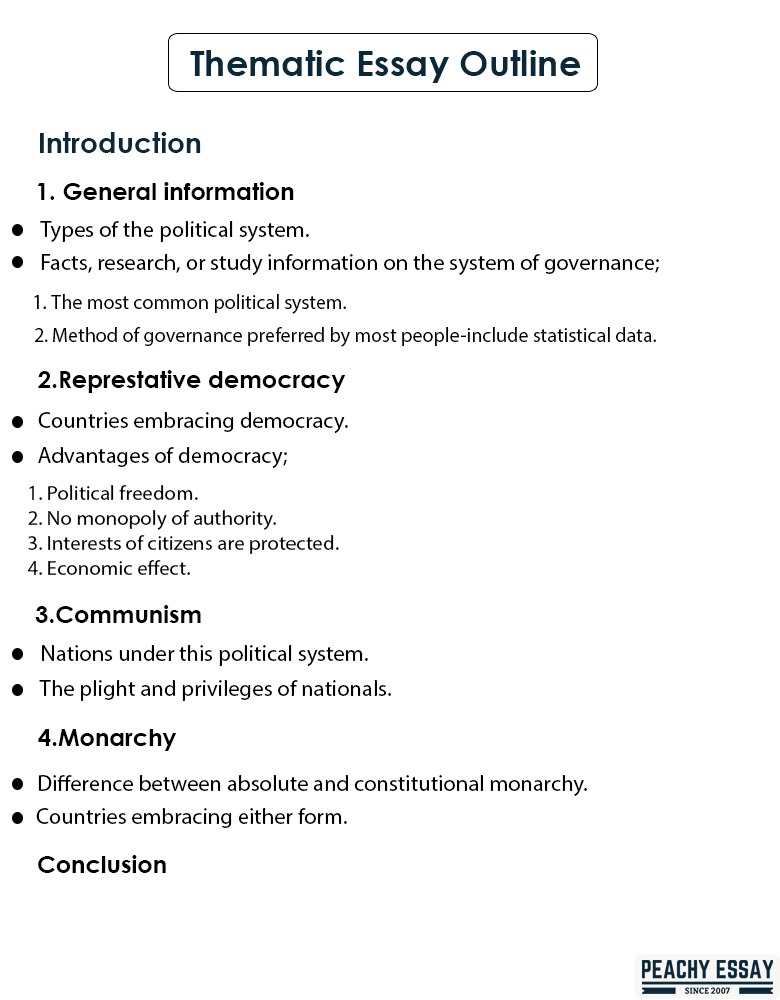
Download Article. 1. Read the essay prompt carefully. A theme essay usually responds to a specific prompt given to you by a teacher or professor. Most essay prompts will ask you to identify the theme, or the overarching message, in a text. Look at the terms used in the prompt and highlight keywords or important terms.
To write a theme statement, follow these 3 steps: Pick the main topic addressed in the story; Pinpoint the author's view on the topic; Format that perspective using a theme statement template; Let's dive a little deeper: Finding the theme of a story using topics. After you're finished reading the book, story, or essay (you did read it, right ...
Don't discount the synopsis on the back of the cover, either! You'll often find a lot of good info there. 4. Use a Template or Theme Statement Generators. Congratulations! The book you are writing a theme statement for has now become, at the very least, an "acquaintance", and maybe even a "friend".
Keep the main body logical, so that every paragraph is somehow connected to the previous and the next ones. Step 5. Create a Thematic Essay Conclusion. A strong thematic essay conclusion should highlight all important points from tyourhe essay while avoiding adding new facts or evidence.
2. Pick the most prevalent subject: One thing to note is the significant difference between a subject and a theme. A subject is the general topic of conversation—whether it be love, bravery, deception, etc. A theme is a specific point the author is making about said subject. So, find the talking point that is most commonly being brought up.
Follow these seven simple steps to write an effective theme statement: 1. Ask what the writer believes. Do your best to put yourself in the writer's shoes. Ask yourself what the author wishes they made the clearest to their readers throughout their writing process.
Need tips for how to write a theme statement? Learn how to craft one effectively with these steps to follow, what to avoid and examples to inspire you.
Thematic writing is a staple of high school English and college writing courses. The idea behind thematic writing is to create a piece that uses a theme to tie together different ideas or topics. Thematic writing can be used for essays, short stories, novels, and even non-fiction pieces. In academic writing, thematic essays often center on a ...
Take five minutes to choose your theme and list your words. Now, take ten minutes to write a blurb that communicates the theme above using the words you listed to inject your message into the story. When you're done, share your theme and your blurb in the Pro Practice Workshop here.
Step 2: Choose the text you are going to use. It is important to gather the sources you will use in your essay writing before embarking on writing. The texts include literature abstracts, discussions, or other texts that support your theme. Therefore, it is vital to gather the texts properly.
1. Read the work thoroughly. Before writing your theme statement, it's important that you read and fully understand the material. While reading the text, consider noting and recording the characters, plot, writing style and author's perspective. Use this information to determine the central message of the writing and interpret the author's ...
1.Choose a theme: Pick a subject matter that you're interested in and have knowledge about. It should be broad enough for you to create a detailed analysis but specific enough to be manageable. 2.Read and research: Study the relevant literature, articles, and other material related to your chosen theme.
To write a theme essay, you should follow the following tips: Paragraphs should be five or more depending upon the theme. A minimum requirement is five paragraphs. Brainstorm ideas at first. It must include a thesis statement or the topic sentence. Introduction must elaborate the thesis statement.
Choosing a Theme for a Thematic Essay . Choosing the main idea or theme of such a work is not a straightforward process. It is highly subjective, and what you consider the main theme in a book may not be somebody else's. You have to make sure that what you pick as your main theme is fully supported throughout the book and makes significant ...
Count on your personal experience: A theme that resonates in your life will make the best essay. You are likely to go into depth as the issue affects your lifestyle. Note down your ideas: Some ideas that come to your mind may seem useless. However, note down every idea as they may seem important at the latest.
So themes are in that sense an intrinsic part of nearly all writing. At the same time, the themes that a writer is interested in exploring will significantly impact nearly all aspects of how a writer chooses to write a text. Some writers might know the themes they want to explore from the beginning of their writing process, and proceed from there.
A theme essay is derived from a novel, short story, or another piece of literature. The first step and a major pre-requisite in writing a theme essay is iden...
How to Write a Theme Essay - 3 of 7 - MLA Format
Step 4: How to Find and Explore the Central Theme. When writing a theme essay, the key is to effectively identify, explore, and analyze the central theme of a work or event. Here's a step-by-step guide on how to do so: A. Identifying the Main Subject or Idea- The first step in writing a theme essay is to identify the main subject or idea that ...
This lesson has a focus on analyzing theme using a five paragraph essay. There are different ways to approach this task, but here are three options.
Sample College Essay 2 with Feedback. This content is licensed by Khan Academy and is available for free at www.khanacademy.org. College essays are an important part of your college application and give you the chance to show colleges and universities your personality. This guide will give you tips on how to write an effective college essay.
"Theme in Literature" In order to write an effective essay, students need to: 1. Understand what "theme" is and how it is applied to literature. 2. Be able to understand and interpret the novel/story they are writing about. Understanding Theme: • Teach students what theme is and share tips for identifying a theme (page 1).
Second, follow these steps on how to write an argumentative essay: Brainstorm: research, free-write, and read samples to choose a debatable topic. Prepare: organize thoughts, craft a thesis, decide on arguments and evidence. Draft: outline an essay, start with an engaging introduction, delve into arguments, and conclude like a boss.
How to Write a Theme Essay - 1 of 7 - What is a Theme?

- Scheduled Day Tours
- Private Day Tours
- Private Holiday Tours
- Nordfjordeid
- City Sightseeing Tours
- Fjord Tours
- Most Popular Tours
- Panorama Tours
- Popular Places
- Trending Tours
- Walking and Hiking Tours
- Our Partners
- Free Cancellation
- Terms & Conditions
- Privacy Policy
- Environmental Policy
- Cookie Declaration
Molde the Adventurous Atlantic Ocean Road
Proceed booking, already a member.
Username or E-mail
Forget Password?
+ 5 = 12
Don't have an account? Create one.
Adding item to wishlist requires an account.
6 + = 14
Please be Advised:
- Book Locally
- Why Book Locally
- Our tours tend to sell out
- Booking process is in EURO
Do you have a Question?
Do not hesitate to give us a call. Our team of experts is happy to assist you!
(+47) 922 72 247
Why Book With Us?
- High Quality at a Fair Price
- Excellent customer service
- Tour itineraries based on experience
- You’ll receive a full refund if you cancel at least 24 hours in advance
- Back in time guarantee (for cruise ship passengers)
Details about this scheduled guided day tour:
Our tour starts in the beautiful “City of Roses”, Molde. Molde was given this name for its numerous parks and public gardens. From Molde, we travel towards the traditional fishing village of Bud. Along the way we pass the Romsdalsfjord, the Malmefjord and the Elnesvågen area, famous for producing the delicious “Jarlsberg” cheese.
In Bud, we visit the Ergan Coastal Fortress from WWII. Ergan offers you a glimpse into the dramatic history of Bud, as well as beautiful views towards the village and over the ocean.
Our journey continues along the infamous “bay of shipwrecks”, Hustadvika. You will notice how the landscape changes from a fertile countryside to rugged, windblown islets and reefs, before we arrive at the Atlantic Ocean Road. This impressive road counts eight bridges, including one that is 23 meters high. These bridges seem to defy nature as they wind their way along the archipelago in a spectacular zig-zag pattern. You will soon understand why this road was named the world’s most scenic drive by “The Guardian” and awarded the title of “Norwegian Construction of the Century”.
Our next stop is at Eldhusøya at the very middle of the Atlantic road. Here, you can enjoy a cup of coffee or a local pastry, or walk around the entire islet on a newly constructed walking path. This 10-minute stroll, accessible for everyone, offers an amazing view over the wild and open Atlantic Ocean. On a clear day you might even spot a whale or a seal on the horizon.
After driving across the Atlantic Ocean Road, our journey goes back to Molde, passing the renowned marble quarries of Eide. Before going back to the meeting point of the tour, we will make a final photo stop on the top of Mount Varden for a spectacular view over the city and the 222 peaks on the other side of the Romsdalsfjord.
Meeting Point
Cruise Terminal / Hamnegata 8, 6413 Molde, Norway ( Google Maps ). Be at the meeting point 15 minutes before the scheduled departure time. The meeting point is within walking distance from the port/pier and most of the hotels.
We do adapt to the departures of cruise ships.
Guided Languages
What is included.
- Guided Tour
Attention Points
- Tour duration; 4 hours
- Difficulty; level 1, easy, suited for everybody
- We advise all our guests to wear appropriate shoes and clothing
- In order for our excursions to be available for everyone, the time of departure/arrival of each excursion is set to match the itineraries of the cruise ships. In case a time of departure needs to be adjusted, you will be notified in time
- Molde, “the City of Roses”
- The traditional fishing village of Bud
- The Ergan Coastal Fortress
- The adventurous Atlantic Ocean Road
- Several photo stops
- Spectacular views
Download a PDF fact sheet with all the information about the selected tour
Itinerary from the Meeting Point
- Drive to Bud via Malmefjord and Elnesvågen
- Ergan fortress in Bud; photo stop
- Drive to the Atlantic Road; visit
- Drive back to Molde via Eide
- Visit to Mount Varden; photo stop
- Drive back the Molde pier
*The order of stops may vary

Frequently Asked Questions
I travel on a cruise ship. will i be back in time for the ship’s departure.
Yes, absolutely. We have a back-in-time guarantee for guests travelling on cruise ships. To this end, we kindly ask you to fill in the name of your ship during the booking procedure.
I travel on the Hurtigruten Coastal Steamer. Are your tours suited for me?
That depends on the date of your arrival, and the kind of tour you are looking for. We kindly ask you to contact us per e-mail with specifics.
I travel on a cruise ship. What happens if the ship decides to cancel a port call due to, for example, bad weather?
Rest assured that in such cases, you are entitled to a full refund.
Do you pick up passengers at the Cruise Terminal?
Yes, we always have staff (wearing bright yellow jackets with our company logo) ready to welcome our guests on the Cruise Terminal, just outside the security gates. Our buses will be parked on the Terminal, or as close by, always within walking distance.
I will be staying at a hotel/AirBnb, where do I find the meeting point?
Our staff (wearing bright yellow jackets with our company logo) will be just outside the security gates of the Cruise Terminal. Our buses will also be parked on the Terminal, or as close by, always within walking distance. The address of each meeting point can be found on our website under “Contact Us”.
Where is your meeting point? How do I find you?
Our staff members (wearing bright yellow jackets with our company logo) will be waiting just outside the security gates of the Cruise Terminal, carrying the logo of Norway Excursions. Our vehicles also carry the logo of Norway Excursions. Should you not see our staff members on the pier immediately, rest assured that they will at the meeting point at least 30 minutes before the scheduled departure of the tour.
Can I reserve a seat now and pay upon arrival?
We always ask our guests to pay in advance/upon booking. Tickets can also be purchased on the spot if there are available seats on the day of the excursion. However, our excursions tend to sell out and unless you have booked in advance, availability cannot be guaranteed. Please note that any promotional offers or discounts are not applicable to sales on the spot.
We would like to book a Private Tour. Do I have to pay the full amount at once or can it be split?
It is possible to pay the full amount at once. If preferred, it is also possible have each couple/participant of your group pay their own share. Should you prefer to split the payment, we kindly ask you to contact us and we will follow up accordingly.
What happens if I don’t find you/make it to the bus in time?
We kindly ask you to contact us by phone in such cases. The phone number can be found on your ticket or our website. However, rest assured that we do not start a tour without going through our guest list. If anyone is missing, we will also try to call/contact them, using the contact information provided during booking. Please make sure to enter a phone number you can be reached on, with the correct country code.
I have dietary restrictions. Can I still have lunch on your tours?
In most cases, yes. We will always do our very best to accommodate guests with food allergies or restricted diets due to religious or other reasons. We kindly ask you to make a mention of your dietary restrictions during booking, or to send us an e-mail to inquire about your specific wishes.
How big are your groups and what type of vehicle do you use?
The size of our groups depends on the number of bookings we get for a given tour. We do adapt the size of the vehicle to the final number of participating guests. If a small group/vehicle is important for you, we can also gladly arrange a private tour for you.
I use a wheelchair. Can I still join your tours?
We always strive to welcome guests with mobility- or other issues. We kindly ask you to contact us via e-mail to discuss the specifics.
I see you charge in EURO. Can I pay in my own currency?
It is possible to pay in the currency that is related to your credit card. When you arrive on the payment page, you can select that option. We always recommend using our default setting. For live currency rates you can visit www.xe.com. NB: When it comes to foreign currencies, your bank might charge a fee. For more information, we kindly ask you to contact your bank directly.
Related Tours

Ålesund from Fjords to Trolls

Ålesund the Ultimate Sightseeing Tour

Åndalsnes the Troll Road and Troll Wall
7 bracing experiences on the Atlantic Road
If you’re going to visit the Atlantic Road, take the time to experience more than just the view. Here are seven of the many bracing experiences you should try near the spectacular ocean road in Northwest Norway.
The Norwegian Scenic Route Atlanterhavsvegen – the Atlantic Road – winds its way up the coast of Hustadvika municipality, one of the most exposed stretches of ocean along the Norwegian coast. The road takes you across the ocean, islands, islets, skerries and a multitude of bridges all the way from the fishing village of Bud and 35 km north to Karvåg on Averøya island.
This stretch of road, which is known as both the Norwegian Scenic Route Atlantic Road and as the ‘road across the sea’, is often referred to as the world's most beautiful road trip. This road trip offers much more than fantastic views.
1. A floating delight
With the new tourist attraction on the Atlantic Road, you can soar along the 550-metre-long walkway with the Atlantic breeze caressing your face. The floating walkway is made of latticework floating above the terrain, supported by poles. The floating walkway and service building on Eldhusøya island are at the intersection between construction and art. There are facilities such as a cafe, tourist information and toilets. The geometry of the walking path and service building is very unusual, as nothing is perpendicular or parallel. The project which was a structural-engineering challenge has become a real success.
2. Catch big fish like a local
When you want to catch big fish, it’s smart to get in touch with well-known local guides who can show you the best fishing spots along the Atlantic Road. One of the guide companies is called Strømsholmen Sea-sport Centre. Catch Atlantic cod from the Atlantic Road, or find your sea legs and cast off from a boat. If you want to fish from land, the fishing bridges at Myrbærholmen island are specially designed for recreational fishing. The architect-designed bridges run along both sides of the Atlantic Road at Strømsholmen island. A popular activity for adults and children alike.
‘Ever since the road opened, there has been great interest in fishing in the strong currents under the bridges, among tourists and locals alike,’ says Grete Kongshaug from the Norwegian Public Roads Administration, who is responsible for the Norwegian Scenic Route Atlantic Road. The fishing bridges are made of steel mounted with latticework, and are designed to be easily used by those with reduced mobility.
3. The taste of salt cod and the story of the Saga Siglar ship
The idyllic Håholmen island is situated near the renowned Atlantic Road bridge. Over the years, the island has been a meeting place, harbour and workplace for many fishermen, sailors and merchants. On the island, you can experience a real klippfisk (dried and salted cod) fishing village with traditions dating back to the 18th century. Today, the island is known for exquisite dining experiences. Restaurant Ytterbrygga is famous for its excellent klippfisk dishes and tasty fish soup, thanks to the chefs' recipes and local ingredients.
The adventurer Ragnar Thorseth and his wife Kari began construction of the Håholmen Havstuer in 1989. Around twenty buildings give this island gem the feel of an intimate village and real coastal history. On the main island there is a beautiful natural harbour, sheltered from whatever the weather may bring.
Håholmen island is run by Classic Norway and is in demand as a holiday and conference destination. As well as hotel rooms, there are Restaurant Ytterbrygga , the Silver Bell Kro pub and a museum where you can learn about the story of Saga Siglar – the Viking ship that Ragnar and his crew used to travel around the world from 1984 to 1986. Saga Siglar sank in the Mediterranean in May 1992.
4. ‘Columna Transantlantica’
A 90-metre-long marble snake winds its way around the islets and skerries in the village of Vevang. The artist, Jan Freuchen , named the sculpture “Columna Transantlantica" – the transatlantic column. The snake is made of genuine Italian marble and comprises thirty-nine elements spread across the landscape. The artwork meanders through the terrain, winding out towards the open sea by the Atlantic Road.
5. Try yoga, windsurfing and kiting
Farstadsanden beach in Hustadvika municipality is also a superb starting point for mountain walks, kayaking, climbing, cycling, surfing, kiting and not least yoga. The white sandy beach is about halfway along the Norwegian Scenic Route Atlantic Road. When the waves are too small for surfing, it is also possible to test your skills at SUP (stand up paddling) or join a yoga class with a sea view. A yoga session here will for sure promises an unfrgettable encounter with the ocean and coastal nature - regardless of whether it’s midsummer or midwinter, wearing Gore-Tex and a winter coat.
6. Walk or cycle the coastal path
Put on your running shoes or jump on your bike and enjoy a fantastic trip along the coastal path at Farstad . The path begins on the east side of Farstadsanden beach and leads out to the Nordneset lighthouse. Behold the clear, blue Atlantic Ocean as far as the eye can see. The coastal path continues to Julshamna harbour, through sharp bends, hills and valleys by the sea.
On the way you pass tarns, burial mounds and other cultural heritage sites. Information signs give insight into the area’s nature, flora and fascinating history. There are several picnic tables along the path and at Julshamna harbour there’s a lean-to shelter and barbecue area.
7. See the Atlantic Road from a new perspective
End the day with a mountain walk up the magnificent Stemshesten (667 masl.). The mountain stretches out towards the sea and offers magnificent views over the Atlantic Road, Hustadvika and Western Norway’s coastal landscape. At the top there is an exceptional panoramic view of the inland mountains and the ocean to the north and west. Read the tour description here.
More travel inspiration
The rauma railway: the most beautiful train journey in europe.
The Rauma Railway is the gateway by train to the county of Møre og Romsdal. Lonely Planet has named this section of railway the most beautiful train journey in Europe several times, and it has been used as a backdrop in blockbusters like Harry Potter and Mission: Impossible.
Views that will take your breath away
Take in the sights of sea spray from the ocean hitting the Atlantic Road or the colourful streets in Ålesund. Experience the ticklish feeling in your stomach as you meander down the winding mountain road Trollstigen and be fascinated by how the houses cling to the mountain along the fjord in Geiranger.
Traces of trolls in Møre and Romsdal
The Norwegian film "Troll" on Netflix has taken the world by storm. Among other places, this film was shot in Rauma and Sunnmøre in the north-western part of Norway and tops the charts in a total of 93 countries. The tales of trolls are exciting and fascinating and should not be hidden and forgotten.
Visit the world's densest population of sea eagles
The idyllic islands of Smøla are said to have the densest population of nesting sea eagles in the world. Join us on a sea eagle safari and see these delightful predators up close – an experience you will never forget!

Beyond Donor Travel: Tips and Tools for a Successful Adventure
By Caliopy Glaros , Founder of Philanthropy without Borders
What is donor travel?
Donor travel is a thriving and important subset of impact tourism. While it can be argued that all donor trips are considered impact trips, not all impact trips are considered donor trips. The nuance lies in the distinction between travelers who donate and donors who travel . All impact trips involve travelers who donate (whether that be time, talent, or treasure), as that is inherent in the very definition of impact tourism. These travelers often select a destination based on recreational appeal, travel independently, or join tours that are open to the general public, and may be compelled to make a separate financial gift or engage in a volunteer experience to give back to the places that gifted them with memorable experiences. These are travelers who have been turned into donors through the course of their journey.
Donor travel, however, seeks the involvement of individuals who are already donors and aims to turn them into travelers. These individuals have given, or are expected to give, to the nonprofits that have arranged their tours. The purpose of donor travel is not purely recreational but also to engage more deeply with the organization and its mission. Many of these trips are invitation-only to the nonprofit’s donors or members; while some may be open to the general public, the nonprofit is certain to recruit heavily from within their membership base. These tours are almost always arranged by the nonprofit themselves, as you will see in the American Jewish World Service case study; by tour operators who specialize in donor travel, represented in the case study provided by Elevate Destinations; or in collaboration with a tour company that both coordinates logistics and markets the tours to its customers, such as you will read about in the case study of the partnership between World Wildlife Fund and Natural Habitat Adventures.
While donors may continue to champion an organization and its mission without ever attending a donor trip, these tours have the power to radically transform these individuals and inspire increased investment. The effectiveness of these tours lies in the unparalleled power of personal experience to educate and activate. As philosopher Hubert Dreyfus tells us, “There is nothing more effective for learning new things than the physical discomfort of being out of your element” (Dreyfus, 2011). By taking donors out of their homes and putting them into new environments, nonprofits help them to experience what the American Jewish World Service calls “productive discomfort,” which can lead to deeper understanding and radical transformation. While donor trips are led by universities, museums, and symphonies, nonprofits that conduct their mission-critical work in areas around the world (international NGOs and environmental conservation organizations being just two examples) are also at an incredible advantage in donor travel, for not only do their donors benefit from the “productive discomfort” of being in a new environment but they also have the incredible opportunity to actually see how the nonprofit conducts its work and the dramatic results it has achieved. As American Jewish World Service says, “No reports, newsletters, or events can truly convey the challenges that human rights defenders and activists face and traveling to their communities to meet them where they live and work is an immeasurably powerful and transformative cross-cultural exchange.”
Best Practices Before the Trip: Objectives, Recruitment, and Preparation
The decision to offer a donor trip must lie with the nonprofit, as they will be the entity tasked with recruiting and stand to benefit the most from a successful venture. The very first step in planning a donor trip is to determine the main objective of the initiative. Will it be to educate board members, raise critical funds for a new project, or steward new philanthropic prospects? While many outcomes can be achieved through a single trip, it is imperative to have one guiding objective that determines the course of everything to follow: who will lead the trip, what kind of educational experiences will be offered, and most importantly, what kind of travelers will be recruited?
As with all successful tour offerings, the answer to Who will travel? is not Everyone. Donor Trips are not an appropriate form of engagement for every single donor or member, so determining who is ideal for a trip is the second step a nonprofit needs to take, and it is one that is critically informed by the trip’s objective. If a nonprofit is seeking to raise significant funds beyond registration revenue, best practices show that they should limit invitation to their board members and principal donors who are giving at levels necessary to achieve those financial goals. Donor travel could also be used to recruit and qualify new prospective donors, but because fundraising is a process of relationship-building, there will likely need to be more cultivation steps beyond the donor trip, and thus an organization should not expect to receive transformtional gifts from new donors immediately after a trip concludes. Methods of recruiting for donor trips vary broadly across organizations but are always directly tied to the trip’s objective. In the case study presented by World Wildlife Fund, you will find that they implement trips both at a very exclusive level (invitation only to high-net-worth donors) to advance philanthropy, as well as a more accessible level, offering over 700 trips to their 1.2 million members (revenue comes in primarily through registration). Other organizations, such as American Jewish World Service, set a minimum giving amount donors must meet to quality for an invitation on a trip. The exact attributes an organization uses to determine which donors should be invited on a trip is less important than the thought process and strategy behind how those attributes have been decided.
After filling a trip with the right donors, the next and third important step is to prepare them for the experience . Three kinds of preparation are essential: philanthropic, social, and cultural. If there is an expectation for donors to increase their giving or give at a certain level after the trip, that expectation must be made clear in advance of the trip. Good philanthropic stewardship requires that we never surprise our donors with an ask that they are unprepared to meet. Organizations must be up-front about the giving expectations and work closely with colleagues in fundraising to determine what communications are appropriate depending on the donor.
Social preparation is also key, to put people at ease and get them excited about traveling with the group. For trips where the travelers may not know one another, it is important to make introductions before the trip. Because dynamics are so important on these trips, organizations should do their best to ensure donors travel well together and that there is harmony and synergy within the group. Small tasks such as creating and exchange bio sheets through email or hosting a group orientation over video conferencing go a long way to enhancing group relations. These important steps help to break the social ice before the really trip begins.
Lastly, cross-cultural preparation is essential to ensure donors have accurate expectations and can adjust their behaviors with relative comfort and authenticity. It is a mistake to assume that well-traveled individuals possess a natural talent for discerning cultural differences and adapting accordingly. Donor Trips often involve access do sites off the beaten path and to communities unaccustomed to foreign tourists. These trips necessitate a sensitivity and awareness that a typical tourist vacation does not, so organizations must take care to prepare travelers for the realities they will face at the destination. Cross-cultural preparation should focus on increasing awareness of cultural differences as well as helping donors adjust their behaviors and expectations.
This is also the time for the organization to share their media policy with donors. The media policy describes what photography is allowed and how images and media can be shared online. It should be direct, specific, reflective of the destination cultural norms, and drafted in accordance with the organization’s guidelines on ethical photography and representation. While the media policy may seem a mere formality, it is an essential tool that provides trip leaders with clarity and authority to guide behavior around photography and storytelling and educates donors on the organization’s principles around equity and inclusion. Offer this vital tool before the trip to set accurate expectations and align intentions.
Dos and Don’ts for Trip Preparation
- Do determine the main objective of a trip before you begin recruiting.
- Do let travelers know in advance if there is any giving expectation relating to the trip.
- Do let travelers get to know one another before the trip.
- Don’t assume donor trips are an appropriate form of engagement for every one of your supporters.
- Don’t assume cross-cultural preparation is unnecessary, even if your donors are well-traveled.
- Don’t forget to share the media policy with donors before they travel.
Best Practices on the Trip: Engagement, Education, and Empathy
One of the most difficult aspects of planning and executing a donor trip is achieving the right balance between recreation and education. While a donor’s main purpose on a donor trip is to immerse themselves in the work of the nonprofit, an itinerary too jam-packed with educational elements will be emotionally and physically exhausting. It is important that there are opportunities for recreational activities, for reflection and dialogue, and for general downtime. Here it is important to distinguish between the recreational and the educational: recreational opportunities aim to delight the traveler, while education experiences aim to instill empathy and inspire action. Achieving this involves a reimagining of the typical tour.
Because most readers likely will be familiar with the elements of a recreational experience, this section aims to clarify an educational experience, which is undoubtably the most critical part of the donor trip itinerary. When donors come in contact with the people and communities who have been impacted by their giving, it is essential that these encounters serve not only to prove contextual knowledge but also to enhance the donors’ understanding of those people’s perspectives—in other words, enhance donor empathy. Rather than the popular misinterpretation of “feeling what another person feels,” empathy is actually defined as “the ability to understand another’s perspective” (Oxford Learner’s Dictionaries, 2019). How organizations achieve that understanding through an educational experience is by making it interactive. Donors should not be offered only the role of passive observer, as they would be watching a movie or listening to a lecture. Empathy is not a tool that can be learned by passively acquiring new knowledge. It must be activated through engagement. Instead of structuring tours with long lectures, organizations should consider how the experience could be transformed into an activity, whereby donors learn by doing. During this activity, instead of expecting donors to ask questions of the guide, guides should ask questions of the donors. After the activity, having donors put into words their own interpretations of the experience helps them make their own meaning and inspires action (Ham, 2013).
Operational partners are critical when determining the design of educational experiences and overall logistical implementation. If the nonprofit is conducting mission-related work at the trip destination, it is imperative that their local staff and partners be involved. While these people are essential to the design of the educational experience offered to donors, they can become easily overburdened if they are expected to manage all the logistical components of a trip. This is where specialized tour companies can provide great value to donor trips by managing all the logistics and coordinating the recreational elements of a donor trip. Technical experts are also frequently invited to accompany donors on a trip. Such expertise could be found in a university’s faculty, a nonprofit’s senior-ranking program officer, a scholar, an engineer, a researcher, an activist, or others who possess a depth of knowledge about the work and whose presence serves to interpret the scene and contextualize the experience for donors. Lastly, many donor trips also involve the participation of a fundraising staff member, such as a major gifts officer or a vice president of development, who is tasked with stewarding relationships with the donors on the trip. Whether or not a fundraising staff member attends a donor trip is determined by the trip’s objective and the makeup on the donors on the trip.
While operational partners (local program staff and tour operators) play a vital role in the ability of a nonprofit to effectively execute a donor trip, the most important voice in implementation has yet to be named: that of the local community. The people at the destination, some of whom may have been impacted by the work of the nonprofit and the philanthropic support of its donors, hold the most valuable perspective on how the trip should be conducted, and their wishes should be held above all others, even the donors. Failure to listen to the local community about how they want to be engaged is both unethical in theory and harmful in practice. CREST has gone to great lengths to document the harms caused by encounters that serve the needs and interests of travelers over that of local communities, but for the purpose of this chapter, a few examples will be described. Short-term visits to orphanages have been shown to cause harm to children’s social development by subjecting them to a revolving door of people who enter and exit their lives seemingly inexplicably (Al Jazeera, 2019). Groups of well-intentioned travelers eager to meet with survivors of sexual violence, human trafficking, and domestic abuse would find such encounters to be impossible in their home countries, where survivors’ identities are protected by law for their safety and dignity.
The concern for the dignity and well-being of local communities is well-documented in all three donor travel case studies. American Jewish World Service says they “strongly consider the impact and possible outcomes of a group of Westerners parachuting into their communities for a few hours or half a day.” More explicitly, such possible outcomes could include re-traumatization of survivors, dependency on handouts, extraction of valuable resources, and disruption of community life. These are no small matters to contend with. For foreigners unfamiliar with the local environment, it is impossible to assess the risk of such outcomes. This is why all three case study contributors stressed the importance of working closely with local partners (who may live at the destination and share identities with those in the local community) and bringing donors only to sites where local people have expressly given their consent. The local community plays a critical role in determining things such as the types of rituals donors are shown, who donors can interview, and how donors are to conduct themselves on-site. As World Wildlife Fund explains, “The communities around natural areas are the stakeholders. They serve to gain the most and lose the most, depending on how the tourism industry works within their region.” Successful engagement of donors means that nonprofits cannot ascribe to the Golden Rule, treat others the way we want to be treated, but that they ought to do as sociologist Milton Bennett suggests in his coinage of the Platinum Rule: treat others the way they want to be treated (Bennett, 1979). Admittedly, it is hard to know how others want to be treated unless they tell us. So, this is why nonprofits and tour companies rely heavily on their local staff and partners to properly liaise with the community and ensure their voices and perspectives are informing the trip design and implementation.
Dos and Don’ts During the Trip
- Do aim to strike the right balance between education, recreation, reflection, and downtime.
- Do work closely with program staff to curate the educational components of the trip.
- Do listen to the local community on how they would like to engage with donors on a trip.
- Don’t overburden program staff with logistical minutiae; do hire a local operator if capacity is an issue.
- Don’t treat others the way you want to be treated; treat them the way they want to be treated..
- Don’t forget that empathy is achieved through participation, not passive listening.
Best Practices After the Trip: Follow-Up, Stewardship, and Storytelling
Even after donors return home, the work of leveraging the trip continues. Many nonprofits fail to realize that what they do after the trip is almost as critical as what they do before the trip and what they do during the trip. Failure to follow up promptly can result in lost opportunity, not just in terms of revenue but also relationship. Follow-up must be timely, specific, and actionable. Delayed follow-up ensures that donors will feel unimportant and a low priority compared to the organization’s other initiatives. Vague follow-up ensures that donors will not understand the message or make an inaccurate conclusion. Inactionable follow-up, such as sharing information without any explicit request to reply or to donate, ensures donors will take no action.
Typical forms of follow-up include, but are not limited to, thanking donors and acknowledging their past contributions, asking for increased support, surveying them about the trip, and exchanging resources (photos, quotes, stories). Other ways of continuing to engage donors could be asking them to host house parties to share their trip experience with friends and family, attend trip reunions with their group (if most of the travelers are in the same geographic area), speak at the nonprofit’s galas or other events, and help to recruit future travelers from their networks. In order to experience the lasting effects of a donor trip, nonprofits should continue to steward and engage travelers with multiple offerings and invitations. The trip itself may plant the seeds for transformative results, but those seeds must continue to be watered after the trip so that they will grow.
Another popular way to leverage a donor trip is to use the collateral (photos, videos, quotes, testimonials, and stories) acquired on the trip to spread awareness about the organization’s mission, raise funds in future campaigns, and market the travel program to other donors or audiences. With an effective media policy in place, cross-cultural preparation, and a good working relationship with local guides and partners who can serve as cultural liaisons, the organization should be in a good position to assess what kinds of stories are suitable to share with broader audiences. Over the past several decades, there has been an industry-wide movement to transform nonprofit storytelling from messages of guilt and pity to those of resilience and agency. Just as the voices of local people shape a media policy, trip preparation, educational content, and experience design, these same voices must be centered in the stories the nonprofit tells about them.
This can be a hard balance to strike, particularly in donor travel. While nonprofits may center the voices of the local community in their fundraising campaigns, travel stories are, by nature, self-centering, since the protagonist of the story is the traveler. Donors will naturally want to share their travel stories and should feel encouraged to do so. However, the nonprofit will want to ensure that they are not promoting their own experiences at the expense of the local people’s dignity. Posting identifying photographs of children online without parental permission is a crime in many countries. Posting photographs of a village or community that depicts garbage and dilapidation makes its residents feel ashamed. Telling other people’s stories or sharing identifying details without their consent are abuses of trust.
Organizations need to encourage donors to share their travel stories while being mindful of the trust the local community has placed in them. Just as they prepared the donors before the trip to be respectful and mindful, they can continue to have conversations with donors about ethical storytelling and representation and weave this into an organizational commitment to equity and inclusion. By continuing to engage donors on these topics, the nonprofit is helping them embody these principles in their own lives and further serve as ambassadors for the nonprofit.
Dos and Don’ts After the Trip
- Do make all your follow-up communications prompt, specific, and actionable.
- Do provide donors with opportunities to further their engagement, through giving, volunteering, or attending events.
- Do consider how the voice of local communities shapes the stories you tell.
- Don’t fail to follow up with donors after a trip—this is the most important part!
- Don’t allow the dignity of the local community to be jeopardized for marketing or fundraising purposes.
- Don’t stop having conversations around equity and inclusion—this is part of the journey.
The Future of Donor Travel
Where do we go from here.
The amazing success stories you will read in the following case studies are not exceptions—Donor trips really do have the power to change lives and catalyze incredible financial support for an organization. In just one example, World Wildlife Fund has reported incredible results of its travel program, including a 35-times increase to average lifetime giving and a 19-times increase in average gift size; those donors who travel with the organization are 37 times more likely to have $1,000,000 gift capacity and are 21 times more likely to make a planned gift (Sano, 2019). Other nonprofits report similar results: that their donor travel programs lead to dramatic increases in annual contribution following a trip, as well as increased engagement through activities such as volunteering, joining the board or a committee, and making a planned gift.
There are many factors that suggest donor travel will only continue to grow. Travel industry trends of the past two decades show consistent growth despite recessions, terrorist incidents, and pandemics (WTTC, 2020). While the 2020 outbreak of COVID-19 will undoubtably affect the sector in the long term, the motivations that inspire people to travel and to give are not so easily quelled. Trends in philanthropic giving in the U.S. show that while the number of people giving to charity is decreasing, wealthier donors are giving more and more (GivingUSA, 2019). Therefore, stewardship of these principal donors will become more and more critical as mass-market fundraising struggles to acquire and retain supporters. Donors Trips are the ultimate way of engaging these principal donors and will continue to play a critical role in the fundraising plans of many successful organizations.
Another trend that suggests growth in donor travel is, ironically, the increasing digitization of fundraising. While almost all forms of donor engagement have moved online, from social media campaigns to virtual events, offering donor trips is a differentiator for an organization’s fundraising program and provides a coveted opportunity for human connection amid a crowded and noisy virtual space. “These journeys are personal,” as Elevate Destinations writes. “Everything that goes into them matters. There is no substitute for witnessing and connecting with an issue or topic in a personalized way.”
Travel is a powerful force for transformation, both in people and for the places they live and visit. “You cannot love and protect something you don’t know,” says Karl Egloff of World Wildlife Fund. So, it is important that we provide donors opportunities to enhance what they know about themselves, about this world, and about the people of it. Even—and especially—in uncertain times, people’s love for life, for nature, and for their fellow humankind persists. Their desire to protect and affect positive change in the world persists. As we enter a new era for travel and philanthropy, donor trips will continue to be one of the most powerful tools we have to harness the passion of our supporters and connect people with the change they want to see in the world.
About the author:
Caliopy Glaros is the founder of Philanthropy without Borders, a consultancy that provides strategic guidance to nonprofits and travel operators on philanthropic travel. She specializes in helping mission-driven organizations craft strategies for their travel programs, raise money from travelers through ongoing stewardship, and curate experiences that build empathy and intercultural competence in their guests. In addition to her extensive research, writing, and speaking, she provides group training, individual coaching, and project consulting on mass market communications, one-on-one stewardship, events, site-visits, tours, and travel programs. Caliopy has an academic background in Anthropology and Adult Learning, is a certified trainer in Intercultural Communication, and is the Inclusion-Diversity-Equity-Access (IDEA) Chair of the Oregon and SW Washington Chapter of the Association of Fundraising Professionals.
Al Jazeera. (September 15, 2019). “Cambodia’s Orphan Business: The Dark Side of Voluntourism”. https://www.aljazeera.com/programmes/rewind/2019/09/cambodia-orphan-business-dark-side-voluntourism-190912110400225.html
Milton J. Bennett. (1979). “Overcoming the Golden Rule: Sympathy and Empathy.” Annals of the International Communication Association , 3 (1), 407–422.
Hubert L. Dreyfus. (2008). “On the Internet.” Routledge, Taylor and Francis Group: New York.
Sam H. Ham. (2013). “Interpretation: making a difference on purpose.” Fulcrum Publishing .
Oxford Learner’s Dictionaries. (2020). https://www.oxfordlearnersdictionaries.com/us/
J. Sano. (September, 2019). A World Tourism Day Forum . A World Tourism Day Forum . Washington, DC.
World Travel and Tourism Council. (March 26, 2020). Travel Tourism continues strong growth above global GDP . https://www.wttc.org/about/media-centre/press-releases/press-releases/2019/travel-tourism-continues-strong-growth-above-global-gdp/
Api Podder. (June 19, 2019). “Americans gave $427.71 billion to charity in 2018 amid complex year for charitable giving”. Giving USA 2019 . https://givingusa.org/giving-usa-2019-americans-gave-427-71-billion-to-charity-in-2018-amid-complex-year-for-charitable-giving/
This Impact Tourism Handbook was made possible by generous financial support from Elevate Destinations , Hilton , Holbrook Travel , and Overseas Adventure Travel .
- Skip to primary navigation
- Skip to main content
- Skip to footer
Elevate Destinations
Experts in socially responsible luxury travel. We design travel experiences that support conservation and local communities without skimping on comfort.

Fundraising adventures for active travelers
Motiviation for your mission.
Elevate’s Charity Challenges connect your nonprofit to inspiring, hand-picked, active adventures in places like Peru, Patagonia and Mount Kilimanjaro. We’ll set a physical challenge and you set a minimum fundraising goal. Watch the funds roll in as your adventure inspires support from each member’s personal network. Make lifelong memories and loyal connections along the way.
The best part? A Charity Challenge ignites a new generation of advocates for your cause — ones that might have come for the adventure but stay for you.

Connect and start planning your charity challenge.
Your experience.

How a Charity Challenge Works
Set a fundraising goal, tailor the trip, recruit a team, go out and conquer.

Your Questions Answered
Who are charity challenges designed for.
Nonprofits with a specific fundraising goal and an active travel-loving donor base. Companies who want to increase visibility and vitality in their philanthropy and CSR. Individuals who want to find an awesome team to join on a Charity Challenge.
Do you have any examples of past itineraries?
Yes! See below for some of our favorite adventures. We can customize trips anywhere in the world.
Featured Trips
Sample charity challenges.
INTERNATIONAL TRIPS:

9-Day Trek into the Most Rugged Landscape in Africa - The Simien Mountains
Simien Mountains National Park is one of the best places to trek in Ethiopia.

An Adventure of a Lifetime - Mount Everest Trek
Challenge yourself physically and mentally on a trek to summit Mount Everest - the tallest point on earth.

Climbing Kilimanjaro: 19,341 Feet of Meaning
The legendary Mount Kilimanjaro in Tanzania is an iconic destination.

Mystical & Magical Morocco: Mount Toubkal Trek
Take an adventure on the road less traveled and summit the tallest peak in North Africa; Mount Toubkal in the Atlas Mountains.
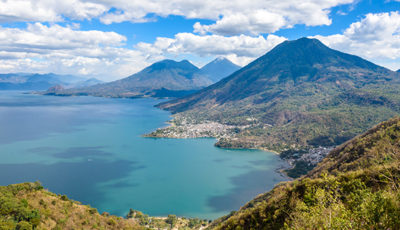
Tajumulco Sensational Summit
Embark on an eight day physically demanding, cultural enriching journey in Guatemala.
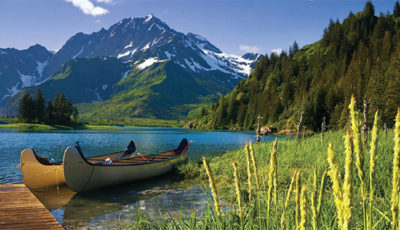
Denali National Park Trek
A spectacular adventure through the biggest mountains in North America and the crown jewel of the National Park system.

Grand Staircase National Monument Trek via the Boulder Mail Trail
Step into a remote, natural, wild frontier on this charity challenge.

Historic Press Traverse
Climb through primeval rainforests, ford deep and strong rivers, and relax and take in wide open alpine valleys.

Sea Level to Summit Trek in Death Valley National Park
The sea level to summit challenge is one of America’s most alluring hikes.
Get on the list
Sign up for the inside scoop on new destinations, family tips, and much more.
Private Travel
- Special Occasions
- Give Back Travel
Group Travel
- Donor Travel
- Charity Challenges
- Learning Journeys
- CSR Incentive Travel
- Privacy Policy
- Buy a Trip, Give a Trip
- Press + Awards
- The Elevate Ethos
- Sustainability
- Testimonials

Charitable Travel Fund
- [email protected]
- Mon-Fri 9am- 5:30pm

- 020 3092 2428

With over 175 years’ combined experience in the travel and tourism industry, as hoteliers, tour operators, travel agents, sustainable tourism and media experts, our volunteer trustees and experienced team are supremely capable of achieving our objectives to help those suffering disadvantage in destinations dependent on tourism income, when that income is affected.
We are an agile charity, making sure we keep our overheads low, our fundraising costs proportionate and our grant-making process tech-lead, aiming to ensure that 85% of any donation is deployed to local and international organisations when people and communities need our help.
We are registered as The Charitable Travel Foundation with the Charity Commission of England & Wales. No. 1189531.

Our Mission
We are a UK based charity working tirelessly to energise and galvanise the support of the global travel and tourism industry, and the travelling public, to build The Charitable Travel Fund. We work to provide tangible financial aid for communities in worldwide travel destinations that depend on tourism revenue but have little or no government welfare support when that income is threatened or extinguished by events beyond expectation or control. In essence, our support starts when tourism stops.
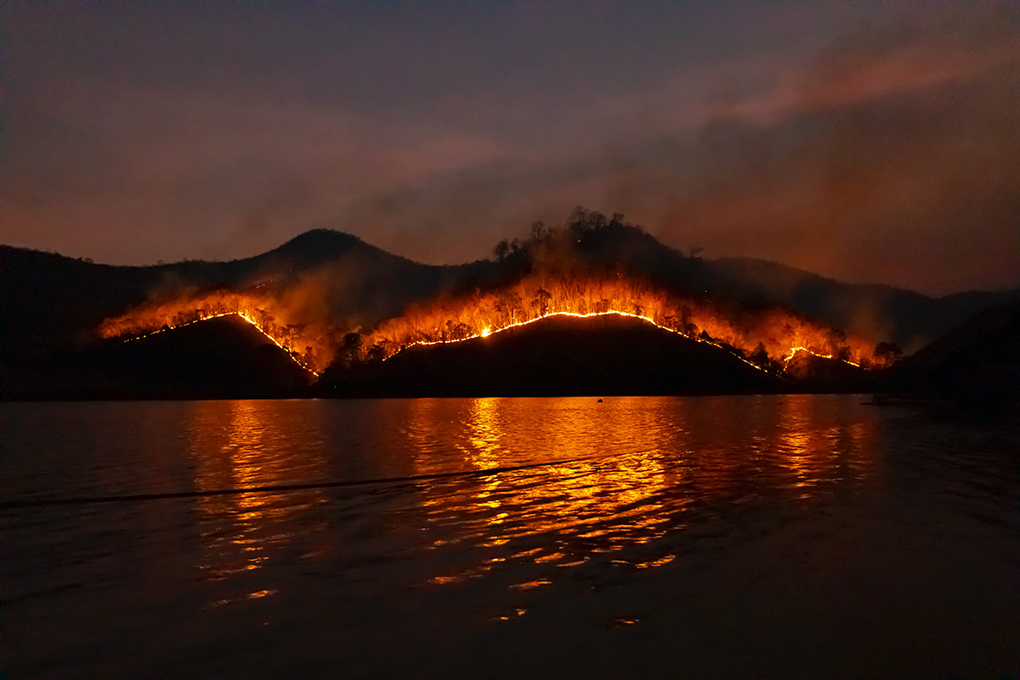
Why We Help
We have all enjoyed the huge positive impact that travel and tourism create. Whether the restorative value of a holiday away, the chance to broaden our experience of other cultures or landscapes or benefiting from the employment promoting tourism offers. Our entire travel experience depends on these communities. When they need us, we must be there to help.
What happens to them when there is no tourism income, no welfare state, no handouts, when the income stops? We are here for the hotel worker, the airport baggage handler, the tour guide, the taxi and transfer driver, the tourist attraction employee, the restaurant and beach bar waiters, the gift shop server and all the workers in tourism when they need us.
How We Help
The Charitable Travel Fund helps by financially supporting local and international charity non-profit organisations, delivering much needed help on the ground, with thoughtful, impactful, and speedy grants. Charitable Travel helps sustain and empower tourism communities to survive adversity, overcome disadvantage and rebuild to provide robust, sustainable, and environmentally conscious income to return to independence and quality of life. Our focus is on communities in places without the full safety net of a public welfare system.
The Charitable Travel Fund is focused on support for disadvantaged communities in destinations where the local economy depends on tourism income and that is disrupted. We appeal to the public and the travel industry to give back specifically to the destinations and communities who have given so much, when they need us.
COULD YOU SPARE £5?
To help a tourism community in need.
Ride with us! Saturday July 13 to Friday, July 19, 2024

Who we are and what we do
The New England Classic (NEC)was created as a unique seven-day fundraising ride for the American Diabetes Association in 1992. Over the next 25 years the NEC raised well over a million dollars for the ADA, in its quest to find a cure for diabetes. But after the disruptions to all fundraising events caused by the pandemic, the ADA made a strategic choice to focus its efforts on one-day events.

This left the New England Classic’s future in doubt, until a group of dedicated NEC riders and volunteers decided to keep the tradition alive. We formed the New England Classic Charity Bike Tour, a 501(c)3 non-profit organization. The NECCBT is completely volunteer-run, with no paid staff and no office. This keeps our overhead low so that all net proceeds from the ride can be donated to charity.
Our organizing team includes veteran riders and volunteers from past New England Classics going all the way back to the very first ride. We do this because we love cycling, because we are dedicated to fundraising for an important cause, and because we’re committed to maintaining the tradition of hosting the best overall charity ride experience in all of cycling, right here in New England.
We will continue to support the more than 34 million Americans living with diabetes by donating the net proceeds of the 2023 NEC to the American Diabetes Association, with a percentage of the proceeds earmarked for the ADA’s Camp Carefree in New Durham, New Hampshire.

Copyright © 2024 New England Classic – All rights reserved
Privacy Policy

2023 Race Entrants
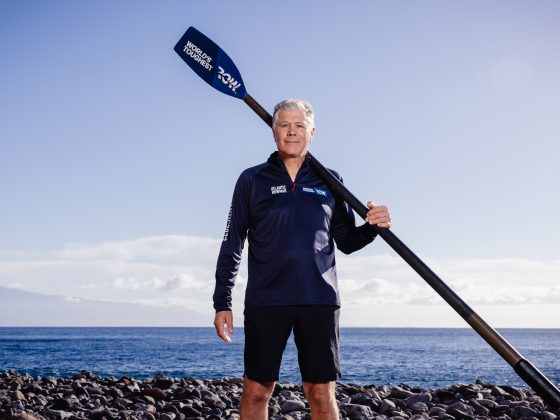
Rower: Jamie Howard Country: United Kingdom Boat Design: R25 Charity: Open Seas & NASS Social Media: Website

In 2019 I witnessed rowers arrive at English Harbour, Antigua, and I knew then that I wanted to do that too one day! I will be 67 years of age at the start line with my wonderful family being fully supportive of this ambition of mine. I have decided to row solo as I don’t feel I can put anyone through the stress of being cooped up in a small boat with me for 2 months or so! The sea has played a huge role in my life having been brought up and lived most of my life on the two small islands of Gometra and Ulva on the West Coast of Scotland. My Father taught me to row shortly after I learned to walk, or so it seemed. The sea, in those days, was brimming with fish and wildlife. I have vivid memories of pods of Orcas, leaping dolphins, and friendly porpoises. Sadly there has been a huge degradation in the bio-diversity of our Seas and Oceans since those days of plenty and that makes me very sad. I have therefore decided to try to do something to raise awareness, and funds, for not only the Marine Charity, Openseas.org, but also NASS (National Axial Spondyloarthritis Society). I currently suffer from Ankylosing Spondylitis (AS), a Chronic Arthritic condition, which in my case has resulted in fusing in my neck and lower spine. However, this does not stop me from enjoying my passions of ski-mountaineering, long-distance walking, scuba diving and, of course, boating. I now want to prove to myself and others that it is possible to row 3,000 miles across the Atlantic with AS. Openseas.org (www.openseas.org.uk) is a wonderful marine charity based in Scotland. The team monitors the health of our seas and lobbies Government for changes and oversight of Marine Protected Areas (MPA’s) around the coast of Scotland. NASS (www.nass.co.uk) is an equally wonderful charity offering support, and information, for AS sufferers, while working to raise awareness of the condition generally to the wider public and with the UK Government. I cannot wait to get out onto the Atlantic Ocean, help these two charities, and be an inspiration to my gorgeous Grandchildren, and our future.
Rower: Victoria Jeffs Country: United Kingdom Boat Design: R10 Charity: Youth Adventure Trust, Coppafeel!, Samaritans – Stratford upon Avon Social Media: Website

Life goes quickly and the age of 56 seems like the right time to row the Atlantic. I sponsored a team back in 2016 and have followed the race every year since although truth be told I was smitten with adventures in the water after reading Swallows and Amazons as a child. My interest in the water stepped up a notch when saw the achievements of Tracy Edwards and later Ellen McArthur’s sailing exploits and I remember then wishing I could enjoy someadventures on the ocean. Now seems like the perfect time.
As it currently stands, according to Guinness World Records once I get to Antigua, I willbecome the oldest SOLO female to EVER row any ocean, not just the Atlantic – now if that’s not motivation to get to the other side, I don’t know what is!
I like to think I’m reasonably fit, I’ve already completed 2 Ironman races, in Sweden and New Zealand and multiple 1000 mile bike rides. I’m confident I’ve got some endurance;however this will be on a whole new level! I will be following up my Atlantic row with a row around GB too, but I’ll wait for 2025 for that expedition, for now, the Atlantic is calling.
My motivation? I became a grandmother in 2021 and my perspective in life has changed a lot, and I want to find out where my limits might be. I’ve not found them yet so I thought why not push the boundaries and see what this ‘old girl’ is capable of.
I also wanted to raise funds for some amazing small charities and having seen the incredible work that my charities address, the goal is to raise over £300,000 to enable them to continue the fantastic work they do. Three small charities making a very big difference.
Youth Adventure Trust – inspire young people through adventure – they work with vulnerable young people from 11-16 to unlock their potential and lead positive lives in the future. They deliver mentoring in a positive way through their unique Youth Adventure Programme and this is a genuinely life changing opportunity, giving young people the chance to build resilience, develop confidence and learn skills that will last a lifetime .
Coppafeel ! – are a b reast h ealth a wareness charity . Coppafeel ! exists to educate and remind every person in the UK that checking their boobs isn’t only fun, it could save their life. Breast Cancer can affect any body , young or old, so learn how to check yours today.
Samaritans – Stratford upon Avon – are always there whoever might need them, whenever that may be. Mental health is so important and we all need to take responsibility for this, in ourselves, our families, our friends, our colleagues and even the stranger we might walk by . In addition, their fantastic outreach work within the community is vital for the mental health in our schools, hospitals and a variety of other initiatives .
Rower: Mel Eissens Country: Netherlands Boat Design: R25 Charity: Interplast Holland Social Media: Website

In 2019, I got involved in a research project “trigger fingers in Ocean Rowers”. With the research team, Hand Surgeons and Hand Therapists, we headed off to La Gomera early December 2019 to start the project. The moment we arrived, feeling the excitement, and talking to the rowers, I was hooked, and it never left my mind… so here we are… – Have I ever done this before? The answer is ‘No’.
– Have I ever rowed before? The answer is ‘No’. Besides my work as a hand therapist, my passion is my motorbike, so not even water-related So why do this? Why not…! but please…ask me again in Antigua As it currently looks like, I will be the first female solo rower from the Netherlands, although I might be slightly cheating as I now live in Switzerland and have lived in the UK before that
And I have been working as a hand therapist for over 23 years and am extremely passionate about this specialized profession, hence my team’s name and the charity. Interplast shares medical knowledge, treatment, and experience with under-resourced communities around the world. Hand surgery, and subsequently hand therapy, is a big part of this.
I am fully aware the ocean row will test me to the max and on a completely different level than I have ever been tested before, physically, and mentally. But keeping in mind that the children and adults with disabilities who need help from Interplast, are and have been dealing with a lot worse. Being able to support these children and adults with your donations during the row to help them in further life, gives me as a hand therapist, an incredible boost and motivation.
Rower: Elliot Awin Country: United Kingdom Boat Design: D12 Charity: The British Heart Foundation Social Media: Website
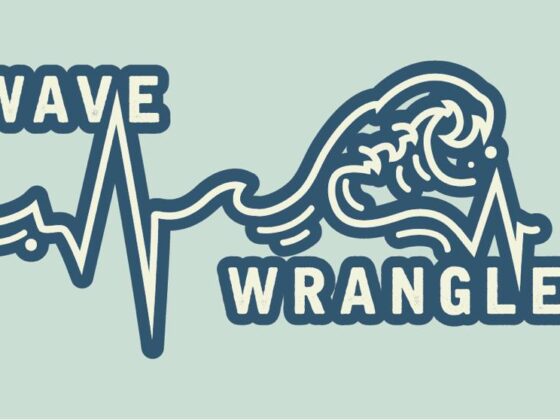
Following my battle with various arrythmias, finally resulting in the implantation of a (CRT-P) pacemaker, taking part in the Talisker Whiskey Atlantic Challenge, Wave Wrangler will provide a platform for raising funds for the British Heart Foundation, as well as bring awareness to a newly formed online platform for anyone living with an arrythmia to share stories and experiences.
Rower: Dominique Meynadier Country: France Boat Design: R25 Charity: Heart Sport and Health Social Media: Website

I have always been passionate about sport ; it was a press article that made me want to tackle this amazing Atlantic oar crossing. I played handball and rugby. I practice water and winter sports such as windsurfing, snowboarding, and ski mountaineering. Road and mountain cycling, motocross are also part of my life, and for 25 years, extreme endurance sports like ultra trail running and cycling have been essential to me.
I’m proud to finish these extreme endurance races, sometimes in very good positions, thanks only to my personal physical and mental preparation.
I’m 56 years old and I need to keep on dreaming. Surely I am lucky to be in good physical condition, I feel great motivation for this new extraordinary sport challenge.
Of course, I realize that preparation in new areas like navigation and rowing are vital, but everything is possible if you work your heart out : I strongly believe in this project.
I do not idealize this crossing at all, but I consider it as an amazing moment within an amazing environment. It will be a privilege to be part of the race and I intend to make the most of it every second.
I have chosen to sponsor the ” heart sport and health ” charity, which supports people with heart failure. I experienced a cardiovascular incident myself without any after-effects, and it allowed me to understand the importance of good physical condition. Willpower is also vital. That is what this association strives to bring : to put patients in motion, gradually, to give them the pleasure of the effort for a sustainable behaviour. My past and this goal of crossing can bring positive images to patients and help them in their efforts.
This race will in any case be a real moment of sharing with the association but also with others participants, all organization menbers, my team, my friends and my family.
Rower: Frank Rothwell Country: United Kingdom Boat Design: R10 Charity: Alzheimer’s Research UK Social Media: Twitter , Facebook , Instagram
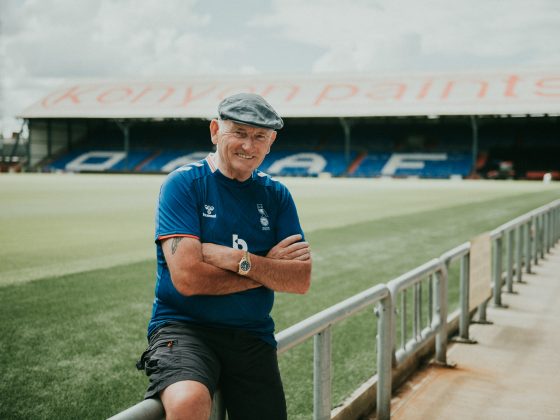
I’m a big believer of living life with no regrets. Which is why at 73, I’m rowing across the Atlantic to raise another £1 million for Alzheimer’s Research UK. But this time, I’m rowing for a cure.
I have galloped around 11 marathon courses, trudged up Kilimanjaro, skippered my own boat around the world, navigated the Northwest passage and around Cape Horn during my circumnavigation of North and South America and I cursed and swore my way through Channel 4’s The Island with Bear Grylls.
Since my last row, I bought my beloved hometown football club, Oldham Athletic, saving it from extinction and in November 2022, I survived major heart surgery. I’m not afraid of death. But I am afraid of getting dementia. As well as my brother-in-law, Roger, I recently lost a good friend to dementia. It’s devastating. I don’t want anyone else to go through it. That’s why I’m raising as much awareness and money as I can for Alzheimer’s Research UK.
If you would like to donate, please visit my JustGiving page and Iceland Foods Charitable Foundation will double it up to £100,000.
Rower: Peet Botma Country: South Africa Boat Design: D12 Charity: smallthingsfoundation Social Media: Website

Around 10 years ago, I heard about this crazy rowing race across the Atlantic ocean. At that time, I was in awe of the race and I could hardly believe that it was even possible. But, it sounded incredible and a small little seed was planted. I incredulously hoped and dreamed that I would one day be brave enough to go on the adventure.
Over the following years I learned about the row through the few available books and documentaries and the dream to actually go do it just grew stronger and stronger, but it was still just a far off dream for someday.
I was eventually able to muster up the courage to make the extremely challenging decision to turn that dream for someday into entering the World’s Toughest Row, Atlantic 2023, as a solo rower.
Why do I want to take on this extremely challenging adventure;
- I feel that I still have a significant sporting achievement within me and was looking for something where I would truly be tested physically and mentally, in an environment where you just do not have all the control.
- The ocean humbles me, but also sets me free and I wanted to experience that in the ocean’s extremes.
- I believe that God planted this seed in me for a reason and that this journey has a greater purpose. What exactly that is, I do not know yet, but I am on the journey and hoping to inspire other people to break free from whatever is holding them back, so that they can follow their dreams. I am also hoping to make a difference in the lives of underprivileged children in South Africa, through the love and protection of the ocean.
Looking forward to taking on this challenge, with a smile!
Freedom Rower
Rower: Nick Hollis Country: United Kingdom Boat Design: R25 Charity: https://www.worldlandtrust.org/ Social Media: Website
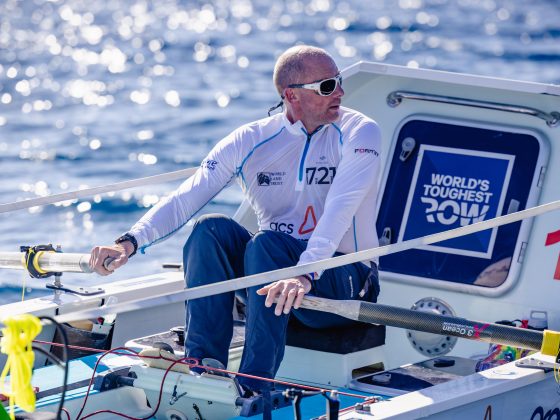
Nick Hollis is an international mountaineer and adventurer who felt compelled to initiate the 721 Challenge after witnessing first-hand the devastating environmental impacts we are having on our planet. The 721 Challenge is a Guinness World Record attempt to climb the Seven Summits, ski both the North & South Poles, and to row the Atlantic Ocean — all in world record speed. Nick has already climbed the highest mountain on every continent, skied solo from the edge of Antarctica to the South Pole, and now has only two more challenges to go in his race against climate change — the North Pole and the World’s Toughest Row (Atlantic Crossing).
His feats have not come without unforeseen challenges. In summiting Mt. Everest, Nick experienced snow blindness, the unfortunate travesties of inexperienced climbers, and failing oxygen systems in the death zone. In 2020, Nick faced an arduous battle with Long Covid — a challenge he states was more difficult than any expedition he has ever undertaken, including Mt. Everest. Despite these hardships, Nick has persevered and inspired many. His resilience, precision in preparation, and calculated risk taking are three reasons he is still here today. For a man more accustomed to being in the mountains than on the ocean, the Atlantic Crossing will present a unique set of physical and mental challenges. Raising awareness for World Land Trust and the race against climate change, remains the primary goal for Nick.
“Saving primary rainforest is one of the most important things we can do to combat climate change. 721 Challenge will be supporting the protection of vital habitats under threat.” – Nick Hollis –
Through the 721 Challenge and as an ambassador for the WLT, Nick Hollis is raising vital funds in support of WLT’s Forests of Mist campaign — a campaign which aims to preserve and protect the threatened lands in the Guanacas Reserve in Columbia and to restore the crucial cloud forest habitat, that impact both terrestrial and oceanic ecosystems. Protecting this land will not only prevent deforestation and promote biodiversity, but also combat the pernicious effects of climate change.
“The money that is given to the World Land Trust, in my estimation, has more effect on the wild world than almost anything I can think of.” – Sir David Attenborough, Patron of WLT-
Nick Hollis & the 721 Challenge team look forward to sharing the incredible journey from San Sebastián de La Gomera to Antigua together with each & every one of you. This journey will bring us one step further in the race against climate change.
“Thank you to everyone who has supported me along the way. None of this would have been possible without the incredible support and generosity of my amazing friends, neighbors, sponsors and 721 Challenge partners.”
– Nick Hollis –
Rower: Henry Cheape Country: United Kingdom Boat Design: R25 Charity: Global Canopy, Sustain: the alliance for better food and farming, Nomad Conservation Fund Social Media: Website
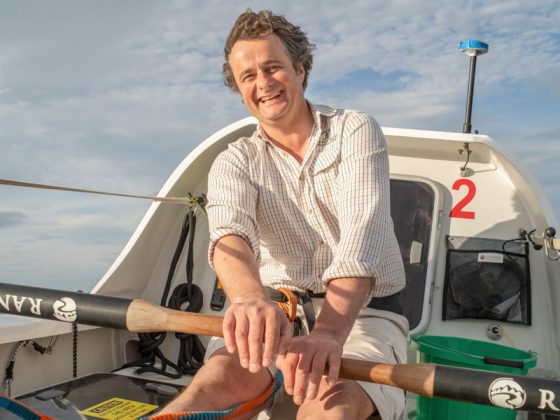
Throughout life I have been lucky enough to have great friends, travelling the world with one, setting up businesses with others and marrying my best friend of all, but now I need to challenge myself to undertake this huge mental and physical challenge with only my own tenacity to rely on. It may seem an extreme way to find some solitude, but the places where we can be truly alone and veritably challenged are fewer and further between these days.
Our chosen charities work to improve the relationship between humans and our environment – I would like to think that when my time is up, the tide will have turned, and planet Earth will have a brighter future for the generations yet to come.
Rower: Liz Wardley Country: Australia Boat Design: R25 Charity: TBC Social Media: Facebook , Instagram , Website , Twitter

L iz always has an adventure on the go, its just the scale of them that vary.
In 2020 she saw the fleet of the World’s Toughest Row arrive in Antigua and the cogs started turning.
Having spent most of her professional career preparing and racing other peoples ocean racing yachts, it was a surprisingly daunting task to take on her own little rowboat and challenge.
Normally a bit of an adrenaline junky , racing fast yachts across oceans, foiling windsports in her spare time and always on the move – its been remarked that this may be the slowest paced things She has ever done.
Liz is fully up for all these challenges and is excited to try and adapt her lifetime of lessons learnt on the water fishing and ocean racing to rowing (very slowly) 3000 nautical miles across The Atlantic Ocean in a 7.2 meter boat.
Her boat is affectionately called ‘Tic Tac’ as it looks like a half eaten tic tac and She’s entered solo in The Worlds Toughest Row, Atlantic race with the start now only a few months away
Rower: Leanne Maiden Country: Scotland Boat Design: R25 Charity: Women’s Fund for Scotland, The Polar Academy & The Mabel Foundation Social Media: Website

I am Leanne Maiden, I am a very ordinary woman in my early 40’s. I am a daughter, sister, friend, wife and a mother of 2 incredible sons – who I hope are going to be very proud of me.
I have never ever lived by myself, and I am not even sure what it feels like to be in my own company for more than a few hours. I love people and have a lot of very incredible people in my life. A lot of my life energy comes from seeing my friends and socialising so I anticipate spending the crossing in my own company is going to be very uncomfortable. But when I look at the level of discomfort that so many people around the world experience over the course of their whole lives, a few months at sea really do pale into insignificance. I am rowing to raise money and awareness for those who cannot escape from their own uncomfortable place – whether it is from having no access to period products or clean water, not being able to go to school when they have periods, being shamed for having periods, being bullied at school, or being in an abusive relationship that they feel trapped in.
The lengths a girl will go to for a rum cocktail and holiday in the Caribbean right!!?
Rower: Sam Glover Country: United Kingdom Boat Design: R25 Charity: UnLtd Social Media: Website
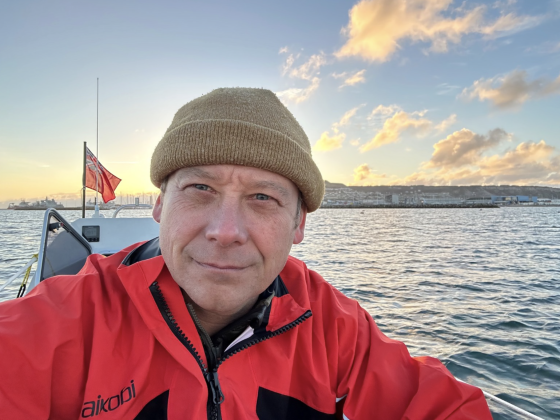
Sam is taking part in the World’s Toughest Row to support Unltd’s essential social program.
Due to unforeseen circumstances, Jake has had to withdraw from the row and, incredibly, Sam has decided to continue the row…as a solo. This news has hit the team hard; both Sam and Jake have found this a tough blow to deal with. However…despite this news, their partnership will continue! Jake, although not with Sam in person, will now take on a key land support role, helping to hit their ambitious fundraising targets, providing support throughout, and being Sam’s biggest cheerleader!
Sam, meanwhile, has been plunged into a very different challenge – unexpectedly, he will now be out there on his own. It will be mentally tougher, it will be physically more challenging, and he’ll be on the ocean for longer. But despite Sam being physically alone on the Atlantic, he has an endless well of support from both Jake and his ever increasing army of supporters! So everything HAS changed, but all of a sudden, this project has taken on a whole new life!
Sam is more than determined than ever to reach £250,000 to support UnLtd’s essential social program. Please donate today to support socially minded entrepreneurs, empowering people from all backgrounds to change society for the better through sustainable, purposeful business.
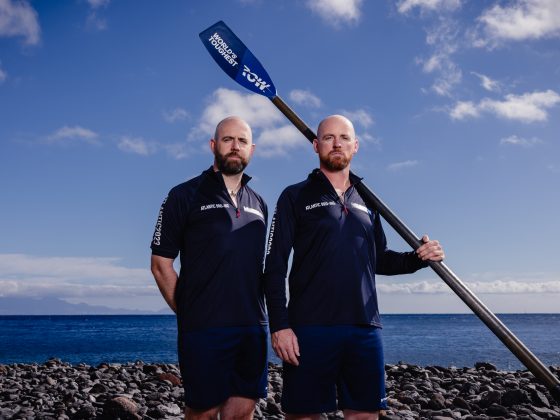
Rower: Andrew Breen & Eamon Breen Country: Ireland Boat Design: R25 Charity: Make a Wish Ireland & First Light Social Media: Website

This row has been a dream of Andrew’s for many years now. Although I (Eamon) am new to rowing, it has been a passion on Andrew’s for at least a decade now. Andrew commented about his dream on a facebook post back in November about a team preparing to do the crossing… and I replied saying “sure I’ll do it with you….” So that’s where are now 🙂 Make A Wish Ireland – this charity to close to me as I have raised previous funds for them. I am also a member of a running who are in the middle of a fundraising event for them (run from Dublin to Donegal) which has been postponed since April 2020 thanks to Covid19. The son (Seimi) of one of the lads died from a brain tumour before he was able to have his wish granted. MAW do amazing work in putting some fun into special peoples lives at the time they need it most First Light – this is a charity that supports families who have been impacted by Sudden Infant Death Syndrome (cotdeath). This is close to us as our oldest brother, Rory, died ages 10 weeks. It was obviously a very tough time for our Mam and Dad back then, as Rory was the first child in the family – another 5 have following since. As you’ll see from the team name, we have a major brother/family element in the challenge and what could be better than to name the boat Rory and to honour him with a donation to help other families experiencing the same difficulties
Rower: Mark and Dani Jones Country: United Kingdom & Wales Boat Design: R25 Charity: Access Sport Social Media: Website
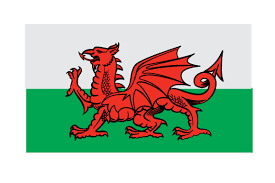
We are Mark and Dani Jones a married couple, who have found our next mad adventure by signing up to the World’s Toughest Row 2023. We have over come many obstacles that life has thrown at us, but together we have over come them all and which each one we have grown stronger as a couple. We are not professional rowers, but we are sport mad, it was our love of sport that bought us together as a couple. This is why one of our chosen charities is Access sport. Sport is such a powerful tool, it can boost confidence, help people overcome loneliness and improve physical and mental health issues. We believe everyone, no matter their backgrounds should have access to sport and Access sport provided so many people the opportunity to participate in a variety of sporting events. We will also be raising funds for our local area including our children’s school. The hardest part of for both if us will be leaving our two young children behind, but we want to inspire our children to follow their dreams and over come all that life has to throw at them. “Because all dreams are just the other side of fear, we just need the courage to take the journey”. So WTR 2023.. Here we come, bring it on! “
Rower: David Ferrier & Garry Hoyle Country: United Kingdom Boat Design: R25 Charity: The Great North Air Ambulance Service Social Media: Website
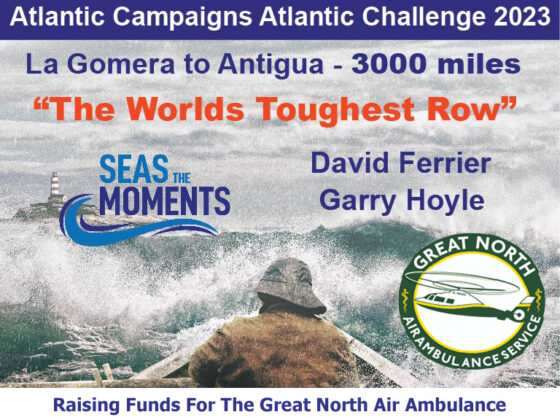
Our names are David Ferrier and Garry Hoyle, and we’re the lucky two who will be embarking on this remarkable challenge of rowing across the Atlantic Ocean.
We have both been lucky to have worked all our adult lives, from leaving school at 16, and have taken the decision independently to retire from full time employment when we turn 60 and 61 respectively in 2023. However, neither of us intends to treat retirement as the end of an era, or a time to simply dwell on our past achievements, but the beginning of the next big thing and an opportunity to make new memories. As we have both remained sporty and healthy throughout our lives, we have talked for some time about marking the occasion with an appropriate physical challenge… and why not “The World’s Toughest Row”?
We hope you’ll join us on this journey, share in the highs and lows and, most importantly, help us to raise as much money as possible for The Great North Air Ambulance Service
Rower: Andy Purvis & Stuart Hatcher Country: United Kingdom Boat Design: R25 Charity: Dementia UK & Sporting Memories Foundation & Bright Shadows dementiauk.org – sportingmemoriesnetwork.com/ – brightshadow.org.uk/ Social Media: Website
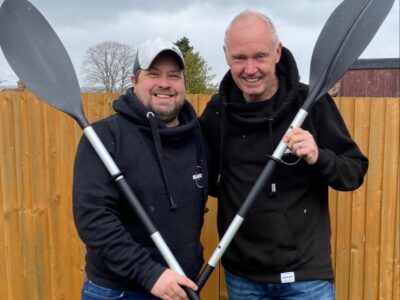
Stuart – Hi Everyone my name is Stuart I’m 47 now but due to entering the TWAC2023 I will be celebrating my 50th somewhere in the Atlantic with one of my best buddies. I’m not an expert sea adventurer, but I do have a huge passion for the outdoors and endurance, so I guess if you think about it this is a combination of both just on an epic scale. But it’s not on the sea where you’d normally find me (especially in the months from December – February) because my biggest passion is Skiing! You’d find me blasting down mountains in powder, and out of season I’d be sitting round a fishing lake followed by a night round the campfire before sleeping under the stars. My love and passion for endurance racing doesn’t come from running ultra marathons or triathlons but it’s Motorsport. So what could I say when one of my best mates asked me to compete in the TWAC2023 with him, a race that combines both of my passions. I didn’t even give it a second thought I WAS IN! The sea has always been a happy and calming place for me from a young age, and that is why the challenge of rowing the Atlantic in aid of Dementia UK and The Sporting Memories Foundation. Mental Health is something I have personal experience of and I hold charities like this close to my heart. Also after the year we have had, I don’t think Mental Health has been more prominent in peoples lives, and is being talked about more and more. Not only will be raising money for a very special charity, I also get to spend a couple of months at sea with someone who I know will keep me motivated, focused and will make me laugh when it’s all starts to feel a little too much. So just like life, the journey from now, as I write this sitting in my kitchen April 2021 until that moment when we finally row into English harbour in Antigua in February 2024 will be one to remember forever. I am so excited to go on this journey, to learn new skills and make some incredible memories. Please help and support us in raising money for this incredible charity. Andy – Hi my names Andy and I will be 60 a few weeks before the start of TWAC2023. Like my buddy Stuart I have always loved the outdoors and extreme activities. My hobbies include Skiing & Scuba diving and I have also skydived among several other extreme activities. My passion is however running having completed many half and full marathons. Rowing the Atlantic will however prove to be the ultimate challenge and we are both excited and honoured to have the opportunity to fulfil an achievement of a lifetime whilst raising money for such a fantastic cause. We are both very lucky to have super supportive families who will encourage us at all times on the wonderful journey ahead.
Rower: Matt Bladen & George Farmiloe Country: United Kingdom Boat Design: R25 Charity: Acorns Children’s Hospice Social Media: Website

In the depths of the pandemic, with just a drop of whisky remaining, two overgrown boys shook hands and sealed their fate. On that dark Christmas night, it was decided they would face their greatest challenge yet – the Atlantic Ocean. This story begins 11 years ago, when Matt and George first rowed together at school. In the years since, they have formed an unbreakable bond, a bond of brothers, the true test of which is yet to come. George loves to take on a challenge, however unprepared, as shown to a crowd of a thousand onlookers during his university boxing debut. Matt has a similar penchant for risk (despite his shocking injury record), and regularly competes at a high level in club rowing. Worcester born and bred, they bleed Worcestershire sauce. Make no mistake, these buoys aren’t just here to make up the numbers. We’re here to have an unforgettable experience, redefine our limits, and raise a huge amount of money for a great cause close to our hearts.
Rower: Chris Mitchell & Robbie Laidlaw Country: United Kingdom Boat Design: D12 Charity: Hospitality Action Social Media: Instagram
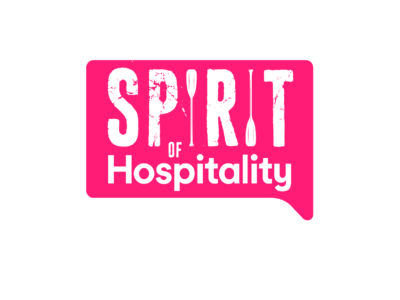
The hospitality industry is built upon a strong community spirit, and this spirit was damaged during the fallout of the pandemic with waves of redundancies sweeping the sector. Hospitality Action support people facing mental health challenges, something we understand the importance of, and want to support throughout our Atlantic campaign. The Spirit of Hospitality is a fitting name for our journey. Built upon generosity, cheerfulness and fun, our campaign brings together an industry that has suffered greatly, to achieve one important goal, the support of Hospitality Action and the vital work they do. From our lives working within the Contract Catering sector, we have partnered with some inspirational sponsors to help us achieve our fundraising goal of £100,000. Our campaign is being supported by some of the best chefs in the UK, who have kindly sponsored us with the creation of meals and snacks that will keep us going throughout the trip, and that we will share with our followers throughout the campaign. Suppliers, farmers, and producers have offered their support through sponsorship, helping to make our fundraising goal a reality. The Atlantic challenge is branded as “the world’s toughest row” and is a long way from the comforts of the industry we know and love. The tremendous power and support from the sector fuels our ambition, and with it we will cross the Atlantic ocean. Chris and Robbie
Rower: Jim Ronaldson & Ian Davies Country: United Kingdom Boat Design: R25 Charity: Papyrus – Suicide prevention in young people Social Media: www.gofundme.com/never2late
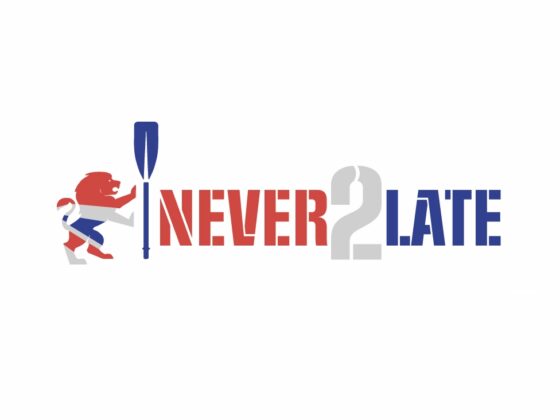
Rower: Janik Prottung & Danny Schleicher Country: Germany Boat Design: TBC Charity: balichildrensproject.org/ & ozeankind.de/ Social Media: Website

We row across the Atlantic Ocean to raise money, for children’s education.
Why not row 3000 miles across the Atlantic Ocean? Why not raise money for education? Why not do it today?
When we met again ten years after graduating from highschool, these questions came to mind. Danny emigrated to Jakarta to support the family business and Janik moved to Munich to work in IT and study physics. Through a video, Danny had heard about the Atlantic Challenge. A beer or two later, we finished the thought. Let’s start this adventure, but risk our lives for what?
We both believe that the better educated the world is, the better we can meet the future challenges like climate change, digitalization, or human rights. With this in mind, we chose to support two educational charities. Bali’s Children Project helps children in the rural areas of Bali. They give them acces to education by sponsoring and renovating schools. Ozeankind combines pollution with education by opening barter stores in Zanzibar. There, children exchange returned plastic items for something of value.
Rower: Lisa Roland & Lauren Champion Country: Canada & USA Boat Design: R25 Charity: Bridges Over Water Fund Website: Website

Lisa and Nini are two strong women in the sailing industry; Lisa works as a captain and Nini as a rigging technician. With over 60,000 nm at sea between us, we believe we have what it takes to take on the challenge of the World’s Toughest Row across the Atlantic. The race itself is an incredible feat, but the team is embarking on an even more fulfilling challenge to change the lives of former fostered youth with the proceeds raised from our campaign.
Cultivated from Lisa’s own experience and personal journey, Team Ocean Grown has developed the Bridges Over Water fund. The aim of the fund is to provide ten young adults who have aged out of the foster care system with an opportunity to find a career suitable to them in the maritime industry. Applications will open on December 12, 2023, the day of the race start, and remain open for 3 months.
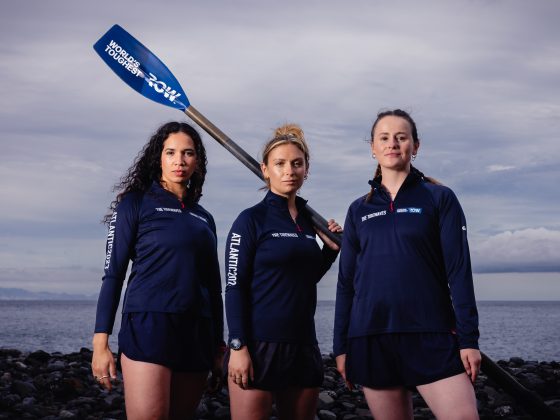
Rower: Caroline Hague, Rachel Smillie & Nicki Kelly Country: United Kingdom Boat Design: R45 Charity: Dash & Thames Hospice Social Media: Website
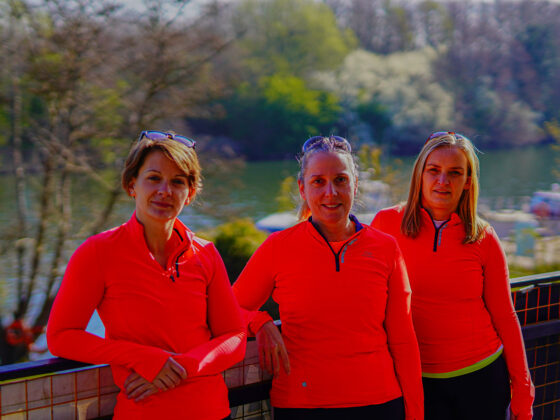
We are all members of Eton Excelsior rowing club and train together on the stretch of water between Maidenhead and Windsor. We are all driven to push ourselves and achieve things that maybe at first seem slightly beyond what people may see as possible. Another member of the club has recently come back from completing the challenge himself and whilst he was training we started the could we, should we, type conversations which finally turned into a yes we should, let’s just get on and do it type conversation. As a group of women, we are not shy of a challenge – individually we have run marathons, rafted down white water, climbed mountains etc and we know that we can and will support each other through this amazing challenge. DASH is clearly a charity that supports women to be the best they can be and encourages them to stand firm in the face of adversity. We all work with young people in our real lives and at our rowing club and know the effect unhealthy relationships can have both on the individuals and on their extended families. DASH is a charity that many turn to in their hour of need and we want to support DASH to carry on their amazing work. We must stand firm against any abuse within relationships and through our challenge we hope to highlight the work of DASH whilst raising funds for the charity. Thames hospice is a charity close to our hearts. I don’t think there is anyone whose lives have not been touched in some way by cancer and the support of organisations such as hospices is vital when individuals and their families are going through the toughest of times. Palliative care is essential so that people can find dignity and peace in the darkest of moments. Thames hospice is a local charity and we hope to help support its profile in the community.
Rower: Xaiver Baker, Paul Berry, Chris Mannion Country: United Kingdom Boat Design: R45 Charity: Hampshire & IOW Wildlife Trust, Surfers Against Sewage and The Seahorse Trust. Social Media: Website
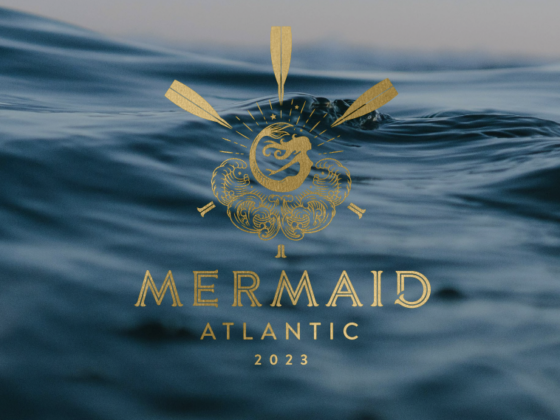
As a group of ocean-loving islanders, the Mermaid Atlantic team are rowing to raise awareness of the pollution and preservation of the world’s water habitats and raise money for marine-focused environmental charities.
The world’s climate crisis is a shared concern for the three teammates, who all embrace the sea as part of their everyday lives. They aim to raise awareness for two issues, water quality, including plastic pollution, and the protection of seagrass meadows. The team will be actively selecting sustainably produced materials for the row and competing as a net-zero outfit to highlight the effect waste disposal and human activity is having on the natural w
Rower: Louise Cox, Robyn Hart-Winks & Jordan Cole-Hossain Country: United Kingdom Boat Design: R45 Charity: Acces Sport, London Youth Rowing Social Media: Website
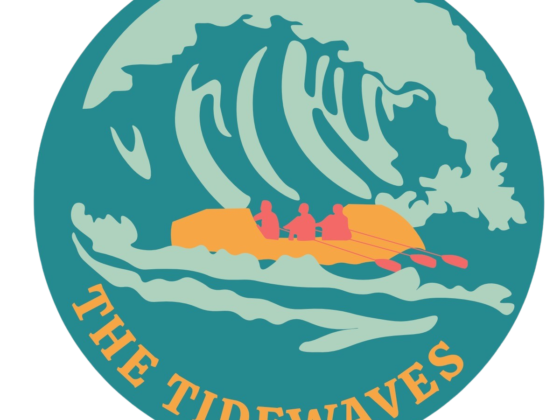
Robyn, Louise and Jordan met at the University of London Boat Club where they became close friends. Their mutual drive, ability to rally each other and desire for adventure let them to the Atlantic Challenge. Supporting Access Sport and London Youth Rowing gives momentum and motivation to the challenge for the crew. It is important that children from all walks of life can play sport, just as the crew did.
The opportunities to access sport that these charities deliver to children and young people are hugely important. The Tidewaves hope to use the duration of the project to engage with these charities on the ground; encouraging, coaching and supporting the initiatives alongside raising funds for their progammes.
Rower: Maddie Difazio-Wright, Grace “G” Pybus and Grace Gilbert Country: UK Boat Design: R45 Charity: John Radcliffe Hospital Neuro ICU, Kidney Cymru, Empire Fighting Chance Social Media: Website & Instagram
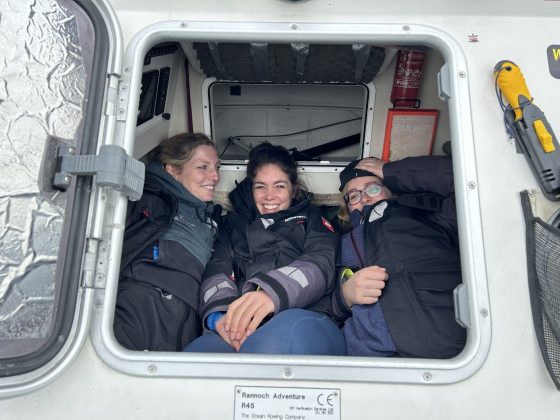
Vibe the Wave are a trio of girls who wish to “Live the Adventure”.
Their mission is to thrive in adventure, rise the challenge, have fun, work as a team with true spirit to overcome obstacles and inspire big dreams!
They are also hoping to host “The Worlds Most Remote Cocktail Party” mid ocean – so watch this space!
The three of us are from all different background but have come together, with no prior rowing experience, for one hellava challenge and an almighty adventure. We are Vibe the Wave:
Maddie – Passion and adventure queen, with enthusiasm for days and an ambition to catch a fish mid ocean! The one who started river rowing, and quickly transitioned into ocean rowing! Enthusiasm for days – no task is too big!
G – Boaty McBoat Grace, the sailor amongst us and lover of the sea; if it floats, she’s sailed it! The even keel to our trio and navigator extrodiannaire.
Grace – The triathlete, endurance sport nutter… set her a task and she’ll complete it, believer than anything is possible and you gotta dream big!
Rowers: Katherine Antrobus, Harriet Carder & Bobbie Mellor Country: United Kingdom and Ireland Boat Design: R45 Charity: WWF Climate Crisis Fund and UNHCR Climate Fund for Refugees Social Media: Website
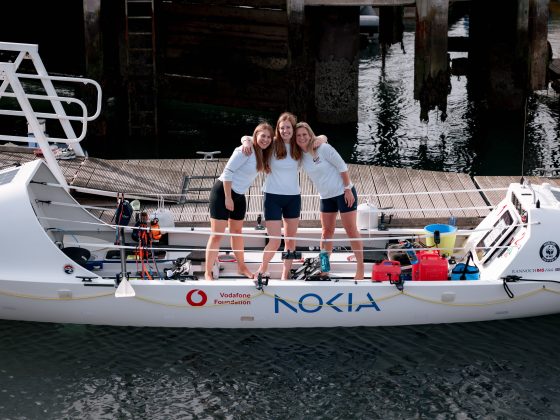
From strangers, to colleagues, to now great friends, we started our journey simply by filling in an application form for Vodafone Foundation’s call out for employees to take on the Atlantic Row. After interviews, selection processes and testing, we formed the WaveBreakers.
Having never taken on a challenge to this scale, we’ve come together as a trio of ordinary women, taking on the extraordinary, proving that anyone is capable of achieving a mighty challenge when you put your mind to it.
United by our passion for our beautiful planet, we’re fundraising to support two charities (WWF and UNHCR) that are protecting those on the frontlines of the climate crisis: our most vulnerable animal species and climate refugees.
Bobbie, our wonderful Skipper, Sustainability Guru and Safety Squirrel, is just the person you want with you on a night shift for a good natter, is never far away from breaking out into giggles and will always be there to spur her teammates along. She’s most excited about the simplicity of life out on the ocean.
Katherine, our Chief Navigator and Super Mum of 3, has a heart of gold and a contagious laugh that will have anyone smiling. She’s hoping to inspire her kids to take on great challenges and protect our wildlife for future generations. She’s most excited about the wildlife we might see on the crossing.
Hatty; our snack pack queen and nutrition lead. Bundles of enthusiasm, but a tough cookie too. Has a dance for every occasion. We’re not sure how we’re going to keep her out of the water given her love of a cold swim! Most excited about the Pina Colada in Antigua.
Rowers: David Tiplady, Aaron Kneebone & Chis Wood Country: United Kingdom Boat Design: R45 Charity: Blue Marine Foundation & Tusk Social Media: Website
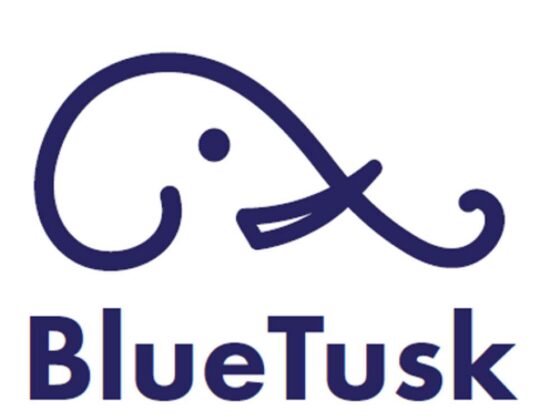
Introducing the crew of BlueTusk
The guys are work colleagues who all share a passion for challenge and adventure; each with their own personal experiences of taking on extreme endurance events (albeit not always on the water). They also share a love of the great outdoors and are using the Challenge to highlight the urgent need to protect our planet’s wildlife and habitats against both human and environmental impacts, raising funds for two amazing conservation charities, Blue Marine Foundation and Tusk.
The team is made up of …
Andy Curtis, loves the open water his experiences include sailing as well as open water rowing
David Tiplady, a veteran of 9 Ironman races with a passion for endurance cycling and running events
Aaron Kneebone, an ex-Royal Marine, who is passionate about the ocean and is a keen competitive cyclist
Chris Wood, with a passion for adventure activities, he is an ex-rower including competitively with the British Army
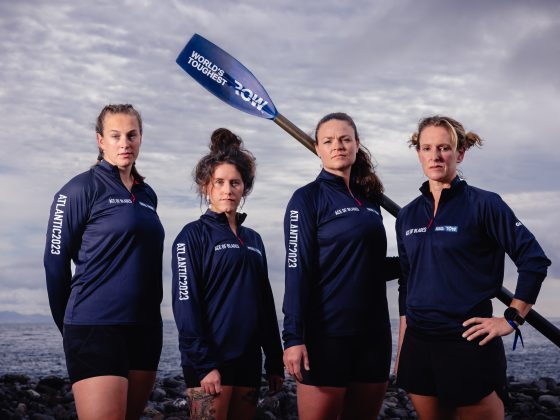
Rower: Lizz Watson, Katherine Windsor, Laura Langton & Beth Motley Country: United Kingdom Boat Design: R45 Charity: Macmillan, Outward Bound Trust and Prostate Cymru Social Media: http://teamaceofblades.com/
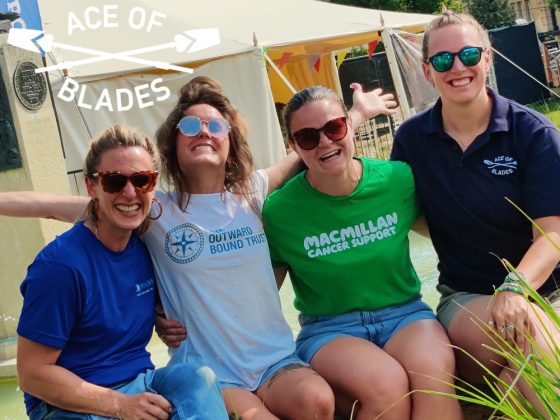
Rower: Chantale Bégin, Noelle Helder, Isabelle Côté & Lauren Shea Country: Canada, USA Boat Design: R45 Charity: Bamfield Marine Science Centre, Green Wave & Shellback Expeditions Social Media: Website
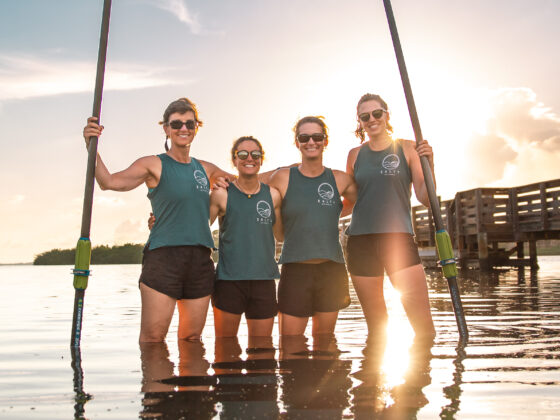
We are three generations of marine scientists, connected through marine research and education. Isabelle, a marine ecologist at Simon Fraser University, was Chantale’s PhD advisor and had a big impact on her ideas in marine ecology and conservation. Noelle and Lauren met while studying coral reef ecology during a field course in Curaçao – that was taught by Chantale! Our paths have all remained intertwined over the years, united by a passion for marine conservation. We have committed our lives to understanding, protecting, and sharing our passion for the ocean. All of us love adventures of all sorts, and competing in the Talisker Whiskey Atlantic Challenge is one adventurous way for us to draw attention to ocean protection, and to support the people and organizations on the front lines of the fight for our ocean. We are splitting our fundraising efforts three ways, which reflects our team’s origins and experiences: some of us are Canadian, some of us are American, so we wanted to support charities based in both of our home countries. But also, we’ve all spent a lot of time working in the Eastern Caribbean, and with the race ending in Antigua we feel strongly that our efforts should also raise funds for marine conservation efforts in the West Indies. More specifically, we aim to raise at least $300,000 for marine conservation organizations, split evenly between the Bamfield Marine Science Center in Canada to support a scholarship fund for students of underrepresented minorities to complete courses and research in marine conservation, Green Wave—a non-profit based in Connecticut (USA) dedicated to sustainable ocean farming, and Shellback Expeditions—a non-profit started by Chantale and colleagues dedicated to marine conservation projects in the Eastern Caribbean.
Rower: Inneke Karrenbelt, Ingrid Voorn, Margot Vries, Marije Van De Bor Country: Netherlands Boat Design: RX45 Charity: Het Vergeten Kind and Jeugdfonds Sport & Cultuur Social Media: Website

“Why?” is the question we often receive when we tell that we’re going to row the Atlantic. Why? It’s hard to explain… It’s a feeling that’s already been there for a long time. A feeling to do something way outside our comfort zones, a desire to do something extraordinary, something we never thought we’re capable of. To prove to ourselves that we are, and that we can do more than we ever expected, both physically and mentally. Go back to our basics, getting to know ourselves and each other even better and find out if what we do in life at this moment is the way to go or if something has to change.
We are fortunate that we can change things if we really want to. There are a lot of children in our country who aren’t that lucky. Who live in an environment of abandonment or violence. We row for these children, by choosing Het Vergeten Kind (the Forgotten Child) as one of our charities. This organization fights for a stable, loving environment where children can develop properly. Give them positive experiences with real attention, so they feel seen and supported and regain self-confidence. Something no one can do without…
Besides that we also believe that children should be able to develop themselves in either a cultural or a sportive way. Engaging in sports or culture helps a child to develop optimally in a physical, mental and social way. In the Netherlands however, 1 out of 11 children isn’t able to do this, due to the fact that parents can’t afford it. Children who can’t join such activities, don’t have the opportunities that are taken for granted by their peers. Our second charity therefore is the Jeugdfonds Sport & Cultuur (the Sports & Culture Youth Fund), since all children should be able to dream of becoming the next professional athlete or world famous pop star.
Rower: Rosemary Satchwell, Alison Smithurst, Helene Monpetit, Julie Brady Country: Jersey Boat Design: RX45 Charity: Grace Crocker Foundation + Blue Marine Social Media: Website

BELIEVE YOU CAN AND YOU ARE HALFWAY THERE
Hi, we are a team of 4 ladies from the Island of Jersey – Channel Islands, United Kingdom. The sea plays a massive part in our general lives and we are fortunate enough to all live within a mile radius of the coast. Hence we are either on the sea, in it or under it most days. As a team of busy working mums, we want to show that age and gender are not obstacles in achieving something you really want to do and believe strongly in the power of our combined team focus to achieve this goal.
When we succeed in our journey across the Atlantic Ocean we will set a new Ocean Rowing Stats World Record, by being the oldest female crew to have rowed any ocean. Along the way we wish to raise funds for two charities close to our hearts; the Grace Crocker Foundation and the Blue Marine Foundation.
The Grace Crocker Foundation provides emotional and financial support for Jersey families who have children requiring medical support in the UK. The Blue Marine Foundation is a charity dedicated to restoring the ocean to health by addressing overfishing. It currently has a number of worldwide projects and one of those is working with the Jersey National Trust in trying to protect the National park around the Jersey coast.
Please join us on our fantastic sea journey!
Rower: Alexander Jackson, Adam Carrier, Jack Chapman & George Dagnall Country: United Kingdom Boat Design: Rx45 Charity: Head Up & Bowel Cancer Uk Social Media: Facebook
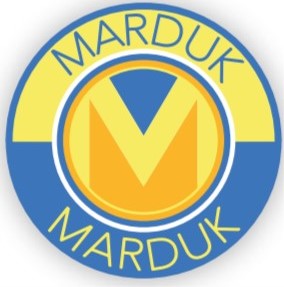
This challenge is a fantastic way for us to raise money and awareness for two charities: Head-Up and Bowel Cancer UK. Team Marduk understand that mental resilience and physical endurance are two of the main components needed to complete the row, we intend to develop ourselves as a team and demonstrate that mental resilience isn’t just something you have, it is developed through adversity.
We want this challenge to raise the profile of our charities and give them a platform to discuss mental health for veterans and services personnel; something which is currently deteriorating. We also want to raise more awareness for Bowel Cancer UK, and help prompt earlier identification for the growing number of young people who are becoming diagnosed with this lethal disease. Finally, much like the Babylonian god Marduk did, we want to conquer the beast of the sea; and to help empower other people who might be going through life’s trials and encourage them to challenge their own limits.
Rower: Marko Rehbein, Amir Anwar-Hameed, Mark Bolger & Paul Heijnen Country: Netherlands & Ireland Boat Design: R45 Charity: MIND US, JIGSAW Social Media: Website & Instagram

Rowers: Timothy Hamilton, Trent Hamilton, Ben Hamilton-Clark & Thomas Hamilton Country: USA Boat Design: RX45 Charity: Send Relief – Afghanistan Refugee Crisis Social Media: Instagram
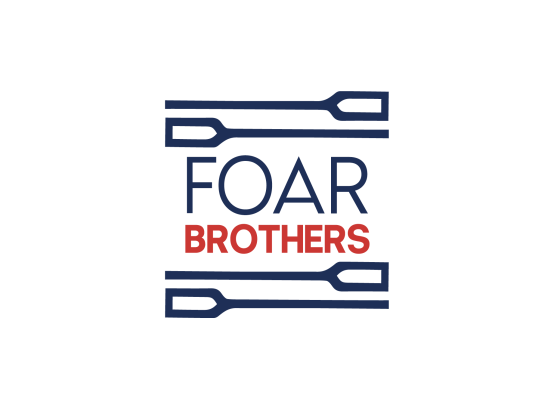
There are few bigger challenges in this world, and my love of the ocean and adventure has drawn my brothers and I toward this row. We seek the opportunity to bond through the adventure, isolation, and challenge.
This charity means so much to us. My brother Troy spent nearly a decade living in Afghanistan running various NGOs. We all have a heart for the oppressed in this world and each of us in different ways have a connection to the people of Afghanistan, so we are super passionate about raising money to help support Afghan refugees.
Rowers: Victoria Monk, Ana Žigić, Ellie Reynolds & Abbey Platten Country: England, Serbia, and Slovenia Boat Design: RX45 Charity: Endometriosis UK, Women’s Sport Trust, Teenage Cancer Trust Social Media: Instagram Website
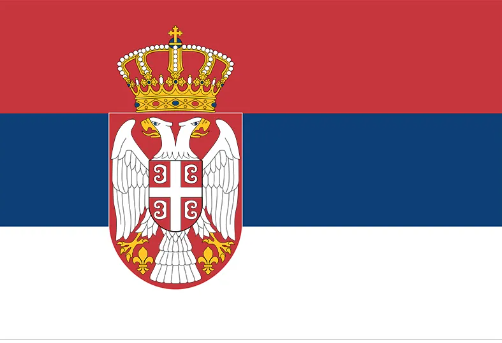
There She Rows is an all-female team racing in TWAC 2023. Uniting four women with a mutual love of adventure – sailors, ironwomen, ultramarathon runners, elite rowers – with one shared goal … to inspire women and girls to get active and to demonstrate that through sport, anything is possible.
Girls drop out of sports at 1.5x the rate that boys do by age 14. By age 17, more than half of girls will quit playing sports altogether. Similarly, in the UK, there are 2 million fewer women than men regularly playing sport – There She Rows want to use the race as a platform to inspire women and girls everywhere, and showcase that with self-belief, their own Atlantic Oceans can be crossed and conquered.
Rowers: Alisdair Putt, Andreas Koenig, Alastair Horton & Stewart More Country: Australia Boat Design: R45 Charity: Veterans Transition Centre (VTC) Jarradale, Western Australia Social Media: Website
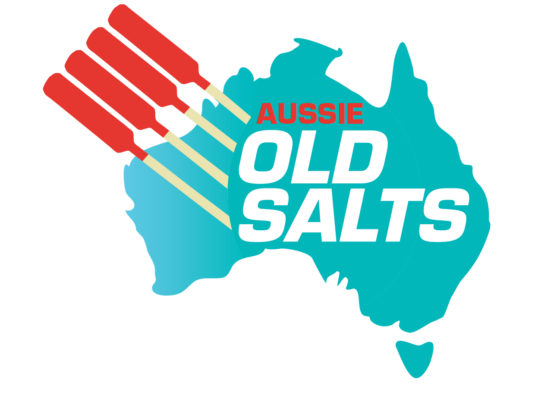
The Aussie Old Salts are four Australians with an average age of over fifty, aiming to make it across safely as quickly as practicable, given our limited training. Three of the four crew members have current or former links to the Australian Defence Forces, and we are fundraising for a military veterans transition centre near Perth. We are also fundraising for a remote area (Kimberley) women’s crisis accommodation centre as well.
Rowers: Payton Henson, Jesse McNeil, Elijah Spray and Ewan Wilson Country: USA Boat Design: TBC Charity: SailFuture Social Media: Website
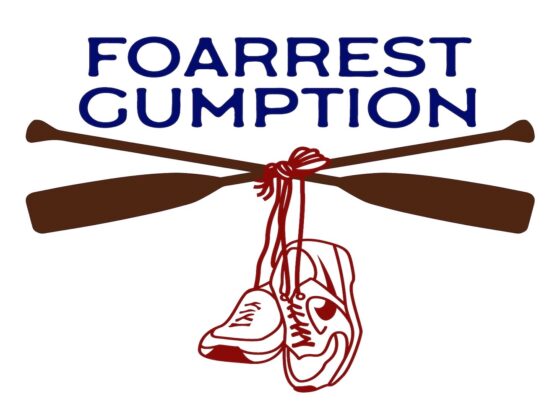
The four of us have spent most of our free time outdoors since childhood, fishing and diving in the Gulf of Mexico, backpacking in the Appalachians, Sierras, and Himalayas, and hunting in Montana and Alaska. When a friend of Evan’s wife Noelle stumbled into the end of the race while working on a sailboat in Antigua, she reached out to Noelle and they put together the team Salty Science (also entered in the 2023 race). After a few weeks of FOMO, Evan reached out to me and we put together our own motley crew, Foarrest Gumption. We’re looking forward to a once-in-a-lifetime adventure.
Providing access to a quality education for underserved youth is a cause we care deeply about. Looking around our local community back in Florida, Evan suggested we work with SailFuture, an innovative foster care program and high school in Tampa, FL. SailFuture has strong ties to the ocean, with portions of their programs taking place on sailboats in the Gulf. Combining access to the outdoors with educational opportunity is a perfect fit for us, so we reached out and were thrilled when they wanted to partner. All revenue we raise above and beyond the cost of the race goes to them, as well as the eventual resale funds from the boat.
Rower: Tom Atkinson, Jordan Parkinson, Richard Parkinson & Paul Roadnight Country: Scotland Boat Design: RX45 Charity: Rock2Recovery, sailors-society.org/ Social Media: Website
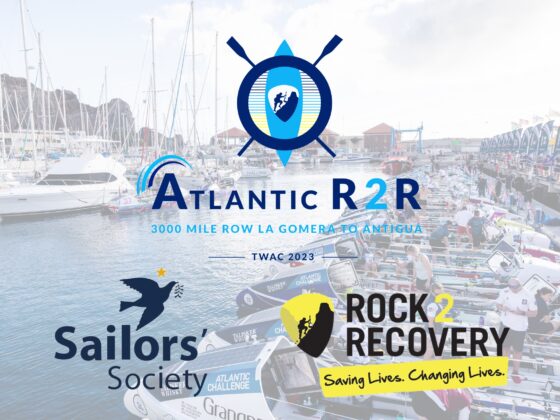
Why: As George Mallory said – ‘Because it is there!’ Atlantic R2R is made up of 2 professional yacht crew, a hotelier, an ex-solider and a current soldier who all hold in common a drive, competitiveness and will to find and test their physical and mental limits – what better place to find and then push these limits that the Talisker Whisky Atlantic Challenge! Although the team come from various backgrounds, the combined qualities, skills and experiences of each team member make for an exciting, cohesive and competitive ocean rowing team and an excellent vessel to raise money and awareness for veterans mental health through their chosen charity Rock2Recovery. Why we have chosen the charity: Mental health is a subject close to many members of the team, but veterans mental health in particular is close to Tom and Paul since the death of a friend and former colleague due to mental health issues. Rock2Recovery was founded by Jamie Sanderson RM and Jason Fox RM following long careers as senior ranking Royal Marines which resulted in medical discharges after diagnoses of stress illness and brain injury. R2R strive to creat positive change when it is needed most and following their unique experience they recognize the need for rapid preventative interventions, specific coaching and assistance, including the provision of short and long-term refocusing support for veterans leaving the service with brain injuries and mental health issues attributable to their period of service.
Rower: John Aston, John Solosy, Richard Janes & James Bracey Country: England & Wales Boat Design: RX45 Charity:Norfolk Community Foundation Social Media: Website

This is a once in a life time event. The team have a previous military connection and bond which we hope will stand us in good stead to complete this 3,000 mile adventure. We want to inspire and raise awareness for some great charities.
Two of the team live in Cardiff, Wales and the other two in Norfolk. The charities cover our respective geographical locations but importantly include common ambitions/objectives around supporting health and wellbeing, maritime conservation and smaller charities in Norfolk. The rowing crew all have young (ish) children and want to support health, welfare and conservation…we hope this will help to raise greater awareness of the fragility of the world but also its beauty.
Rower: Nia Baylis, Caroline Tranter, Pammie Tyson & TBC Country: Antigua, United Kingdom, Canada Boat Design: RX45 Charity: The Friends Foundation, Antigua & Barbuda Social Media: TBC
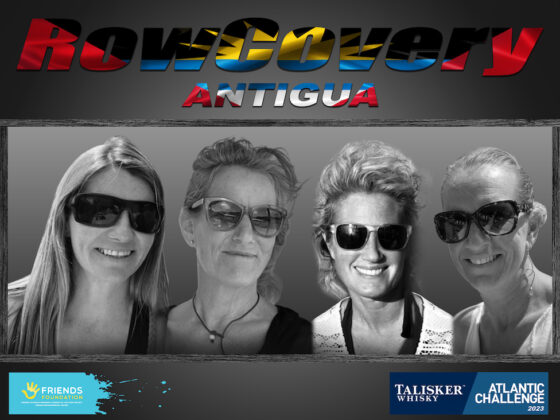
As a team of four women, in December 2023 we will embark on a journey of a lifetime, pushing the boundaries of human endurance and discovering our personal limits. Beyond challenging ourselves, our ambition is to increase awareness of mental health and highlight the need to recognise and support each other when faced with demanding situations.
Undertaking this row will take courage, wisdom and resilience beyond anything we’ve encountered before. Collectively we are all driven by a belief that together we can do more than what we can do alone and when equipped with a positive mindset and unequivocal support, anything is possible.
When a challenge this demanding presents itself in life and seems unimaginably hard and out of reach, it’s perseverance and commitment that will help us overcome. And with the words of of Kurt Hahn echoing in the background – “We are all better than we know, if only we can be brought to realise this, we may never be prepared to settle for anything less”.
Our ambition while taking on this challenge is to increase awareness for mental health and raise funds for the Friends Foundation in Antigua.
The Friends Foundation is an independent non-profit organisation that helps mentally and physically challenged children and their families in Antigua & Barbuda.
Rower: Joseph Leach, Guy Phillips, Craig Foreman & Dave Figgins Country: United States Boat Design: R45 Charity: Fight Oar Die (FOD) Social Media: Website
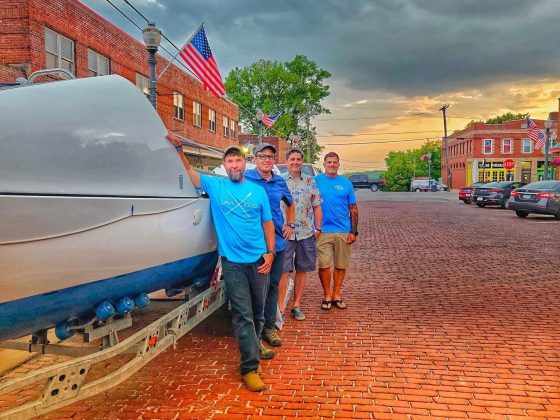
Fight Oar Die (FOD) is an all-American all-veteran volunteer non-profit (501C3) organization established to support U.S. Veteran’s mental health.
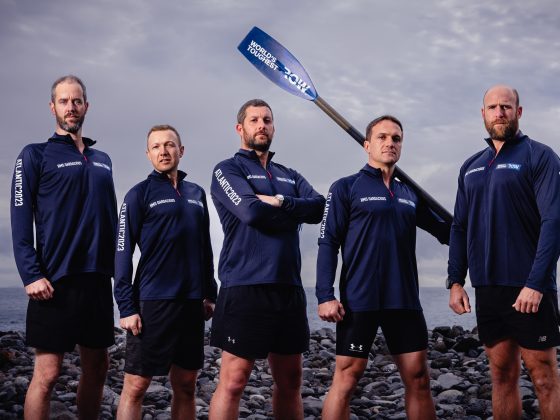
Rower: Matthew Main, Daniel Seager, Ian Allen, Micheal Forrester & Rob Clarke Country: United Kingdom Boat Design: RX45 Charity: The Royal Navy & Royal Marines Charity (RNRMC) and the Submariner Memorial Appeal Social Media: Website

We are Royal Navy Submariners; having taken part in the 2019 Talisker Whisky Atlantic Challenge we found our culture as submariners really harmonised with the extreme environment of “the World’s Toughest Row”, whether it was knowing everything there is to know about our boat, looking out for our crew mates, managing watch systems all while contending with sleep deprivation and dealing with the emotions of leaving our loved ones. Fortunately, one of the greatest strengths of the Submariner is being able to maintain a sense of humour in some of the very worst conditions. This humour really is a cornerstone to our ethos; when the sea going vessel you choose to call home for upwards of 3 months at a time chooses to sink, remaining positive and being able to laugh really is essential. HMS Oardacious are back to showcase our professionalism and adaptability as Submariners, pushing ourselves both physically and mentally. Our bodies and minds will again be tempered by the sheer vastness of the Atlantic Ocean; Neptune will again throw his fury upon our little craft and he will be met by Submariners, laughing back at him! Having previously fundraised over £100,000 in support of Mental Health initiatives, we continue to build on our legacy working with our service charity RNRMC, to provide Mental Health and Wellbeing support to our community: serving submariners, veterans and their families through life. Heritage and remembrance are also significant parts of our ethos, recognising all those who made the ultimate sacrifice for their country; we are therefore proud to also be supporting the Submariner Memorial Appeal to create a fitting memorial to submariners who lost their lives in the service and to the sacrifice of their families.
- Nonprofit Resources
- Support Charity Navigator

- Best Charities
- Charities with Perfect Scores
- Charities Rated Highly by their Participants
- Women's Advocacy
- Support Animal Welfare
- Mental Health
- Popular Charities
- Community Choice Awards
- Charities Everyone's Heard Of
- Most Followed Charities
- Most Frequently Viewed Charities
- Where To Give Now
- Humanitarian Crisis in Israel and Gaza
- Humanitarian Assistance in Sudan
- Ukraine Relief & Recovery
- Protect Your Giving
- Avoiding Charity Scams
- Protecting Your Data
- Avoiding Online Scams
- Giving And Taxes
- Donation Bunching
- Charitable Deductions
- Tax Benefits
- Estate Planning
- Donor Tools
- Giving Basket
- Volunteer Opportunities
- Estate Planner
- Giving Circle Finder
- Give a Donation in Your Loved One’s Name
- Donation Refunds
- Cost Per Outcome
- Support Underfunded Charities
- Pros and Cons of Community Foundations
- Why Did a Charity Send Me Money?
- Introduction to Effective Giving
- Does My Small Donation Really Matter?
- Charity Spotlight
- Capital Region Sponsor-A-Scholar
- DuPage PADS
- The Brotherhood Sister Sol
- Other Ways To Give
- How to Donate Food and Prevent Food Waste
- Why Aren't Donated Clothes Always Given Away for Free?
- Best Items to Donate to an Animal Shelter
- Donations Asks from Friends & Family
- Contact Us/FAQs
- Knowledge Base
- Update Your Nonprofit's Profile/Rating
- Become a Sponsor
- Board of Directors
- Standing Board Committees
- Expert Groups
- Council of Nonprofit Leaders
- Thought Leadership & News
- 2024 Methodology Enhancement
- Reflecting on 2023: A Year of Challenges and Growth in Philanthropy
- 2023 Holiday Season Donation Trends
- 2023 Fall Methodology Update
- Donors Prefer Charities that Earn All Four Beacons
- Why Advisories are now Alerts
- Our Methodology
- Curated Lists

Error attempting donation
You're too fast.
Your donation attempt encountered a problem. Please refresh the page to try again.
You're faster than our page! Give the page a little longer to finish loading and try your donation again.

Making a Difference Starts Here
Find and support charities that align with your passions.
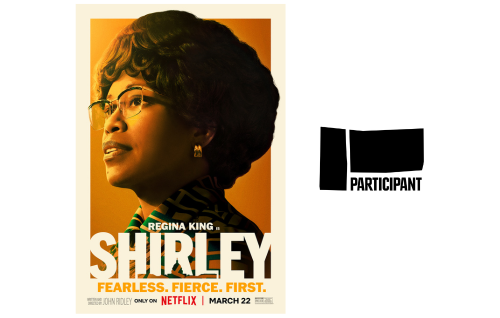
Women’s Advocacy
Charities Advancing Shirley Chisholm’s Legacy
Inspired by ‘SHIRLEY,’ we’ve created a list of highly-rated charities focused on advancing gender equity, labor rights, and voter rights.

Charity Navigator is a research tool for anyone looking to make a difference.
You can use Charity Navigator to find and support thousands of charities that align with your passions and values. We use data from the IRS, partners, and the charities themselves to power our unbiased ratings so that you can give with confidence.
VISITORS ANNUALLY
CHARITIES RATED
DONATED VIA OUR GIVING BASKET
THE SMART, EASY WAY TO GIVE
Donate with the Giving Basket
Charity Navigator's Giving Basket empowers you to support multiple charities in one convenient checkout while controlling how much of your information you share with each organization.
Book holidays and donate to charity for free!
Please note: we are closed on 6th may 2024 for the early may bank holiday. we will be open as usual from 7th may..
- [email protected]
- Mon-Sat 9am-5:30pm

Reservations
- 020 3092 1288
Luxury Travel
- 020 3092 2558

As seen in Charitable Traveller!
Atlantic City is a hidden gem along the New Jersey shoreline, offering visitors much more than a seaside destination.
From top-notch dining experiences, luxury hotel accommodations, spectacular entertainment, and more, Atlantic City is the perfect destination for a fun and safe getaway.
Looking to relax and recharge? Atlantic City has the answer! Pamper yourself at one of the world-class spas where you will be taken on a journey of pure relaxation. From a Himalayan Salt Grotto to Rhythm & Motion rooms, each spa offers an experience of its own.
Shopping never goes out of season and Atlantic City’s Tanger Outlets The Walk on Michigan and Atlantic Avenues feature more than 50 national retail brand outlet stores such as Michael Kors, Coach, Kate Spade New York, Under Armour, and Victoria’s Secret just to name a few. Need outdoor attire, equipment or accessories? Bass Pro Shops is the ultimate outdoor world and offers the area’s largest selection for hunting, fishing, camping, boating, and more.
Did you know that Atlantic City is home to more than 50 murals? Stories behind the artists’ works are as touching and moving as the murals they create, and these permanent public works of art show the heartbeat of Atlantic City.
Whether a tour at one of the region’s historical wineries or a trip to nearby Smithville Village for its quaint shops, any time is a good time to visit Atlantic City and the surrounding areas.
If you’re winding down after a long day or meeting up with family and friends, Atlantic City offers a host of happy hour specials suitable for all budgets. Sip, sample, and let the conversations flow.
With so much going on, it’s no wonder Atlantic City was named in the Top 3 Fall Travel Destinations by TripAdvisor!
Find out more at www.touratlanticcity.com
Join us on a 30-minute holiday to Atlantic City with the Travel Insider Podcast!
Hosted by Bec Miles, editor of Charitable Traveller Magazine, Charitable Travel’s Travel Insider Podcast lets you in on Travel’s best-kept secrets, hidden gems, and unforgettable experiences. Famous for it’s golden beaches, retro boardwalk and glamorous casinos, Atlantic City, New Jersey is one of America’s most beloved seaside resorts. For this episode, we are joined by Heather Colache, Director of Tourism from Meet AC and Meg Lewis, Executive Director of Marketing for Resorts Casino in Atlantic City.
Laura Gelder, Editor of Charitable Traveller Magazine : Hello and welcome to Charitable Travel’s Travel Insider Podcast. My name is Laura Gelder and I’m the editor of Charitable Traveller Magazine and the host of this podcast series otherwise known as TIPs. Today, we’re going to whisk you away to the U S for some vitamin C, spelt S-E-A of course, because we’re going to be sharing some great travel tips for one of America’s most beloved seaside resorts, Atlantic City.
This all-American playground sits on the Atlantic coast of New Jersey, just one hour from Philadelphia. And it’s famous for its golden beaches. It’s retro boardwalk with all the fun of the fair. And of course, it’s glamorous casinos, but Atlantic City has so much more to offer than this as you’ll discover, if you like your holidays, action packed, then keep your ears peeled for details of thrilling fun fair rides, wildlife watching excursions out in the sea. Water sports galore and a star-studded calendar of events and concerts to entertain you. If that makes you feel a bit tired, fear not. We’re also going to tell you how to kick back and relax in AC. There’s an incredible choice of restaurants serving cuisine from every corner of the globe, endless streets of fun bars and funky nightclubs and tax-free shopping of course, if retail therapy is your way of pampering yourself. So, sit back and relax. Get ready to take a wander down the world’s first boardwalk with us. I want you to feel the sea breeze in your hair, taste the sweet flavour of saltwater taffy, and hear the sound of the crashing waves mingling with the jingle of those amusement rides.
So today I’m joined by two Atlantic City locals ready to pass on their tips for getting the most out of their home. I’m delighted to have Heather Colache, director of tourism from Meet AC, which is Atlantic City’s Convention and Visitors Bureau, and Meg Lewis, executive director of marketing for Resorts Casino in Atlantic City.
Okay, thanks so much for joining us today, Heather and Meg. Heather, can you tell us what makes Atlantic City so famous and so unique? It seems to have this reputation as quite a quirky place, kind of an adult playground. Is that fair to say?
Heather Colache, Director of Tourism from Meet AC: Atlantic City actually is a year-round destination. We are an island surrounded by water, and our claim to fame is we are a destination with gaming. So, we have six casino resorts along the Atlantic Ocean and three in the Bay Area, add entertainment and amazing restaurants. And then you have the best adult vacation. However, we do have something for everyone. So Atlantic City and our attractions are legendary.
We have America’s first boardwalk, which is, I guess, a city street that is made out of wood. And it goes along five miles along the Atlantic Ocean there’s shopping restaurants, resorts, hotels, and a lot of things for families to do. So, we do have something for everyone.
Laura: So, it sounds like, it’s a real vacation kind of place. Is it easy to get to? And how would you recommend including it in a holiday Meg?
Meg Lewis, Executive Director of Marketing, Resorts Casino, Atlantic City: It’s actually very easy to get to. We’re centred between in Manhattan, New York, Philadelphia, and Washington, D.C, once a visitor lands in any of these areas. It’s very easy to jump on a train, [or a] a bus. Car rentals are very easily available. Another great airport to fly into is Newark Airport, which is actually right in the state of New Jersey. So, there’s four ways to easily get to us and then use us as a home-base to get to any of these other destinations, which are about two hours from us.
Laura: Sure. And how would people include it in a holiday? Do you think that they, they have it as a long break or a city break?
Heather: That’s a great question. And we do a lot of twin city tours with Philadelphia since they’re only 60 minutes from us. So Atlantic City is well-positioned. Atlantic City is within a day’s drive of a third of the nation’s population.
So, it’s an easy drive destination, a lot of our vacationers, especially Brits will come in, they’ll make Atlantic City their home base, and then they’ll do day trips to these different destinations. We also do a lot of packages and tours with Lancaster, with D.C, with different destinations that are a short drive from Atlantic City.
Laura: Obviously Atlantic City is the fun part of that trip?
Heather: We’d like to think so.
Laura: Yeah. So once we’re in Atlantic City, what are the sort of main areas to explore and how do you get about. Is it easy to get about? Heather?
Heather: Atlantic City is quite small and it’s easily walkable. Our legendary Atlantic City Boardwalk is five and a half miles long. It runs along beautiful white beaches, and the Atlantic Ocean. People can bike ride there. They can take taxis. If you want to go over to the Bay Area, which is about a three-minute drive from the ocean. Also, we have form of transportation called the jitneys and jitneys are little minibuses that run 24 hours a day, $2 and 50 cents to take a ride. They’ll take you anywhere within Atlantic City.
Another way to explore Atlantic City is by tours. We have several different, interesting tours. We have over 500 restaurants in Atlantic City so of course we have a fun foodie tour. You can go souvenir shopping. You can go bar hopping. We have a lot of neat and quirky attractions.
We have the tallest lighthouse in New Jersey and the third tallest in the United States. We also have dolphin watching, biking tours, birdwatching. We have about 32 golf courses in and around Atlantic City, if someone’s interested in golf and of course fishing as we’re right on the Atlantic Ocean.
Laura: You mentioned that the Jitney I’ve never heard of that before, is that name exclusive to Atlantic City?
Heather: It was, it was actually coined in the early 1900s and jitney does have a meaning to it. And it’s, I think Meg, correct me if I’m wrong. It used to be a wooden nickel is what a jitney was called, and it was a nickel to ride the jitney back when it first started. So, it does have history in Atlantic City. It certainly has changed over the years, but they are a great way to see the city.
Laura: Yeah, it sounds. And obviously not as cheap as a nickel. But it’s still pretty cheap! And you mentioned quite a lot of restaurants and bars in Atlantic City. Could you tell us about some of your favourites, Meg?
Meg: As Heather mentioned, there are hundreds of restaurants and bars located in Atlantic City. I have three favourites that I could talk about right now. The Knife and Fork Inn, which is known for its lobster thermidor, which is absolutely delicious. It was originally opened in 1912 and its architecture and the atmosphere there is just amazing. The same owners that own the Knife and Fork also own a restaurant in Resorts Casino Hotel.
Meg: There’s Dougherty’s Steakhouse, and the name says it all. Steak and unbelievably delicious steak. One of my favourite casual restaurants is the Back Bay Ale House located in historic Gardner’s Basin, which is situated on the bay in Atlantic City. The outdoor dining is unbelievable there. It’s fun to order specialty cocktails and they have light fair there. And you sit outside and watch the boats come and go.
The beach bars in Atlantic City, you can’t miss them. There are five located right on the beach, along the Boardwalk. One of them, Landshark Bar and Grill is open year-round, and it’s the only year-round beach bar on the entire east coast of the United States. It’s located on the North Beach side of the Boardwalk, right in front of Resorts Casino Hotel. And it’s really fun to sit out there while it’s snowing and you can see the snow while you’re sitting on the beach, obviously there’s windows, but you’re nice and warm inside watching it snow over the Atlantic Ocean. It’s absolutely gorgeous.
Laura: So would it be fair to say to Atlantic City is quite lively?
Meg: Very lively, and any cuisine you desire you can find in Atlantic City.
Laura: That sounds like a challenge.
Meg: We have the White House Cheese Steak Sub Shop that has been around since the 1900s. What do you think Heather? 1920s?
Heather: I would say 1930s.
Meg: 1930s. People from all over the world come for a White House Cheese Steaks. And they actually ship all over the world and that is definitely a hidden gem on one of the back streets in Atlantic City. That is a must try.
Laura: Did you say a cheese steak?
Meg: Yes. It’s chipped up steak with melted cheese and fried onions on a hard, long roll. And you eat it with French fries.
Heather: And what’s unique about our cheese steaks is that, Atlantic City has won awards for our water quality. I guess my thing is that when you taste the bread in Atlantic City, it tastes so much better than what you would buy in the store.
Meg: Like you cannot make Atlantic City bread say, in Florida.
Laura: Is there a special kind of bread in Atlantic City?
Heather: It’s a sub roll, which is like, it has like a hard crunchy outside, but it’s really soft inside. And that’s what they normally use to make all the cheese steaks. All the restaurants, get their rolls from these bakers. You know, it it’s just the quality of it.
Meg: We’ll have to mail you some of it.
Laura: Won’t be quite as fresh when at arrives, though.
Heather: All of the rolls that are used within not only Atlantic City, but South Jersey come from two bakeries. And literally you have to taste it. Sometimes when I come into work at seven o’clock in the morning, there’s a line of 30 people deep trying to get their cheese steaks for lunch.
Laura: Okay. That sounds like a must then. Yeah. And there’s quite a lot of breweries in Atlantic City as well is that right?
Heather: We actually have one brewery called The Seed. It’s actually an organic brewery. We also have a distillery, however, in our area. We have something called the Wine and Ale Trail within the surrounding communities. They have had breweries and wineries pop up that have won awards all over the world. So, there are certain tours that leave at different times of the day that they can go on these, The Wine and Ale Trial.
Laura: And, after all this food, then we’re going to need to do some activities. So Heather, can you tell us about some of the activities that you can do in Atlantic City? I guess there’s quite a lot of water sports?
Heather: There is. One of the main things I just want to mention is swimming. Of course, in season when we are on the Atlantic Ocean, we are one of the beaches that are protected. So, we have lifeguards that man the beaches, so everyone feels safe. We also have surfing, we have a surf school that will give lessons to teach people how to surf. We don’t have the big waves, like some of the other destinations, but we do pretty good. Fishing, again, we have back bay fishing, which is calm water. So, you don’t get seasick or for those serious fishermen, they can go out onto the Atlantic Ocean and fish for tuna. Dolphin watching, uh, golfing again.
We actually have outlets right in the middle of our city, which offers tax free, shopping on clothes and shoes. Again, one of my favourites, I unfortunately live very close to the outlets I’m there constantly. We have award winning spas. You can bike on the boardwalk and foodie tours again for all of our amazing restaurants.
Laura: And obviously there are some really impressive casino resorts in Atlantic City. Could you tell us a bit about them, Meg, and also what other accommodation options there are?
Meg: Sure, we have nine casinos in Atlantic City and every casino has its own uniqueness. You aren’t feeling lucky at one, it’s very easy to jump over to another one and change your day.
Our casinos are open 24-hours and they offer free beverages on the casino floor as well as designated smoking areas. The sizes of the casinos range from 900 rooms and 1600 slot machines to over 2000 rooms with, over 5,000 slot machines. So, there’s something for everyone’s price point. Of course, each casino has multiple table games and most have sports betting.
Three of our casinos are located in the Bay Area and six along the beach and Boardwalk. North Beach side of the Boardwalk features three casinos working together to promote fun and excitement. It’s a first and unique experience in the industry. Resorts Casino Hotel, Hard Rock Casino, and Ocean Casino have teamed up with Steel Pier, a historic pier located right on the ocean and Showboat Hotel, a non- casino hotel located in this section, these three casinos work together to promote the North Beach area do in such things as festivals at this end, fireworks, things like that to promote this end of the Boardwalk. The other two, as I said, where the Bay and the South Boardwalk. The South Boardwalk consists of three casinos as well.
There’s Caesar’s Casino, Bally’s Casino, and Tropicana Casino and Hotel down there. Over on the Bay Area we have MGM, Harris and Golden Nugget. There are many non-casino hotels in Atlantic City as well. In addition to the non-casino hotels we have, there are accommodations for every price point here. There are bed and breakfasts, hotels, casino hotels, chain hotels and actually right outside of the city, in our next beach town up, you can rent an entire house.
Laura: Obviously, the casino resorts I guess are, the focus of Atlantic City, and they differ quite a lot. Do they, do they have sort of a different feel and different themes to them? They appeal to different people?
Meg: You can definitely find different casinos. We have very modern, we have very historic. Because some of the casinos were built actually from historic buildings.
Laura: The other thing that I know about Atlantic City is that, there’s a lot of big bands and singers and acts that turn up in Atlantic City. So, entertainment seems to be quite big business. Is that fair to say?
Heather: Absolutely. We are known for our entertainment and it’s year-round entertainment. So historic Boardwalk Hall is a 13,000-seat arena and we’ve brought anyone from Lady Gaga. To a rodeo. We also do ice hockey in there and flag football. There literally are such amazing programs that they bring to, uh, Boardwalk Hall. They do Christmas entertainment. They’ll bring in Latin and Asian entertainment, really something for everyone, but it’s not just Boardwalk Hall, every casino has a showroom or has lounges that they do nightly entertainment in. Country/Western acts, we have beach concerts on the boardwalk and also Steel Pier which has been around for a very long time also brings in acts onto the Steel Pier. And one of our major events is Thunder Over The Boardwalk, which happens every August. It’s a military air show free to the public, but you can see it from any angle and anywhere you’re standing in Atlantic City, whether you’re swimming, whether you’re on your boat or just sitting on the beach, it’s really, truly amazing.
Laura: Okay. It sounds, you mentioned quite a few different seasons there’s it sounds like it’s year round. Um, but is there a particularly good time to visit? If you’re looking for, you know, lots of concerts and lots of festivals and things going on?
Heather: I would say the best thing to do is visit our website, which is atlanticcitynj.com into the calendar of events, because Atlantic City’s notorious for putting things on there last minute. We didn’t realize we were going to have beach concerts and then, you know, two months ago, a huge string of beach concerts popped up on the calendar. So, because everybody is promoting it differently, I always tell people to be on the safe side, check it out. Um, of course, summertime will be the most robust with entertainment, but truly you can see something in Atlantic City all year round.
Laura: Yeah. It sounds like. Okay. That’s a good tip. Thanks for that. So, when I think of Atlantic City, I seem to get quite retro images in my head and I get the impression that it’s quite quirky. Can you tell us a little bit more about some of Atlantic City’s more unique attractions Meg and, maybe give us some, some hidden gems that tourists might miss.
Meg: We have a lots of hidden gems. Heather has mentioned a couple already, but I can just go over them again quickly. We just absolutely love our Atlantic City, cruises, which does dolphin watching daily also does sunset cruises, which are very nice. And he does some Back Bay history. He can do some ecological tours that appeal to children and families of all ages. You can grab a beverage on board of that and enjoy all of the sites. We have actually two locations of miniature golf on the Boardwalk. One is located in the North Beach section and one in the middle of town in the Boardwalk. There’s a huge indoor arcade located at the Showboat, which is a non-casino property in the Northeast section. It was a casino at one time. And actually the arcade has taken over the casino floor there, and it will soon the showboat house, a waterpark and indoor go-karts. So that will be a fun place for everybody to visit. Right across from Showboat and the Hard Rock is this historic Steel Pier that Heather had spoken about. It extends about a thousand feet into the ocean and it’s home to amusement rides, fun Boardwalk games, a large observation wheel, a crab house, and grab and go snacks. It has two bars and live entertainment, seven days a week throughout the summer. Boardwalk Hall that Heather spoke about is another great historic site in Atlantic City.
It’s actually home to the largest and oldest organ in the world. The pipes of the organ are actually built into the walls of Boardwalk Hall. Um, they have free tours every Wednesday. You can go in and go into the back and see where the pipes are and it’s just amazing how it was built. And of course visitors can’t miss our lighthouse.
That’s located in the Northeast section of town. Heather had mentioned it’s the third tallest in the United States and it’s the tallest in the state of New Jersey. It has 228 steps to get up to the top though. I think it’s doable, but some good exercise. One attraction that you can’t miss is Lucy, The Elephant.
Lucy The Elephant is actually located in Margate City, which is about five miles south of Atlantic City. Very easy to get to though it’s a straight run. Lucy is a six-story high elephant. And it was originally built in 1881 and it was put in Margate to promote real estate sales in the area, though. It is a must-see you can actually go into Lucy The Elephant. Um, and sometimes they create a sleepover and Lucy The Elephant, uh, as a special event. And it’s just absolutely amazing to look at. And just a few more last, see attractions. We have Ripley’s Believe It Or Not, outlet shopping, the Windmill Farm, breweries, distilleries, axe throwing. We have jitney rides and fishing, golf. Heather has mentioned most of them. So, there is plenty to do here. I think you’d have to come for a month to catch it all.
Laura: Yeah, definitely. So, and what is inside Lucy The Elephant?
Meg: Lucy has stairs. It’s kind of like a lighthouse. It’s got a gift shop and when I was a kid, it actually had a little library in there. They’re actually undergoing renovations to her right now. Is that correct? Heather? They’re still doing that?
Heather: They are actually inside is a museum. Um, they play the history of how she came about, and then you can walk up to the howdah, which has a 360-degree view of Margate, Atlantic City and the surrounding area. It truly is unique.
Laura: Yeah. That’s certainly something I’ve not heard of before, but it’s definitely unique. I was going to ask about the Pier, the Steel Pier actually. Um, cause it seems like that’s quite an iconic part of the city and it sounds like it’s kind of like an old fashioned fairground.
Heather: It has rollercoasters. I mean, it has a lot of rides. It has like carnival games on it and then it has like the fair, like cotton candy, um, funnel cake. They have the observation wheel. They also have helicopter rides. Um, it’s one of the only helicopter pads in Atlantic City. I think the other ones at the hospital and it’s right in front of Hard Rock Casino.
Laura: Okay. So you, you can take off on a helicopter from the pier, is that right?
Heather: Yes! They do city tours.
Laura: And so, they just fly you up and down so that you can see everything?
Heather: They do it like a kind of like a skyline tour, I mean, because it’s such an iconic pier, it was opened in 1898 and Donald Trump owned it at one point. He leased it to a family for 99 years, then they ended up buying it. At the Catanoso family now owns it and maintains it and they’re always updating it with new and unique attractions.
Laura: Is there a kind of entrance price, like a theme park? Can you just go on and you just decide what rides you want to go on?
Heather: You can do a couple of different things. You can buy ticket books or you can buy day-long wristbands. So, where you can simply just stroll on the pier and check everything out before you decide what you want to do.
Laura: Have some cotton candy whilst you decide?
Heather: You can have cotton candy, or you can have cotton candy cocktail, because they have a bar.
Laura: So that’s alcohol. Cotton candy. That sounds dangerous. Well, my next question, Heather was going to be, could you take us through your perfect day and night, I guess? Um, since it seems to be a night-time kind of place in Atlantic city.
Heather: I would love to. So first thing, when you arrive at Atlantic City at your hotel, you can drop your bags at the bell stand and head out for lunch on the Atlantic City Boardwalk. Just sitting there breathing the fresh salt air in taking in all the quirky people that are walking up and down the Boardwalk really sets the stage for Atlantic city. Stroll the Boardwalk, take in the unique sites. Uh, take a ride on Steel Pier’s Observation Wheel. I am afraid of heights, but I decided I was the tourism director and I needed to take that ride. It was amazing. I tried to pretend I wasn’t, 227 feet in the air, but to just get the view of Atlantic City and all the water that surround us was truly unique and it was in the evening. So you get to see the sunset, which was really beautiful. Or if you’re very adventurous, you can take a city skyline helicopter ride, then head back to your hotel, check-in dinner and a show is a must. Atlantic city, we are on the water so seafood is what we are famous for. Fresh seafood, right from the Atlantic Ocean.
And then after the show, which could be comedy, it could be a headliner, or it could simply be in one of the bars in the casino. Try your hand in the casino poker or slot machines. It’s a lot of fun. When you hear the bells ring on the slot machine it’s so exciting, whether it’s a dollar or a hundred dollars, it’s still exciting.
And the next day. The breakfast in Breadsticks, which is my favourite restaurant in Resorts because the views of Atlantic City and the beach and Boardwalk are beautiful. So, breakfast at Breadsticks, go to the beach or do a dolphin watching cruise. Have afternoon cocktails at a beach bar that plays great music, and then perhaps dinner at one of our local favourites.
And we have some truly interesting places to eat. And when you had said before, have you ever went to an interesting restaurant, I have to say in all my years in Atlantic City and I’m a native of this area. I did not know we had an Afghan French restaurant. I didn’t know what that food was and I thought I would check it out. It’s literally in the heart of Atlantic City, you walk in and the courtyard takes you to a different destination and the food is really lovely. And we had a wonderful time there. We do have some restaurants that you bring your own alcohol too, which is, I think very interesting. So you can enjoy your favourite cocktail or wine while you’re having dinner.
Or you can go to one that also serves and has a bar. After you have your dinner, I think that the best thing to do would be to relax in one of the bars in the casinos. Multitude of them, very interesting ones. There’s Margaritaville, It’s Five O’clock Somewhere. You have an eighties bar. Um, if you like jazz, we have a jazz bar. There’s also karaoke in Atlantic City. So, whatever you like, and then unfortunately you’d have to leave the next.
Laura: I know you talked about people watching, I guess, the casinos are very good for people watching and the Boardwalk is probably good for people watching. Is that quite a big activity in Atlantic City?
Heather: It is! along the Boardwalk, there’s a lot of benches. So, people just like to sit and sip a cocktail, just kind of take in the sights and, you know, there’s people from all walks of life and also street entertainers that go up and down the boardwalk. So you never know what you’re going to see. Uh, I think the last week I was on a boardwalk with my grandchildren, and we had an impromptu parade of people that dressed up as dolphins and sharks. It was a beach theme. I thought I got it.
Laura: You didn’t expect that?
Heather: No, but it was entertaining!
Laura: Um, did you have anything to add there, Meg, anything that Heather didn’t mention that you would have in your perfect day?
Meg: My perfect day is sitting on the beach all day and going to a concert at night. That’s my perfect day. So, Heather covered that.
Laura: Okay. So I’ve got a bonus question for one or both of you, and it’s related to Charitable Travel’s Make Travel Count Campaign. So, it’s all about getting people to think about how they can use their holidays to make a positive impact in the world. I just wanted to ask how our listeners can make trouble counts when they visit Atlantic City?
Heather: We work really closely for Charitable Travel. One of the things that Meet AC, which is the company that I work for, loves about that company, is that they give back to different places in the world. And I think just by booking your vacation to Atlantic City or any other destination through Charitable Travel really does make a difference. It’s so refreshing to see something as simple as a travel company, just giving a small percentage to make things better in the world. We love that.
Laura: To find out more and book your next holiday to Atlantic City visit charitable.travel/atlantic-city . Or you can ring up and speak to the team of expert travel advisors. For more information about Atlantic City, you can also visit MeetAC.com
If you enjoyed this episode, click the links below to rate, follow, subscribe and join us as we visit other destinations!
Atlantic City as seen in Charitable Traveller Magazine!
Feeling inspired? See beautiful Atlantic City for yourself. Speak to one of our Travel Experts today to curate your dream trip!
Atlantic City at USA Month 2020
CHARITABLE TRAVEL

Fundraising Futures Community Interest Company, Contingent Works, Broadway Buildings, Elmfield Road, Bromley, Kent, BR1 1LW. England
Putting our profit to work supporting the work of charitable causes

For the latest travel advice, including security, local laws and passports, visit the Foreign & Commonwealth Office website .

© 2024 All rights reserved
Privacy Overview
Support our Racial Equity Journalism
Amsterdam News has been reporting the news of the day from a Black perspective for 113 years. Donors who choose to give monthly or annually will receive Amsterdam News’ Weekly E-Edition and acclaimed weekday newsletter Editorially Black to their inbox!
Thanks for your contribution!

New York Amsterdam News
The New Black View
Heritage tour will look at Atlantic City’s “Northside”

Share this:
- Click to share on Twitter (Opens in new window)
- Click to share on Facebook (Opens in new window)
- Click to share on LinkedIn (Opens in new window)
- Click to share on Tumblr (Opens in new window)
- Click to share on Pinterest (Opens in new window)
- Click to email a link to a friend (Opens in new window)

Sign up for our acclaimed free weekday newsletter Editorially Black
Get the top Racial Equity stories of the day from America’s most influential oldest continuously published Black newspaper, serving the nation’s largest Black and brown community. Sign up to stay connected.
The Atlantic City Walking Tour Series will feature a “Northside Heritage Tour” on July 28th.
The city-sponsored tour is conducted by Stockton University’s Office of Continuing Studies and Adult Education . The series allows participants to actively experience the historical landmarks, events, prominent figures and subcultures of Atlantic City.
The Northside Heritage Tour looks at Atlantic City’s “Northside”; a historically, predominantly African American neighborhood founded prior to the Great Migration. This “city within a city” was originally a result of racial segregation and featured important businesses, professionals, hotels, night clubs and schools owned and operated by African Americans. This tour will visit historical landmarks such as Kentucky Avenue, New York Avenue, St. James AME, and the Civil Rights Garden.
The tour is from 10 a.m. to 12 noon and costs $10/person. For more information, email [email protected] or call 609-652-4227. You can register for the tour at stockton.edu/continuing-studies/ac_walkingtours.html .
Leave a comment
Your email address will not be published. Required fields are marked *
Save my name, email, and website in this browser for the next time I comment.
We've recently sent you an authentication link. Please, check your inbox!
Sign in with a password below, or sign in using your email .
Get a code sent to your email to sign in, or sign in using a password .
Enter the code you received via email to sign in, or sign in using a password .
- Subscribe to our newsletters:
Sign in with your email
Lost your password?
Try a different email
Send another code
Sign in with a password
By signing up, you agree to our Terms and Conditions.

Shore excursions
Atlantik is a leading local tour operator that has been successfully at the forefront of the cruise ship business in Iceland for over 40 years.
Atlantik´s shore excursion team boasts of years of experience, in creating land programs to meet each client’s expectation. We aim to deliver excellence, cost-effective and customized itineraries with attention to detail, giving our clients that little bit extra. We manage shore excursions, private tours, private events and on-board entertainment.
Iceland is a small island in the North Atlantic Ocean that possesses pristine, ever-changing scenery, fresh air and clean water. The diversity of Iceland’s nature is almost limitless, featuring volcano´s & lava fields, towering glaciers & ice caves, roaring mud pools & spouting geyser’s, mighty waterfalls & iceberg lagoons, black sand beaches & weathered mountains and the list just goes on. We offer a broad range of shore excursions in Iceland´s many ports, making Iceland the perfect destination for all cruise ships!
Atlantik´s success is built on the high-quality service our dedicated shore excursion team provides during each navigation. Whether it is a full circumnavigation cruise around Iceland or a call to one or more ports, each port call is handled with accuracy and expertise.
We offer professional yet personal services, often resulting in a rewarding long-term business relationship with our clients.
No job is too big or too small
We manage cruise ships big & small, ocean liners, expedition ships & yachts, pre-post & turnaround services.
The capital of Iceland Reykjavik features a wide selection of modern, luxury hotels, top quality restaurants, and a variety of entertainment to choose from. That makes Reykjavik a wonderful location for pre-post & turn-around programs. The unique scenery surrounding the capital enables us to offer adventurous embark and debark tours.
Atlantik recognizes the significance of first and last impressions. Therefore, the best suitable hotels are selected with care. We manage luggage handling, welcome packs and hospitality desk services. Drivers for private transfers and meet & greet services are handpicked. We organize transit holding areas on arrival or departure days with extra services if requested, such as refreshments or entertainment.
Atlantik´s pre-post & turn-around team is committed to provide first class all-round service. With years of experience our team is skilled to handle matters that can arise during operations, such as the ability to handle flight cancellations, delays, bad weather and other unforeseen circumstances with care and precision. We understand the importance of a swift respond time with appropriate solutions.
During operation, our team offers round the clock services with a 24 hours emergency contact phone number.

Our promise
No other company in iceland can match our wealth of knowledge & years of experience, ports around iceland.
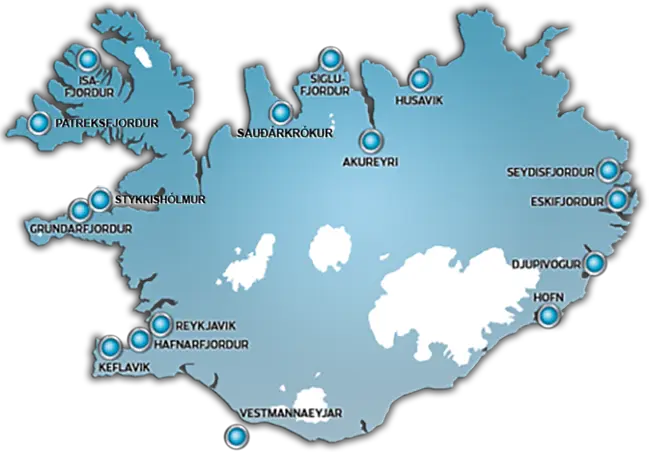
Iceland is an island, with many ports dotting its dramatic coastline. Therefore, Iceland is the perfect destination for cruise ships and expedition ships alike. Whether it is a visit to one or more ports or a full circumnavigation cruise, each region offers a broad variety of shore excursions to choose from. Please find here below information regarding some of the main ports of Iceland.

Popular tours: Golden Circle The Blue Lagoon Whale watching tours Panoramic Reykjavík Port of Reykjavik Skarfabakki Reykjavík is the nation’s capital and main hub in almost every sense of the word. It is the closeness to nature that makes Reykjavík truly special.
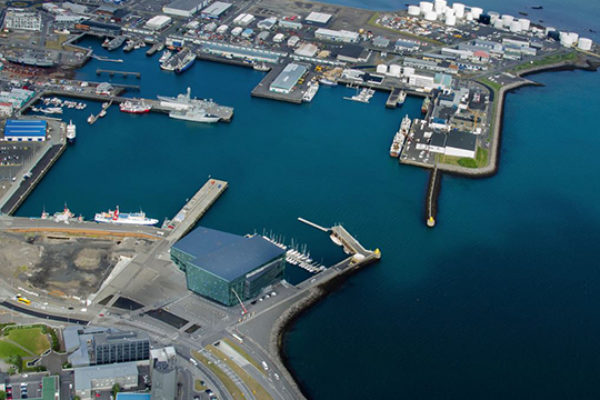
Popular tours: Golden Circle The Blue Lagoon Whale watching tours Panoramic Reykjavík Port of Reykjavik Miðbakki Reykjavík is the nation’s capital and main hub in almost every sense of the word. It is the closeness to nature that makes Reykjavík truly special.

Popular tours: Whale watching tours Mývatn nature baths Godafoss waterfall Port of Akureyri Oddeyrarbryggja Akureyri lies at the bottom of Iceland’s longest fjord, Eyjafjördur. This lively town has only about 18,500 inhabitants but is nonetheless the largest town outside of the capital area and is often referred to as the capital of North Iceland.
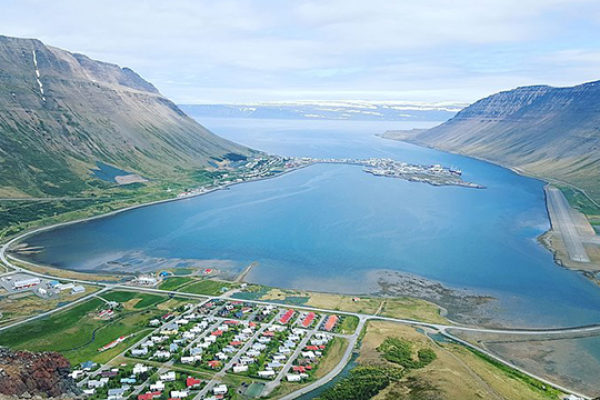
Popular tours: Vigur - Paradise Island Life & culture Ísafjörður and vicinity Alps of the west fjords – Botanic garden Visit to a fishing village Port of Ísafjörður Sundabakki The port of Ísafjörður is the largest port in the Westfjord region of Iceland. Flanked on three sides by towering mountains, Ísafjörður has a near-perfect natural harbor.

Popular tours: Snæfellsjökull National Park Bjarnarhöfn Shark Curing Farm Berserkjagata Hike Puffins and Whales Boat Trips Port of Grundarfjörður Grundarfjörður is a beautiful little fishing town conveniently located in the middle of Snæfellsnes peninsula, surrounded by a magnificent mountain range.
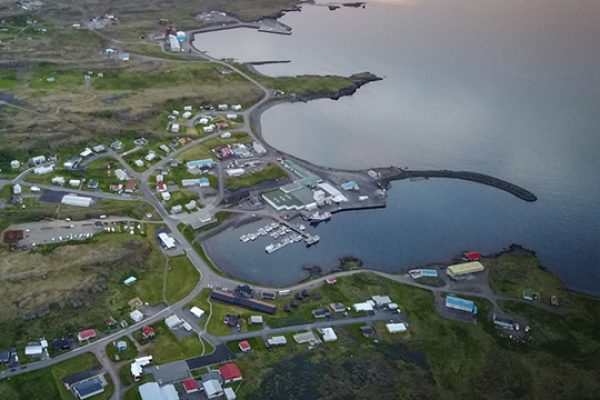
Popular tours: Local nature and birdwatching Glacier lagoon Vatnajokull glacier Port of Djúpivogur Gleðivík Djúpivogur is a charming fishing village on the East coast of Iceland. The village is surrounded by an enchanting coastline, including black, red or light-colored beaches, waterfalls, imposing mountains and even a few small glaciers.
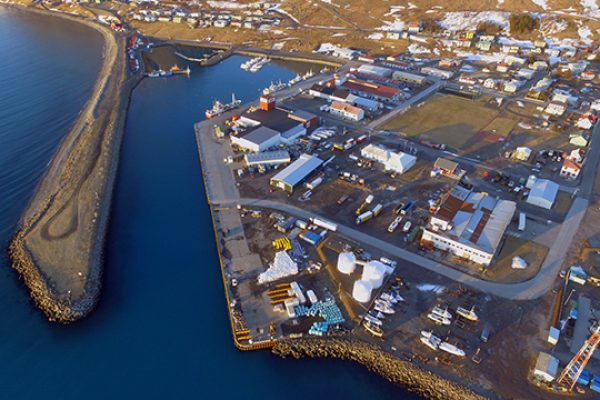
Popular tours: Puffins up close; Látrabjarg cliff Dynjandi Waterfall Hot spring pools Seal watching at Rauðasandur Port of Patreksfjörður Patreksfjörður is the westernmost town of Iceland and the second largest town of the West fjords with it‘s 680 inhabitants. The town has a long history of fishing and trade.
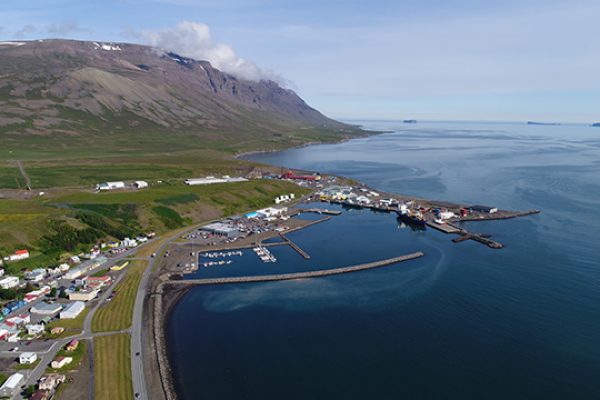
Popular tours: Drangey tours and sailing Horse riding tours & Bird watchin Glaumbær Folk Museum River Rafting Port of Sauðárkrókur Skagafjörður Skagafjörður is a fjord in North Iceland with a population of around 4,200. Skagafjörður has played a significant role in the history of Iceland since settlement.
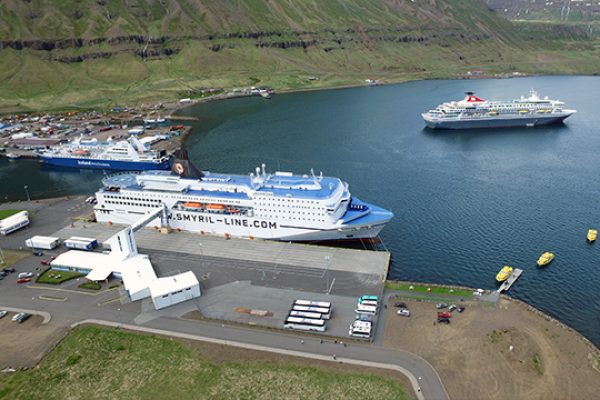
Popular tours: Hike to Hengifoss Waterfall Skálanes nature reserve The scenic east Port of Seyðisfjörður Strandarbakki Seyðisfjörður has been the main destination in East Iceland for cruise ships and ferries from abroad for decades. This peaceful village that lies nestled between the ocean and dramatic mountains.

Popular tours: The Herring Era Museum Segull 67 – Local Beer Brewery Hiking trails & bird watching The Folk Music Centre Port of Siglufjörður Hafnarbryggja Iceland’s northernmost town, Siglufjörður is a historic fishing town whose fame and fortune has always been linked to the ebb and flow of the fishing industry.

Popular tours: Sea tours Bjarnarhöfn Shark Curing Farm Helgafell mountain Tours around Snæfellsnes peninsula Port of Stykkishólmur Stykkishólmur is located by Breiðafjörður bay on the north of Snæfellsnes peninsula and is surrounded with wonderful views of the bay‘s innumerable islands.
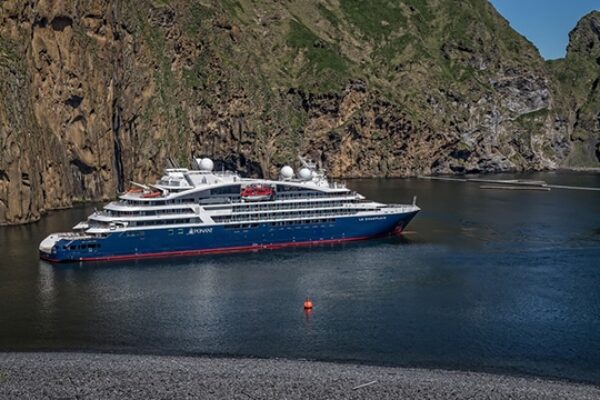
Popular tours: Bus tour around the island of Heimaey Boat tour around the islands Bird watching ATV tour Port of Vestmanneyjar Heimaey Vestmannaeyjar (The Westman Islands) lie 10 kilometers off Iceland’s south coast and consist of 15 islands and several sand rock pillars. Heimaey is the largest island and the only one with a permanent population.
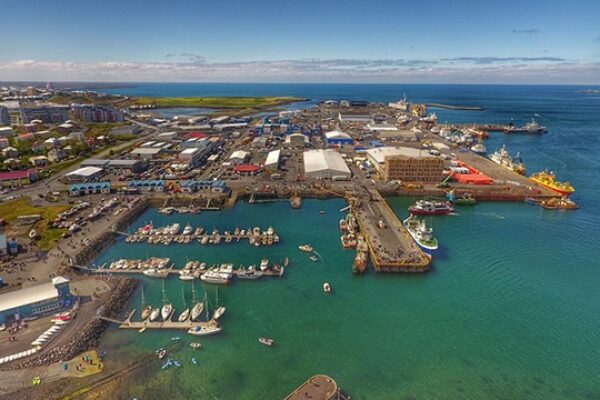
Contact us!

The Atlantik Shore excursion & turn-around team is looking forward to hearing from you. Together we can create exciting land programs and offer you pre-post services that suit your cruise company´s needs based on both interest and budget. We welcome all inquiries!

Atlantik Sudurlandsbraut 4a 108 Reykjavik Iceland
Tel: +354 575 9900
Company: [email protected] Shore Excursions: [email protected] Incentive: [email protected]
IMPORTANT LINKS
Sustainability policy, iceman/íslandsmót, safetravel.is.
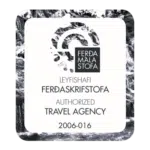

IMAGES
VIDEO
COMMENTS
Bilder von den Crew-Mitgliedern gibt es auf ihrer Instagramseite Nordsee Atlantik Tour. Die Tour: Gefahren werden täglich zwischen 250 und 300 Kilometern. Ausgangspunkt für die Tour ist Papenburg an der Nordsee. Von dort geht es am 13. August über Rotterdam, Dünkirchen, Calais und Le Havre nach Cherbourg-en-Cotentin am Atlantik.
Event in Lüneburg, Germany by Rastenschleifer on Wednesday, May 17 2023
Charity-Tour von der Nordsee zum Atlantik. 3000 Kilometer, 10 Tage, 6 Moped-Begeisterte, 1 guter Zweck: Für die Crew von Nordsee Atlantik geht es im August auf große Tour. Doch
Nordsee-Atlantik Charity Tour Hosted By Rastenschleifer. Event starts on Wednesday, 17 May 2023 and happening at Radio Zusa, Lüneburg, LS. Register or Buy Tickets, Price information.
This 10-minute stroll, accessible for everyone, offers an amazing view over the wild and open Atlantic Ocean. On a clear day you might even spot a whale or a seal on the horizon. After driving across the Atlantic Ocean Road, our journey goes back to Molde, passing the renowned marble quarries of Eide. Before going back to the meeting point of ...
7 friske opplevelser ved Atlanterhavsveien. Watch on. 1. A floating delight. With the new tourist attraction on the Atlantic Road, you can soar along the 550-metre-long walkway with the Atlantic breeze caressing your face. The floating walkway is made of latticework floating above the terrain, supported by poles.
While the 2020 outbreak of COVID-19 will undoubtably affect the sector in the long term, the motivations that inspire people to travel and to give are not so easily quelled. Trends in philanthropic giving in the U.S. show that while the number of people giving to charity is decreasing, wealthier donors are giving more and more (GivingUSA, 2019).
Norway's Atlantic Ocean Road is a major tourist draw. This mesmerising five-mile stretch of Norway's route 64 has graced both the small and big screens numerous times since its inauguration in 1989. The fame has made it a popular destination for road trip enthusiasts and film buffs alike. Deemed one of Norway's 18 national scenic routes, the ...
8 likes, 0 comments - Nordsee Atlantik Tour (@nordseeatlantik) on Instagram: "Es geht langsam in die heiße Phase…unser Tourplaner @nobby_naf kennt mittlerweile jeden Bordst..." Nordsee Atlantik Tour on Instagram: "Es geht langsam in die heiße Phase…unser Tourplaner @nobby_naf kennt mittlerweile jeden Bordstein in den Niederlanden, Belgien ...
131 likes, 8 comments - Nordsee Atlantik Tour (@nordseeatlantik) on Instagram: "Schweiburg war ein voller Erfolg. Wir wurden vom @ndrdoku begleitet und auch von @kinderhospiz.jo..." Nordsee Atlantik Tour on Instagram: "Schweiburg war ein voller Erfolg.
Charity Challenges are for groups with two big goals — raise funds and travel the world. Imagine your nonprofit raising money for its cause while conquering a physical challenge in a prized adventure travel destination. Elevate's Charity Challenges connect your nonprofit to inspiring, hand-picked, active adventures in places like Peru ...
About Us With over 175 years' combined experience in the travel and tourism industry, as hoteliers, tour operators, travel agents, sustainable tourism and media experts, our volunteer trustees and experienced team are supremely capable of achieving our objectives to help those suffering disadvantage in destinations dependent on tourism income, when that income is affected. We […]
To give you a better experience, we use our own and third-party cookies. You can read more about them in our cookie policy.
Onboard Norse Atlantic. The 787s are simple but lovely inside, even way in the back of the plane. On my Thursday afternoon flight from Gatwick to New York, the back of the plane was relatively full. But as you moved toward the front of the plane, the cabin got more and more sparse thanks to heftier seat selection fees.
We formed the New England Classic Charity Bike Tour, a 501 (c)3 non-profit organization. The NECCBT is completely volunteer-run, with no paid staff and no office. This keeps our overhead low so that all net proceeds from the ride can be donated to charity. Our organizing team includes veteran riders and volunteers from past New England Classics ...
Why we have chosen the charity: Mental health is a subject close to many members of the team, but veterans mental health in particular is close to Tom and Paul since the death of a friend and former colleague due to mental health issues. Rock2Recovery was founded by Jamie Sanderson RM and Jason Fox RM following long careers as senior ranking ...
Flights, Tickets and Deals on Norse Atlantic Airways from 262€*!. One-way. expand_more
Use Charity Navigator's ratings and resources to find and support highly rated charities that align with your passions and values. Whether you're looking to give toward international relief, the environment, animal welfare, or something else, we empower you to donate and volunteer with confidence.
Visit Atlantic City with Charitable Travel and donate to charity! Reservations. 020 3092 1288.
Atlantik has been the leading local tour operator for the cruise industry for almost 40 years, serving every port around Iceland. We continue to lead the way, running a wide range of quality shore excursions and turnaround programmes to suit your needs. If you are looking for creativity built on experience, you will find our team both motivated ...
The tour is from 10 a.m. to 12 noon and costs $10/person. For more information, email [email protected] or call 609-652-4227.
Atlantik is a leading local tour operator that has been successfully at the forefront of the cruise ship business in Iceland for over 40 years. Atlantik´s shore excursion team boasts of years of experience, in creating land programs to meet each client's expectation. We aim to deliver excellence, cost-effective and customized itineraries ...